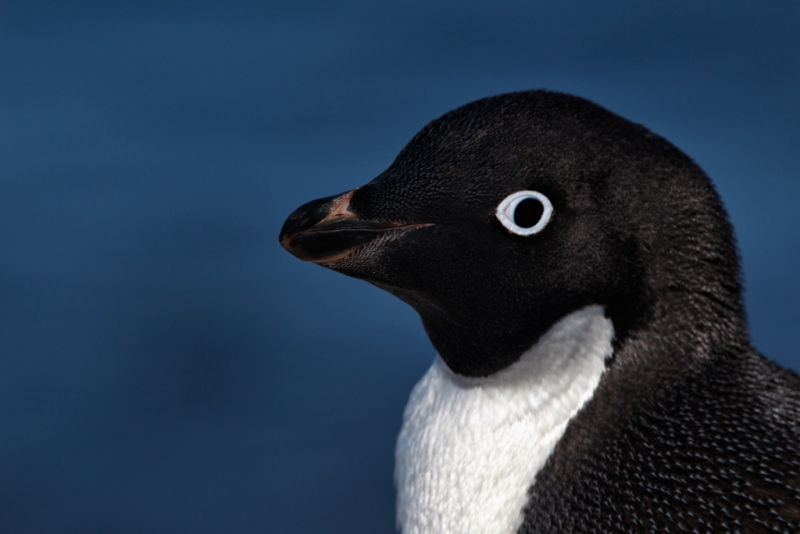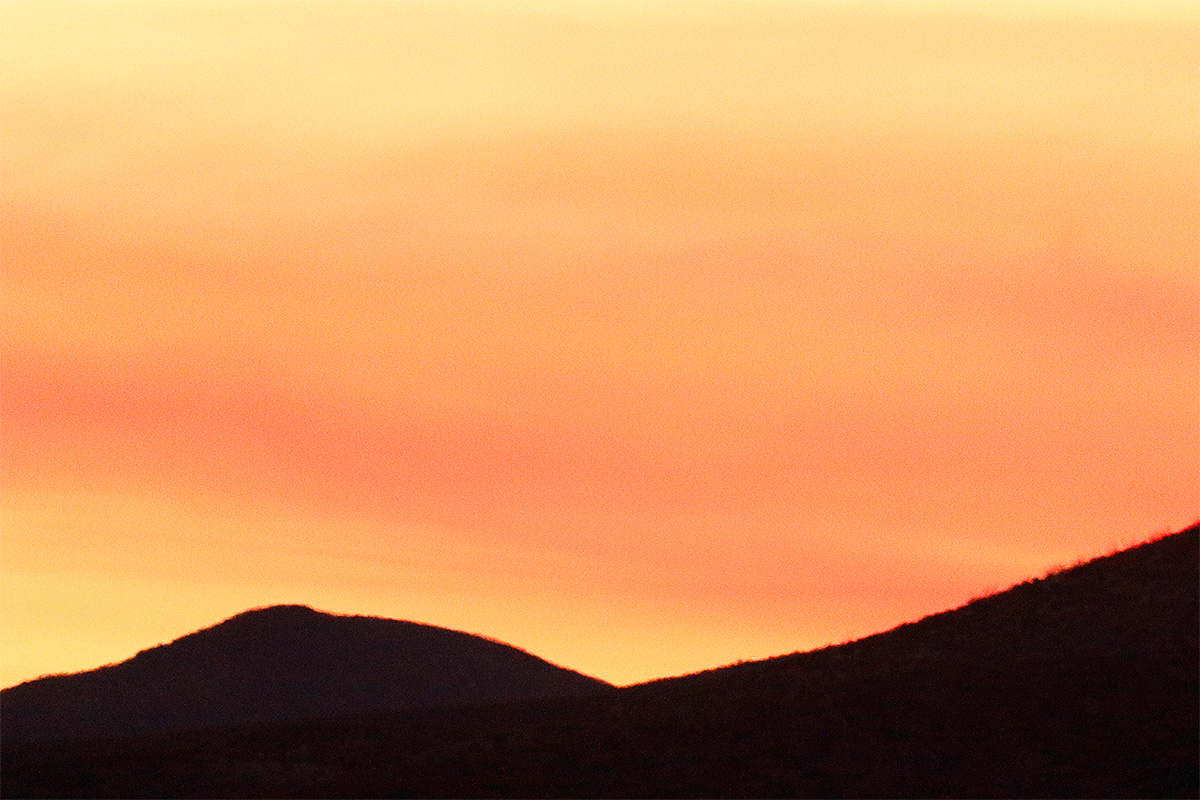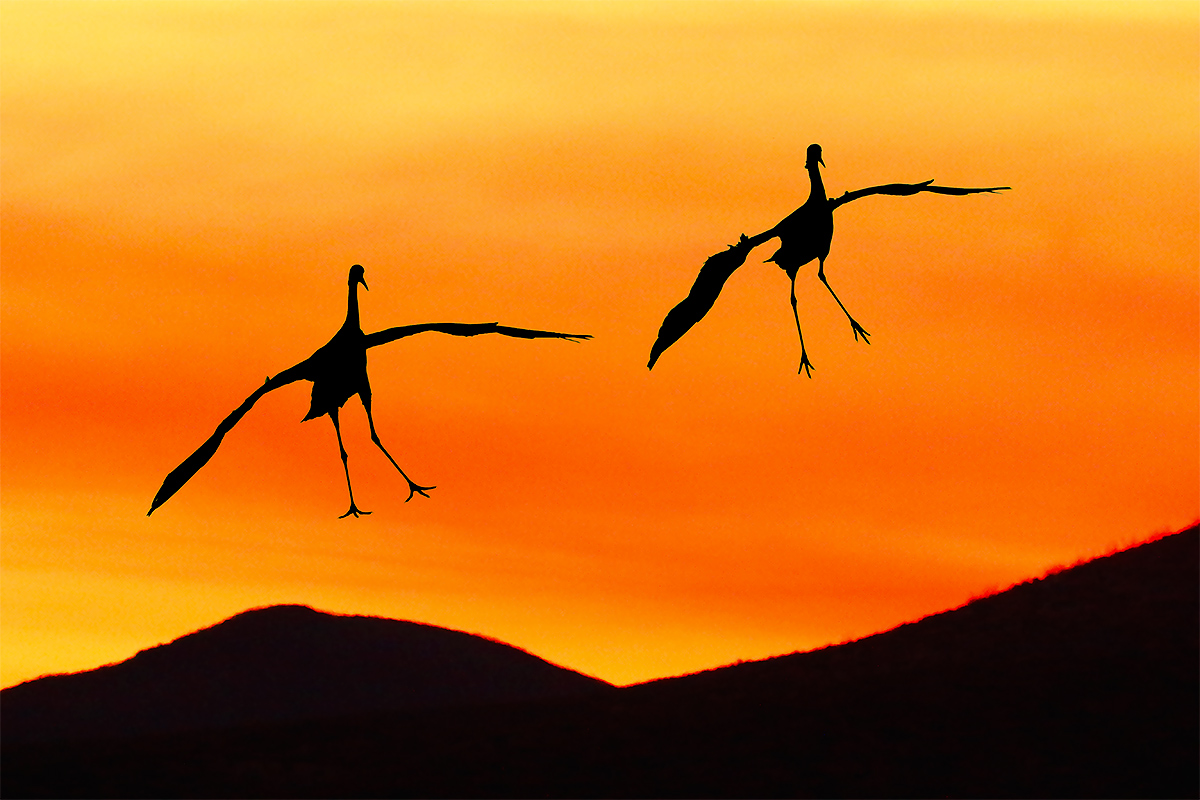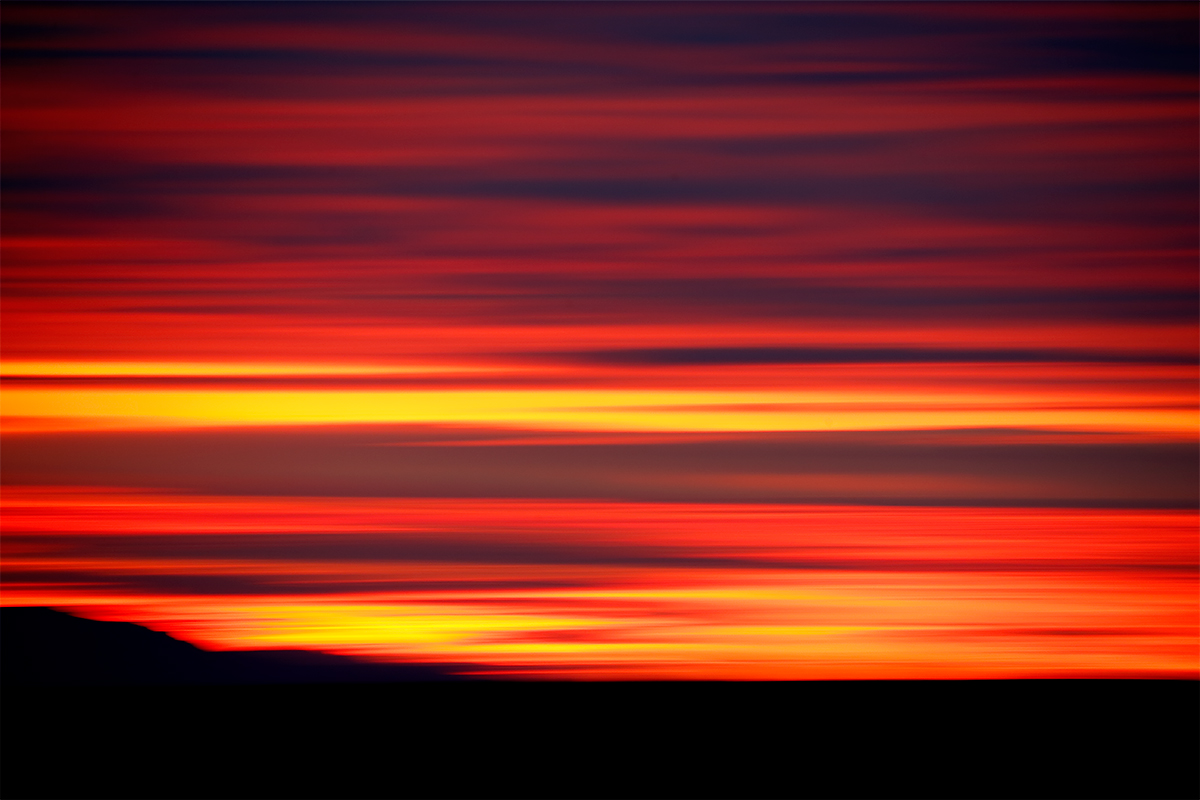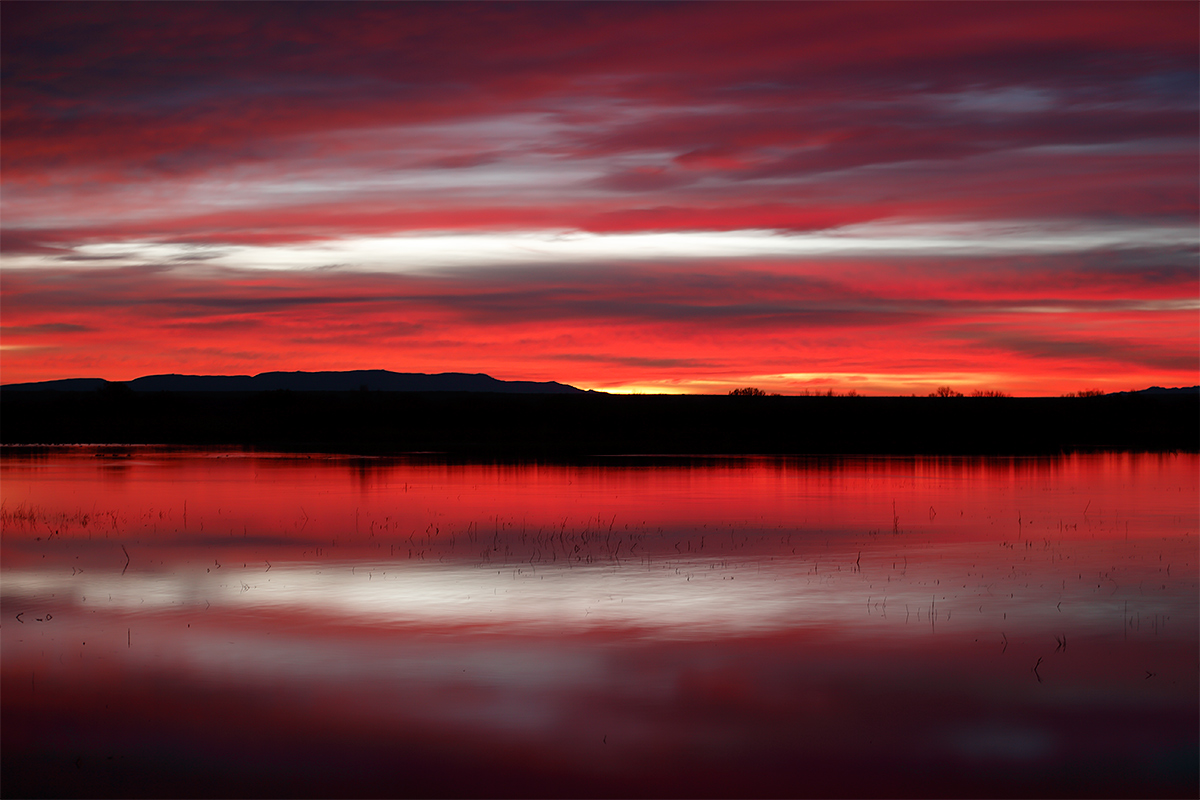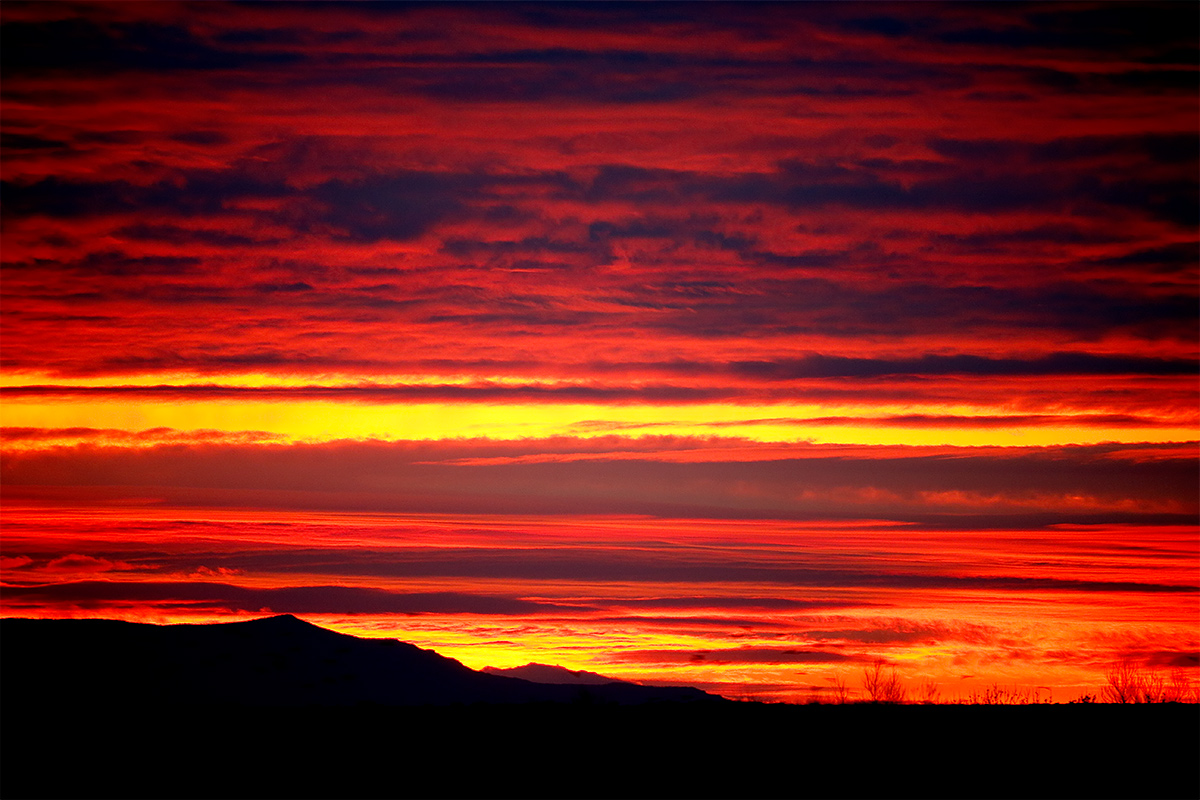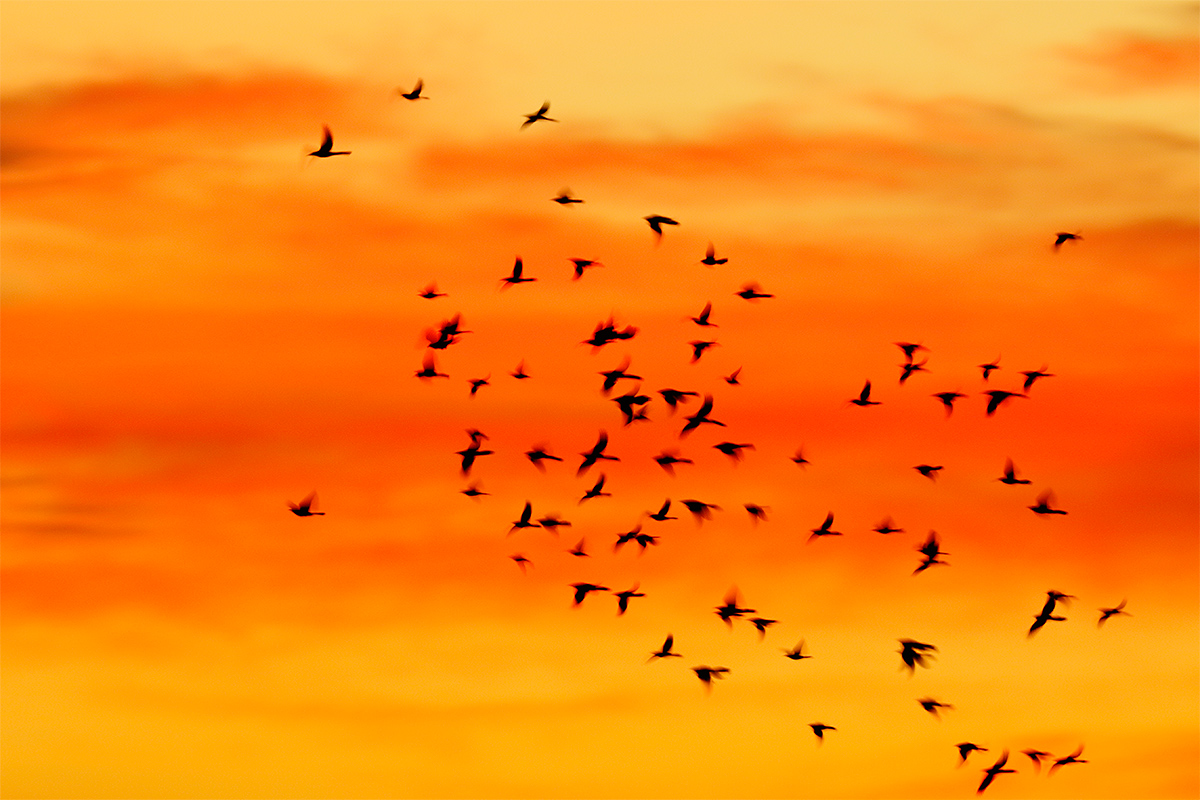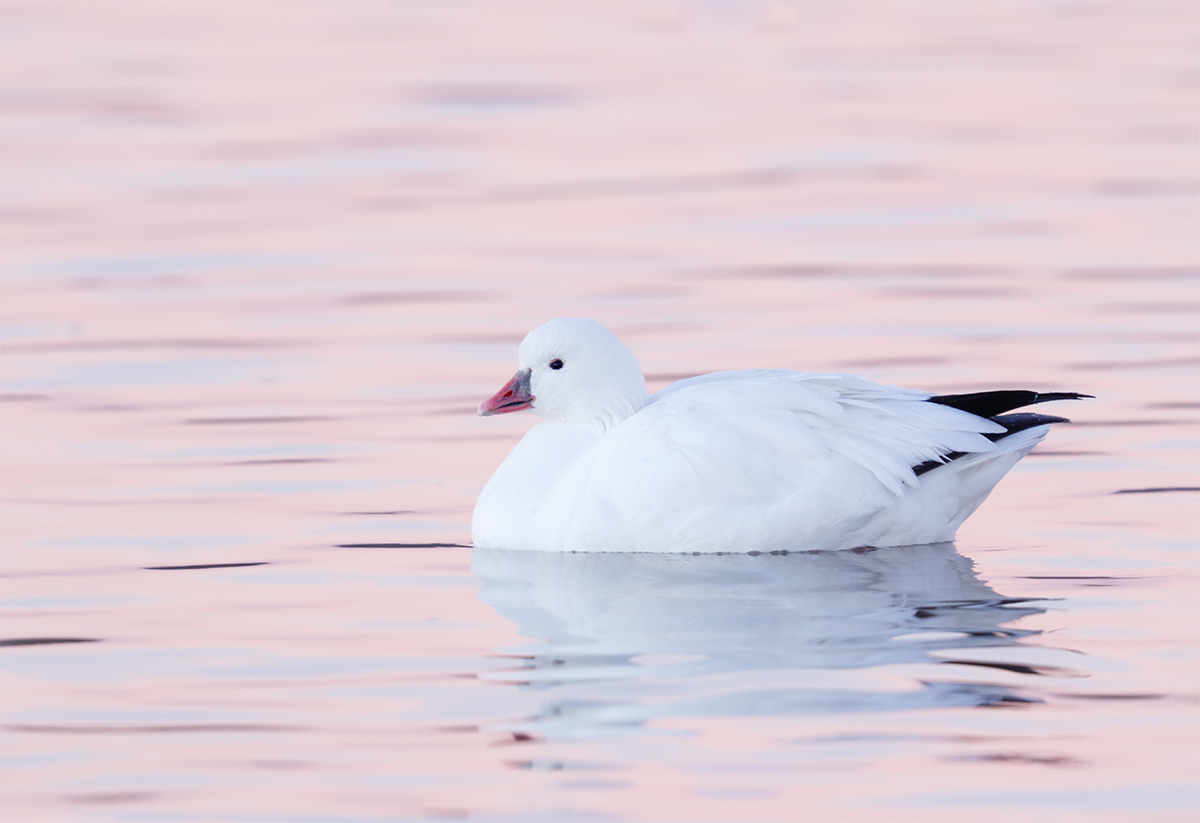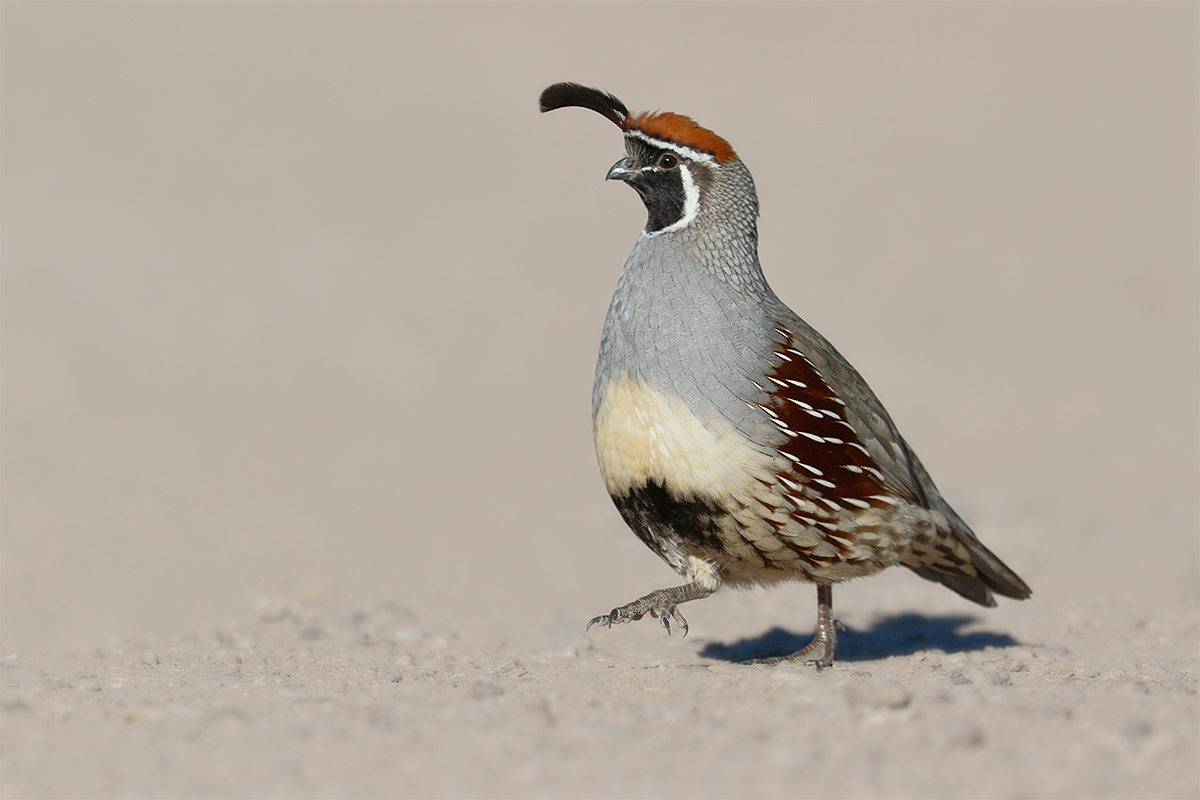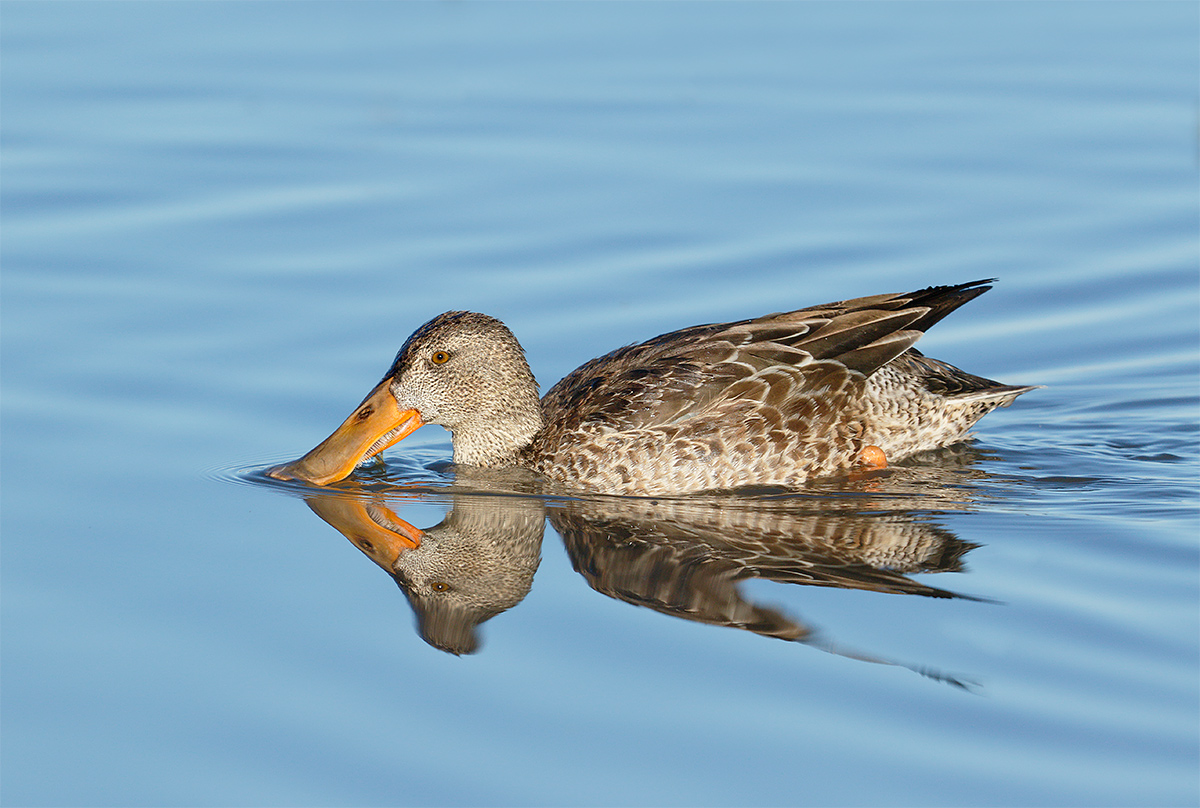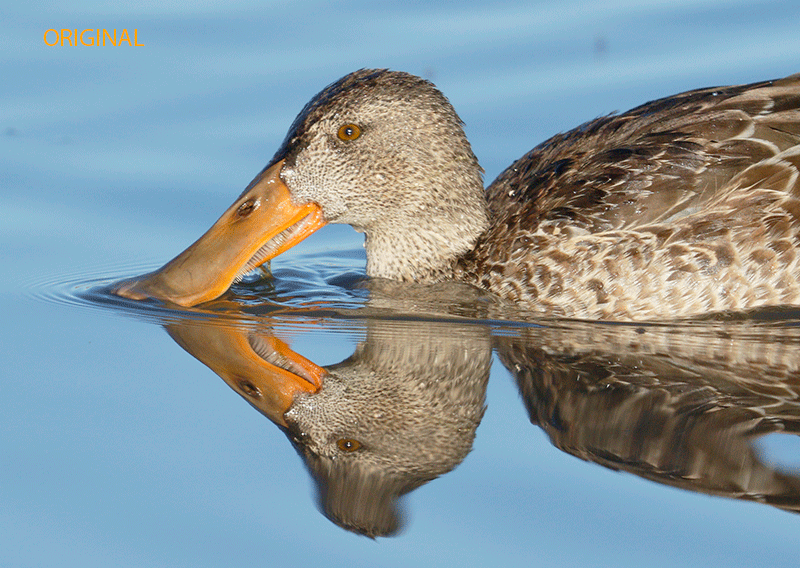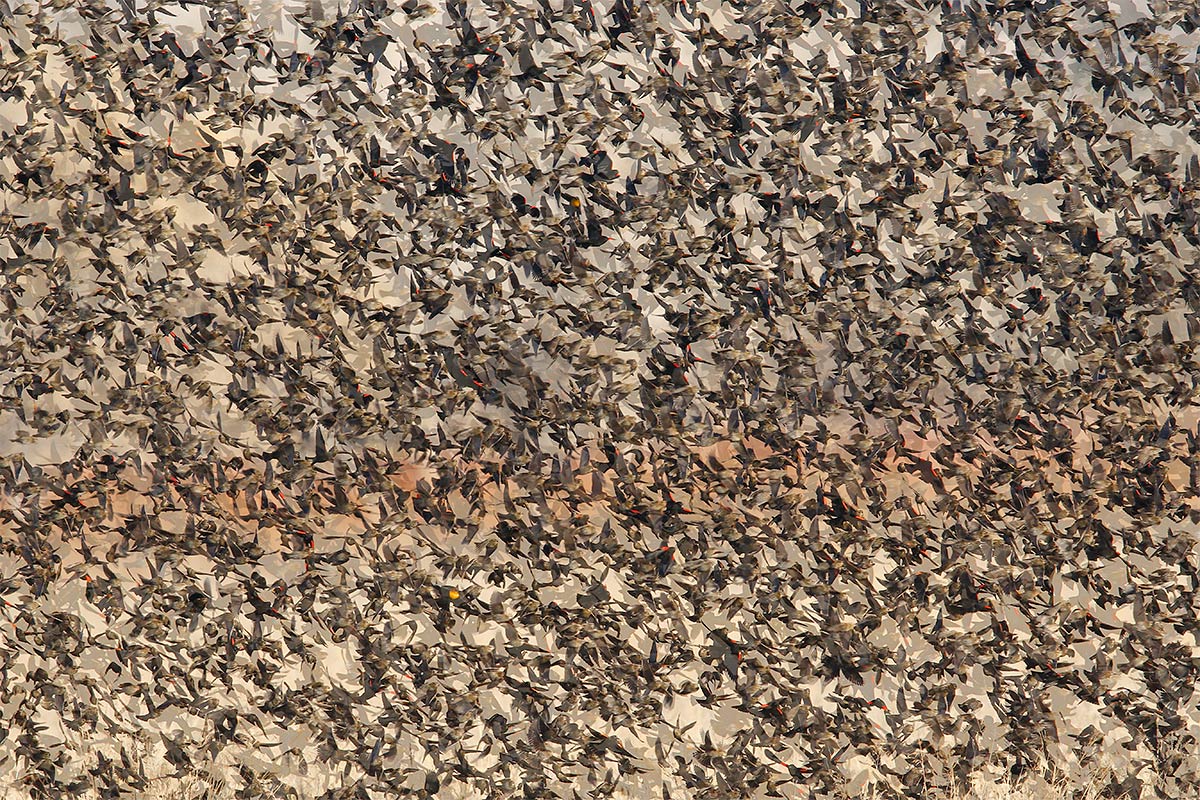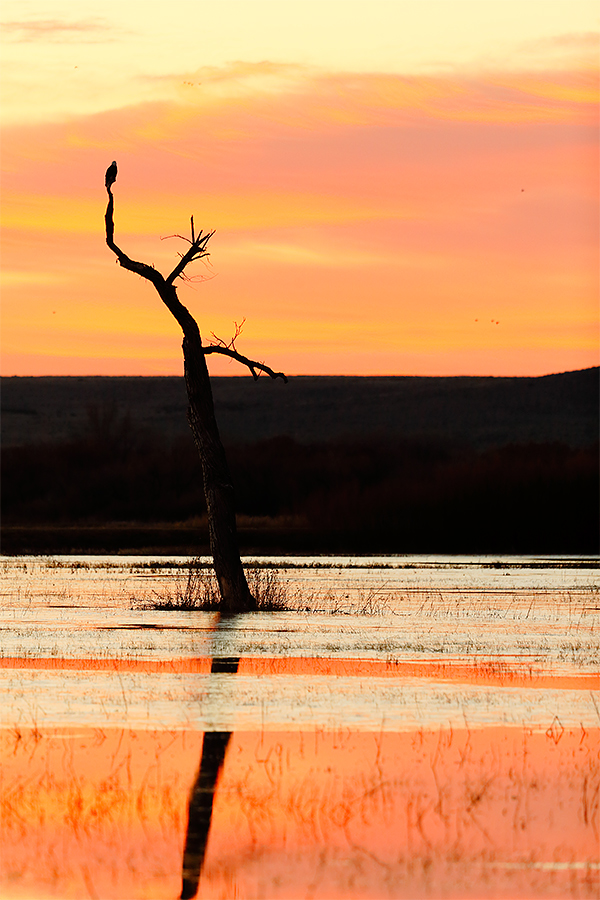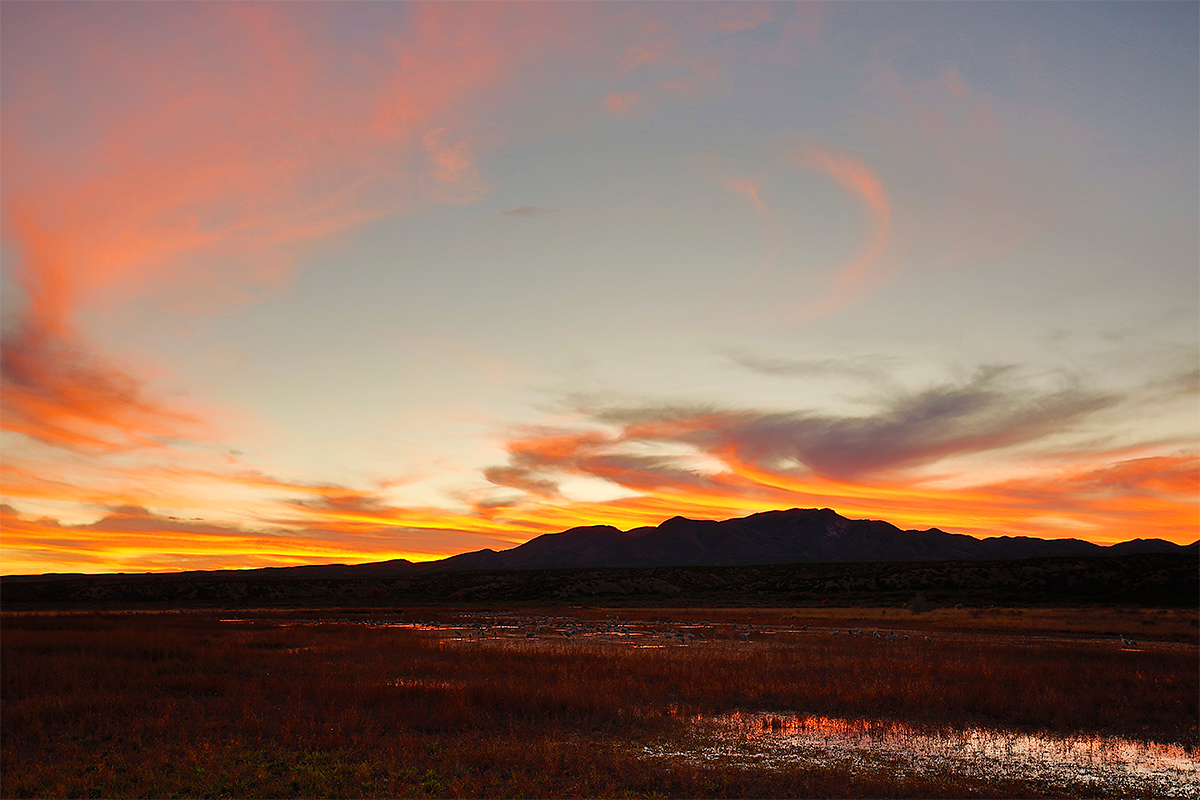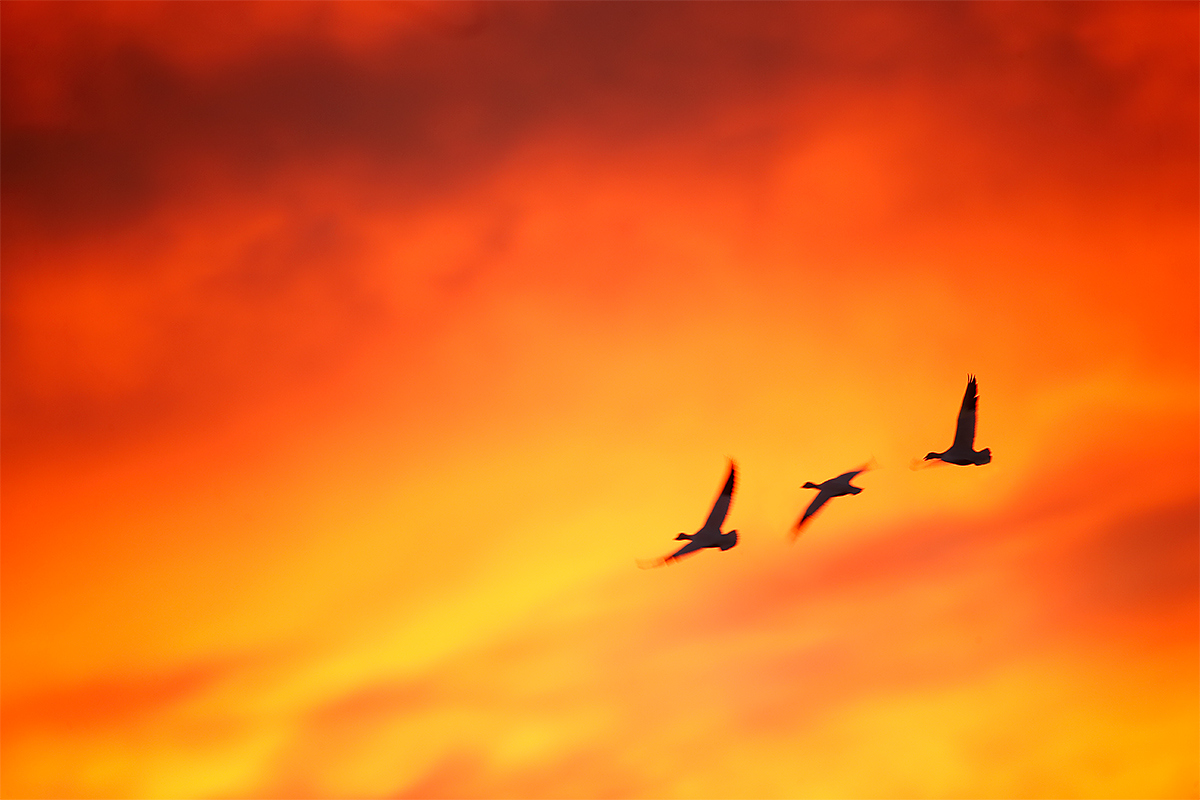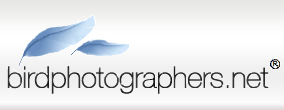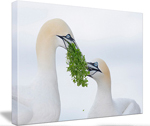December 10th, 2014 What’s Up?
I did a lot of catching up yesterday and got to the laundry as well. More of the same today plus beginning to pack for the next big trip. Leaving on Friday. See more on that below. This blog post took about two hours to write and was published from my home sweet home in Indian Lake Estates, FL at 6:51am.
To show your appreciation for my efforts here, we ask, as always, that you use our the B&H and Amazon affiliate links on the right side of the blog for all of your purchases. B&H Is recommended for you major photography gear purchases, Amazon for your household, entertainment, and general purpose stuff. Please check the availability of all photographic accessories in the BIRDS AS ART Online Store, especially Gitzo tripods, Wimberley tripod heads, and the like. We sell only what I have used, have tested, and can depend on. We will not sell you junk. We know what you need to make creating great images easy and fun. And we are always glad to answer your gear questions via e-mail.
I would of course appreciate your using our B&H affiliate links for all of your major gear, video, and electronic purchases. For the photographic stuff mentioned in the paragraph above we, meaning BAA, would of course greatly appreciate your business. Here is a huge thank you to the many who have been using our links on a regular basis and visiting the BAA Online store as well.
BAA Bulletin #470
BAA Bulletin #470 was published this morning. It can be accessed online here. Be sure to check out the Bosque Moon Shot Repair Tutorial.
- Bosque Moon Shot Repair
- The Blog is the Bomb!
- Jim Neiger Osprey Heaven and Custom Anytime Workshops
- The New Canon EF 100-400mm f/4.5-5.6L IS II USM Lens
- Selling Your Used Photo Gear Through BIRDS AS ART
|
|
|
This Adelie Penguin head portrait was created on Paulet Island with the tripod-mounted Canon 300mm f/2.8 L IS II lens, the 2X III teleconverter, and the EOS-1D Mark IV. ISO 400. Evaluative metering -1/3 stop: 1/2500 sec. at f/8 in Manual mode.
The 300 II has served me very well on two previous Southern Ocean trips. Now I am putting all of my long lens eggs in one basket….
|
Huge Cheesemans’ Southern Oceans Expedition Gear Bag Decision
My original plan was to bring both the Canon EF 300mm f/2.8L IS II USM lens and the Canon EF 200-400mm f/4L IS USM lens with Internal 1.4x Extender. I had been hoping against hope to get my hands on the new Canon EF 100-400mm f/4.5-5.6L IS II USM lens and leave the 200-400 at home. As fate would have it, B&H will have the 100-400II to ship this coming Friday, the day that I take a red-eye flight to Buenos Aires, Argentina en route to Ushuaia. I have a 5-hour layover in Atlanta and an 8 hour layover in Buenos Aires.
As the thought of traveling light intrigued me, I was strongly considering leaving the 200-400 at home, in part because of the 1.6X crop factor of my Canon EOS 7D Mark II. The final key to the puzzle was the fact that the 300 II with the hood in place and with a 1D X attached fit perfectly into the Think Tank Glass Limo, a really neat harnessed backpack. To learn about the Glass Limo first click here, then click on Camera Backpack, and then on Long Glass Backpacks.
As it is an absolute necessity that I hike with my big lens with the hood in place and a camera body attached, ready for action. With the 300 II as my big lens, I will be using the Glass Limo for the first time; after trying it out around the house yesterday and adjusting the straps, I am fully confident in it. (It is in stock on the Think Tank website right now.)
I go with the 3X Expandable Long Lens Bag when working with the 200-400 or the 500 II is the big gun, or the 4X Expandable Long Lens Bag (both of those from LensCoat) when hiking with the 600 II. Each of the Expandable Long Lnes bags will be outfitted with the Padded Harness for the LensCoat Long Lens Bags. I have used each of these bags before with great success, both at Nickerson Beach and at Fort DeSoto and will be using the 4X bag to tote my 600 II around the UK on next summer’s Puffin IPTA. Scroll down here for complete details on the 3X and 4X LensCoat Expandable Long Lens Bags.
For the most part I will be working with the 7d II on the 300 II. With the 2X III TC in place this rig will get me out to a very respectable 960mm. I’ll have the Canon EF 70-200mm f/2.8L IS II USM lens with a camera body attached on my shoulder via a Black Rapid RS-7 Strap. With the tame penguins and wildlife the 70-200 will be indispensable alone or with either TC.
My TCs and a wide angle zoom or two will be in my XtraHand Vest from Vested Interest along with lots of water and my emergency tool kit.
The Risk
The big risk is damaging the 300 II (as I did when I fell and destroyed my brand new 500 II along with a brand new 1D X a few years back at Fortuna Bay in South Georgia). That would leave me with the 70-200 II as my long lens. Even then I’d still be able to work at 640mm with the 2X III and the 7D II…. I will, however, be very careful. And when hiking the Glass Limo construction provides superb protection for my rig. In God and in the Glass Limo I will trust.
The Rolling Bag
All of my photo gear will be carried aboard in the Think Tank Airport International™ V 2.0 Rolling Camera Bag. My workhorse rolling bag, the slightly larger Airport Security™ V 2.0 Rolling Camera Bag, does not fit into my Seal Line Dry bag so I am going with the slightly smaller roll-aboard. How good are these bags? They are currently sold out on the Think Tank web site. Learn more by clicking here, then clicking on Camera Rolling Bags, and then clicking on Airport Series. If you’d like to receive a Think Tank product for free with every order of $50 or more, and free shipping, and the best pricing, you will need to wait until your choice is back in stock. Do know that all Think Tank bags come with their famous “No Rhetoric” warranty and the best customer service in the industry.
If you cannot wait, you can use one (or both) of our B&H affiliate links:
Think Tank Photo Airport Security V 2.0 Rolling Camera Bag (Black)
Think Tank Photo Airport International V 2.0 Rolling Camera Bag (Black)
What’s in the bag?
Canon EF 300mm f/2.8L IS II USM lens
Canon EF 70-200mm f/2.8L IS II USM lens
Canon EF 24-70mm f/2.8L II USM lens
Canon EF 16-35mm f/4L IS USM lens
The Canon 15mm fisheye lens (now replaced by the “circle lens,” the Canon EF 8-15mm f/4L Fisheye USM lens
Canon EOS-1D X (two)
Canon EOS 7D Mark II DSLR
Canon EOS 5D Mark III DSLR
Canon Extender EF 1.4X III (three)
Canon Extender EF 2X III (two)
Canon Extension Tube EF 25 II
Canon Extension Tube EF 12 II
As I said, I will enjoy traveling light.
Used Canon EF 100-400 f 4.5-5.6 L IS Lens
New Gear Listing: lowest price ever for this item!
Barry Mansell is offering a used Canon EF 100-400 f 4.5-5.6 L IS lens in excellent condition for $949 including insured shipping via UPS Ground to US addresses only. The plastic lens hood has a very few light scratches. The sale includes the original tough fabric case, the front and rear caps, and the lens hood. Your gear will be shipped only after your check clears.
Please contact Barry via e-mail, by phone at 904-388-8675, or on his cell at 904-655-0022. Eastern Time Zone.
The 100-400 is a versatile intermediate telephoto zoom lens with 1,000+ uses. It makes a great starter lens especially for folks who do general nature and wildlife in addition to birds. I’ve sold 100s of images made with a 1-4 and denise loved hers for many years forsaking it only recently for the Canon EF 70-200mm f/2.8L IS II USM lens. Barry’s 100-400 is priced to sell.
|
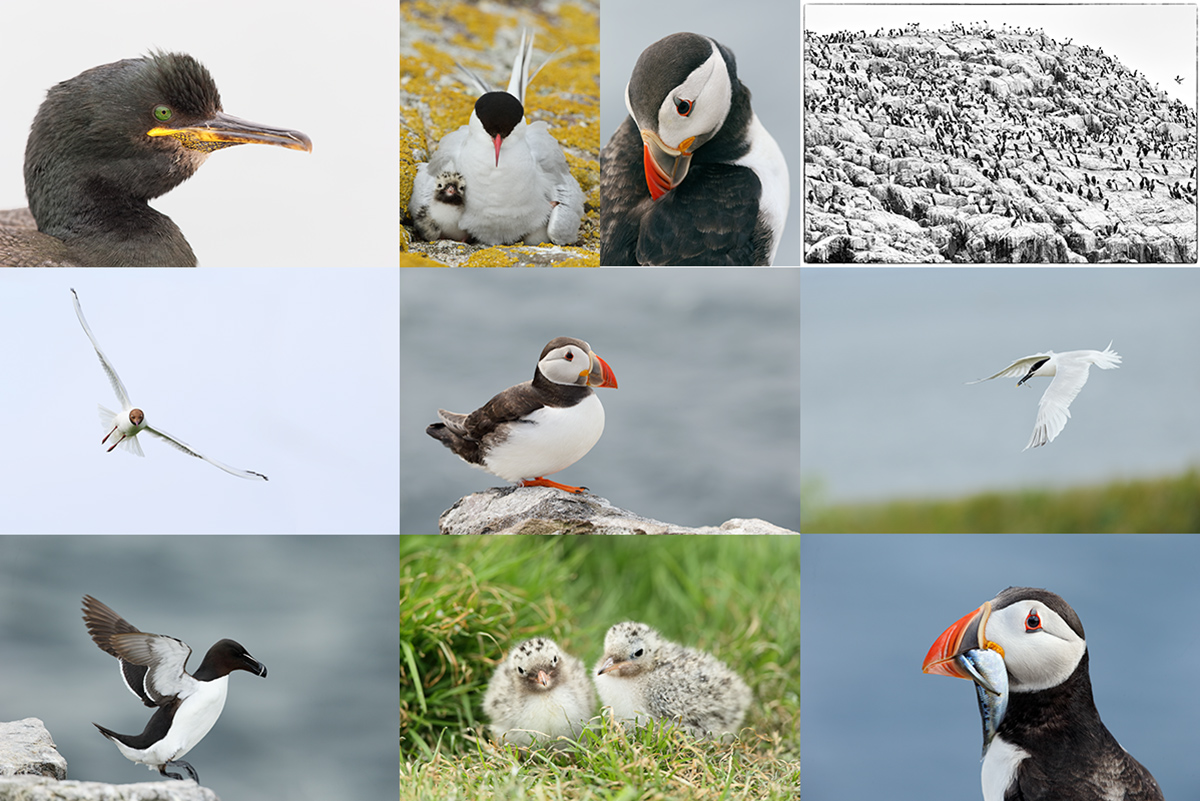
|
|
Images and card design copyright 2014: Arthur Morris/BIRDS AS ART. Click on the card to enjoy a spectacular larger version.
|
The 2015 UK Puffins and Gannets IPT
June 29 through July 5, 2015: $5499: Limit 10 photographers/Openings 1. Two great leaders: Denise Ippolito and Arthur Morris.
Here are the plans for next year: take a red eye from the east coast of the US on 28 June arriving in Edinburgh, Scotland on the morning of Monday 29 June (or simply meet us then either at the Edinburgh Airport (EDI) or later in the day at our cottages if you are driving your own vehicle either from the UK or from somewhere in Europe. Stay 7 nights in two gorgeous modern country cottages.
There are 5 days of planned puffin/seabird trips—weather permitting, and 1 full day of gannet photography with 2 sessions on the boat.
|
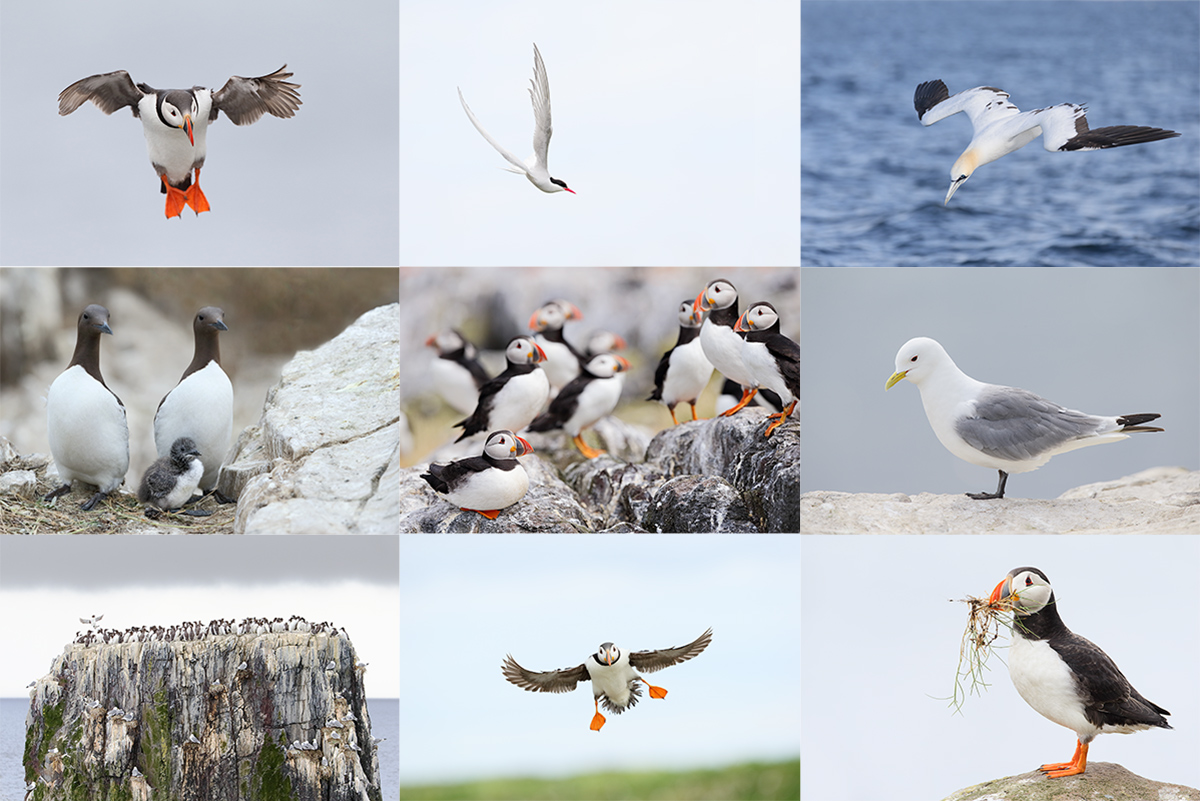
|
|
Images and card design copyright 2014: Arthur Morris/BIRDS AS ART. Click on the card to enjoy a spectacular larger version.
|
The Details
We will be staying in upscale country-side cottages that are beyond lovely with large living areas and lots of open space for image sharing and Photoshop lessons. The shared rooms are decent-sized, each with two roomy single beds and a private bathroom. See the single supplement info below.
All breakfasts, lunches and dinners are included. All 5 puffins boat lunches will need to be prepared in advance, taken with, and consumed at your leisure. I usually eat mine on the short boat trip from one island to the other. Also included is a restaurant lunch on the gannet boat day and a farewell fine dining thank you dinner. The cost of your National Heritage Trust is also included; that covers the twice a day landing fees.
Plan to fly home on the early morning of Monday 6 July or to continue your stay or travels.
|
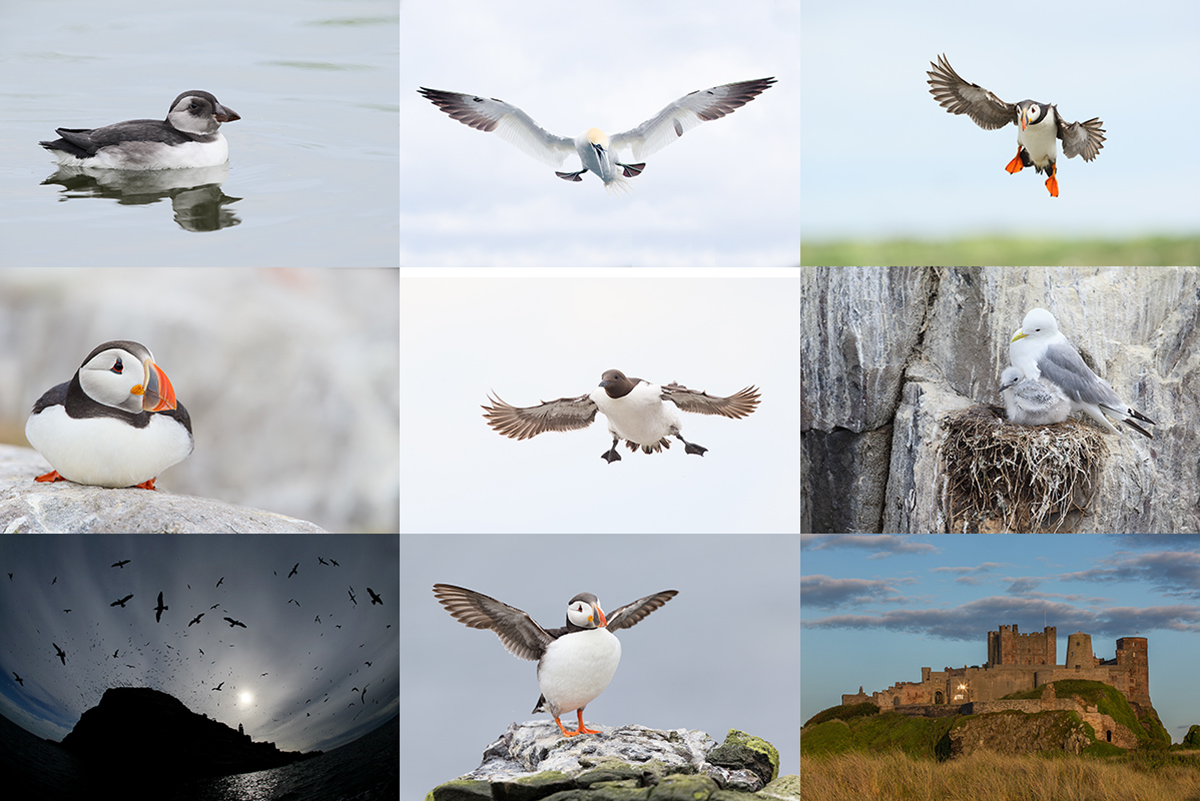
|
|
Images and card design copyright 2014: Arthur Morris/BIRDS AS ART. Click on the card to enjoy a spectacular larger version. Scroll down to join us in the UK in 2015.
|
Single Supplement Info
The single supplement is $1475. As we will be renting a third cottage the $1475 is due with your deposit and is also non-refundable.
If you are good to go please send your $2,000 deposit check now to save a spot. The balance will be due on March 29, 2015. Please make your check out to “Arthur Morris” and send it to Arthur Morris/BIRDS AS ART, PO Box 7245, Indian Lake Estates, FL, 33855. If you cancel and the trip fills, we will be glad to apply a credit applicable to a future IPT for the full amount less a $100 processing fee. If we do not receive your check for the balance on or before the due date we will try to fill your spot from the waiting list. Whether or not your spot is filled, you will lose your deposit. If not, you can secure your spot by paying your balance.
We do hope that you can join us.
Cheesemans’ Ecology Safaris
A great safari is more than remote destinations and remarkable wildlife – it is a journey woven through foreign lands and seas leading to experiences made possible through inspiration, organization, and leadership. For over thirty years, Cheesemans’ Ecology Safaris has provided these unforgettable experiences during in-depth tours to the world’s richest ecosystems. Their itineraries are unique and preparation is thorough, but most importantly, the leadership is exceptional. With broad backgrounds in nature and wildlife, their leaders desire to deepen your understanding of each destination so you can take-away the photographs and memories that allow you to become nature’s ambassador.
Gail and Doug Cheeseman have been leading wildlife safaris to their favorite destinations since 1978. Inspired by his parent’s passion, Ted joined them in leading safaris over 15 years ago. Now the three work together with their staff to offer you superlative nature tours to destinations such as Antarctica, Tanzania, Kenya, Bhutan, Brazil, India, Galapagos, and many more. Doug is a professor emeritus of Ecology and Zoology, Ted holds a Masters in Tropical Conservation Biology, and Gail is a naturalist of the best kind – self-taught through a lifetime in the field. Together, they are a family of truly remarkable ecologists who seek to inspire travelers to enjoy and conserve the Earth’s wild landscapes.
Find out more about Cheesemans’ Ecology Safaris, including a complete tour listing, by clicking here. If you have any questions you can ask them here, shoot them an e-mail or call them at 800.527.5330.
Facebook
Be sure to like and follow BAA on Facebook by clicking on the logo link upper right. Tanks a stack!
Support the BAA Blog. Support the BAA Bulletins: Shop B&H here!
We want and need to keep providing you with the latest free information, photography and Photoshop lessons, and all manner of related information. Show your appreciation by making your purchases immediately after clicking on any of our B&H or Amazon Affiliate links in this blog post. Remember, B&H ain’t just photography!
…..
Amazon.com
Those who prefer to support BAA by shopping with Amazon may use this link:
Amazon Canada
Many kind folks from north of the border, eh, have e-mailed stating that they would love to help us out by using one of our affiliate links but that living in Canada and doing so presents numerous problems. Now, they can help us out by using our Amazon Canada affiliate link by starting their searches by clicking here. Many thanks to those who have written.
Typos
In all blog posts and Bulletins, feel free to e-mail or to leave a comment regarding any typos or errors. Just be right :).
December 9th, 2014 What’s Up?
My flights home were a piece of cake. Jim picked me up at MCO just after 2:00pm on a very rainy Monday afternoon. I almost slept on the plane a few times…. And as I type, I am falling asleep again in the car. After a stop at Publix we arrived at home just before 4:00pm. Laundry tomorrow and then packing for the next big trip. On Friday.
This blog post took about two hours to prepare and was published from my home sweet home in Indian Lake Estates, FL at 3:30am.
To show your appreciation for my efforts here, we ask, as always, that you use our the B&H and Amazon affiliate links on the right side of the blog for all of your purchases. B&H Is recommended for you major photography gear purchases, Amazon for your household, entertainment, and general purpose stuff. Please check the availability of all photographic accessories in the BIRDS AS ART Online Store, especially Gitzo tripods, Wimberley tripod heads, and the like. We sell only what I have used, have tested, and can depend on. We will not sell you junk. We know what you need to make creating great images easy and fun. And we are always glad to answer your gear questions via e-mail.
I would of course appreciate your using our B&H affiliate links for all of your major gear, video, and electronic purchases. For the photographic stuff mentioned in the paragraph above we, meaning BAA, would of course greatly appreciate your business. Here is a huge thank you to the many who have been using our links on a regular basis and visiting the BAA Online store as well.
|
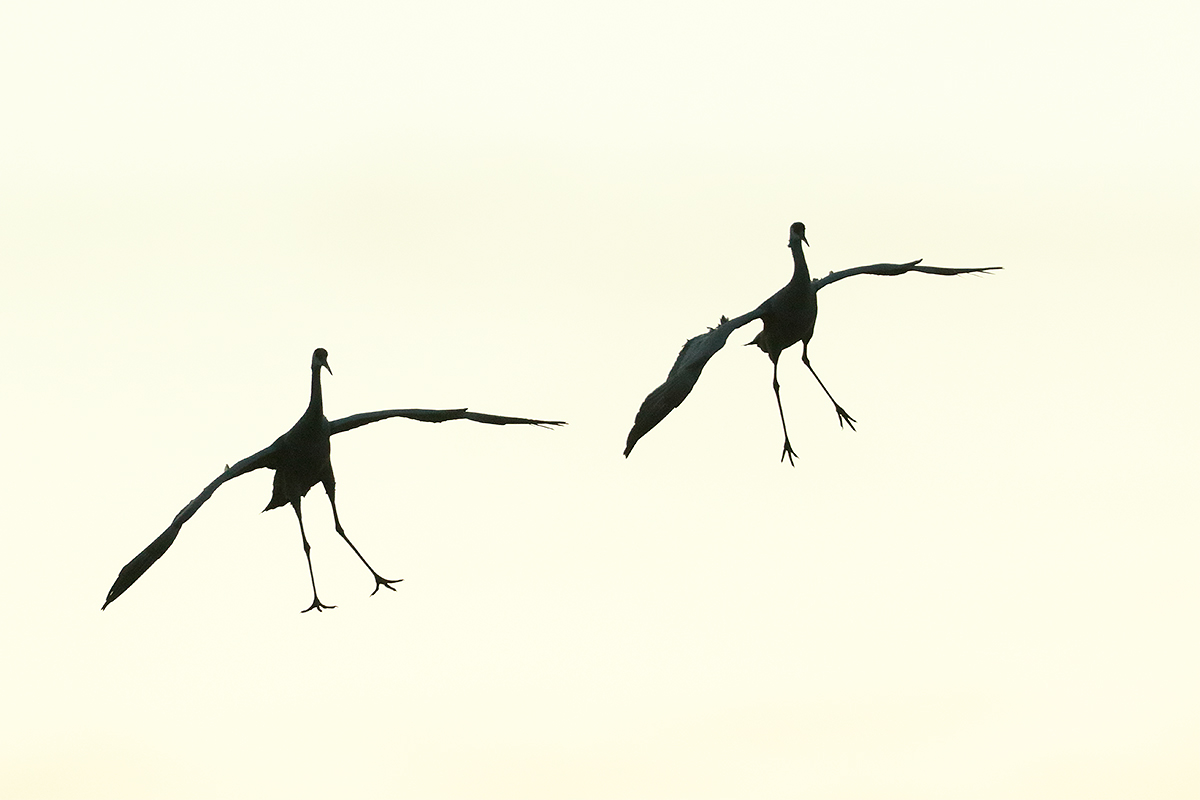
|
|
This image was created at 5:05pm on Sunday, DEC 7, the second and last evening of this year’s Canon Destination Workshop. I used the Gitzo 3532 LS carbon fiber tripod), the Mongoose M3.6 head, Canon EF 600mm f/4L IS II USM lens, the Canon Extender EF 1.4X III, and the Canon EOS 7D Mark II. ISO 1600. Evaluative metering +1 2/3 stops as framed: 1/800 at f/5.6 in Av Mode. Color temperature: 8000K.
65-Point Automatic Selection/AI Servo Rear Focus AF as framed activated an array of 3 AF points that caught the left wing of the crane on our right and were active at the moment of exposure. Click here if you missed the Rear Focus Tutorial. Click on the image to see a larger version.
Sandhill Crane pair landing SILH against pale sky
|
65-Point Automatic Selection AF Area Selection Mode
I love to use 65-Point Automatic Selection AF Area Selection mode when photographing the cranes in silhouette. It allows me to place small in the frame birds well out of the center of the frame and it allows me to frame incoming pairs without clipping the wingtips of one or the other. If the contrast gets too low I will usually go to Surround.
I had the group in the perfect location but the color did not materialize until it was way too dark to shoot despite the thin clouds that had graced the western horizon in late afternoon. You never want to get into the business of predicting sunrise or sunset colors….
Half-way Decent
We did get just a bit of sky color well after sunset. As I often do I created a few images with the distant ridge and the color. I am not sure why I had not thought of combining two such images before.
|
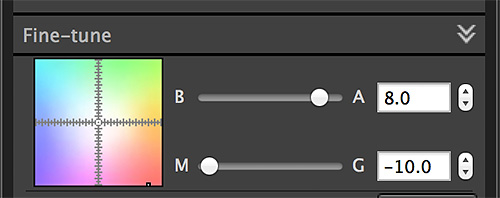
|
|
The Color Fine-tune box
|
The Color Fine-tune box
I juiced up the colors of the sky image a bit during the RAW conversion in DPP 4 using the Color Fine-tune box on the Perform basic image adjustment tab. Though we only touch upon the use of the Color Fine-tune box in the DPP 4 Guide I used it a lot recently with sunrise and sunset images from Bosque. How do I use it? Experiment by dragging the center point around. Next I worked on the color in Photoshop with both Vibrance and Selective Color adjustments.
The Blending
I knew that there was probably a one-step technique to blend the two images together using one of the Blend Modes in PS. But I had no idea which one would retain the rich colors of the BKGR image and the deep BLACKs of the SILH. I experimented and finally hit the case ace for four of a kind.
If you know or think that you know which Blend Mode I used please do leave a comment. Note: the sky was the bottom layers, the crane pair was the top layer.
Just for the record books…
The file name for the optimized image, “Sandhill Cranes landing–blend of two images _Y8A7665 Bosque del Apache NWR, San Antonio, NM.tif” lets editors know what they are dealing with. My intent is always to avoid deception and to let folks know how an image was created.
Digital Basics
Everything that I did to optimize today’s image is covered in detail in my Digital Basics File–written in my easy-to-follow, easy-to-understand style. Are you tired of making your images look worse in Photoshop? Digital Basics File is an instructional PDF that is sent via e-mail. It includes my complete digital workflow, dozens of great Photoshop tips (including the Surface Blur settings that I used to smooth out the noise in the ISO 6400 image as taught to me by Denise Ippolito), details on using all of my image clean-up tools, the use of Contrast Masks, several different ways of expanding and filling in canvas, all of my time-saving Keyboard Shortcuts, Quick Masking, Layer Masking, working with color and contrast, and NIK Color Efex Pro basics, Contrast Masks, Digital Eye Doctor techniques, using Gaussian Blurs, Tim Grey Dodge and Burn, a variety of ways to make selections, how to create time-saving actions, and tons more.
|
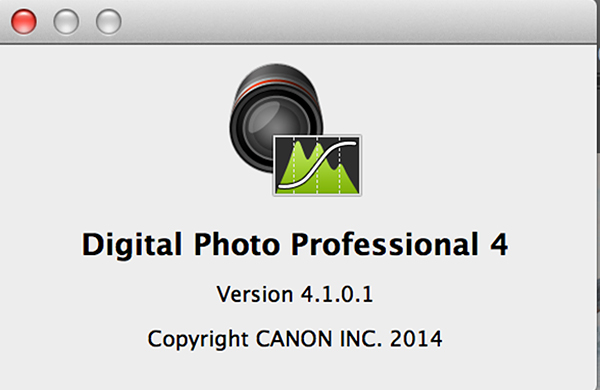
|
|
DPP 4 is completely new and different from the various versions of DPP 3. It handles files only from the following cameras: EOS-1D X, EOS 5D Mark III, EOS-6D, and the EOS-7D Mark II.
|
Great 7D II/DPP v4.01.0 News
An updated version of Canon Digital Photo Professional that supports RAW files from the EOS-7D Mark II was released more than a month ago and is available for download the Canon USA website. To download DPP v4.1 first click here and then click on Drivers and Software and follow the prompts.
|
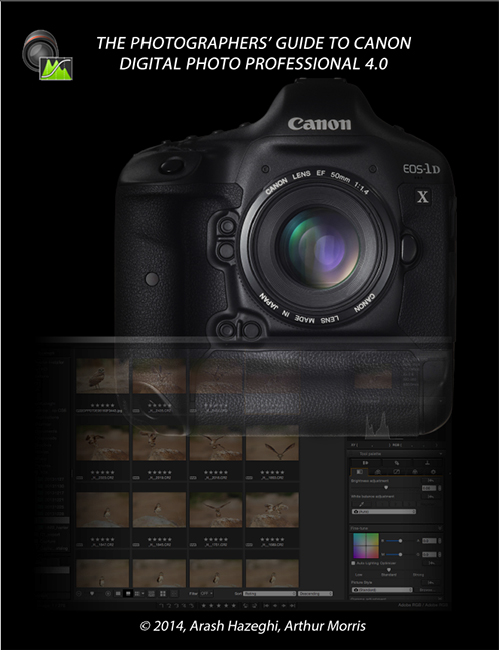
|
|
The Photographers’ Guide to Canon Digital Photo Professional 4.0 by Arash Hazeghi and Arthur Morris is now available. Click here to order.
|
The DPP 4 eGuide (PDF)
The Photographers’ Guide to Canon Digital Photo Professional 4.0 by Arash Hazeghi and Arthur Morris: $40.
Artie first went to DPP because he was not happy with the colors he was getting with 1D X and 5D III images from ACR (Adobe Camera Raw). Though less than intuitive, he found it fast and easy to use once he mastered the basics. He collaborated with Arash Hazeghi on the first DPP RAW Conversion Guide. Do understand that the DPP RAW Conversion Guide details the use of various iterations of DPP 3. He calls those the DPP 3.whatever versions. The latest version is DPP 3.14.41.0.
Some time ago Canon released DPP 4.0, completely and utterly new and different from DPP 3. When it was introduced DPP 4 worked only EOS-1D X, EOS-5D Mark III, and EOS-6D images but support for the EOS-7D Mark II was added to the latest version when that camera began shipping.
When I first opened DPP 4 I felt as if I were in the cockpit of a Boeing 747 and was being asked to fly it. There were so many tabs and buttons and controls that I simply closed the program. I immediately called Arash and asked him if he wanted to work together on a DPP 4 guide. After 100s of hours of work the guide was ready to teach you to conveniently and easily use DPP 4 to create the finest possible image files from your 1D X, 5D III, 6D, and 7D II image files. Basically, Arash sent me a sophisticated outline that I re-crafted into a clear, concise, easily understood, and easy to follow how-to guide written in the BAA style. Arash created all of the charts, diagrams, and graphics.
His charts with recommendations for both Chrominance and Luminance Noise Reduction values for each of the 4 covered cameras at various ISO settings are alone worth the price of the book. He spent many dozens of hours experimenting with high ISO RAW files and shares his findings with you in the DPP 4 Guide. Folks will surely want to create some sort of easily accessible quick reference on their laptops and home computers.
DPP offers a host of great features some but not all of which are reminiscent of ACR. These include the following: Multi-image display, the extremely valuable Before/after Comparison layout, Highlight/shadow warnings, White Balance, and the eight RAW Conversion tabs that include sliders for Brightness, Highlights, Shadows, Contrast, Hue-Saturation, Color Tone, Sharpness, Noise Reduction, HSL (Hue/Saturation/Luminance), Lens Corrections, and Digital Lens Optimizer among others. We teach you how to best utilize each of those and many more. We share our slightly different DPP workflows and dozens of tips that will simply make your life easier. Arash uses DPP4′s rating system for choosing his keepers while artie continues to rely on BreezeBrowser Pro for that. DPP offers a variety of sorting filters. We explain all of the options. In addition, we teach you how to set your preferences and how to arrange your workspace for the greatest efficiency.
Both authors firmly believe that the manufacturer’s conversion algorithms will always out-perform 2nd party software when it comes to preserving image quality, fine detail, and accurate color rendition.
The authors wish to thank Chuck Westfall and Rudy Winston of Canon USA for their help; they are always available to answer our nit-picking questions. Sincere thanks also to Ken Kovak, Bob Schwartz, Dane Johnson, and John Stuhlmuller for their thoughtful and substantive reviews of late drafts of the DPP 4 manuscript.
You can order your copy of the DPP 4 Guide for $40 through the BAA Online Store by clicking here, by calling Jim or Jen in the office at 863-692-0906 with credit card in hand, by sending us a check made out to “Arthur Morris” or a money order for $40 to BIRDS AS ART, PO Box 7245, Indian Lake Estates, FL 33855, or by by sending a Paypal for $40 to e-mail. IN the latter two instances be sure to note DPP 4 Guide so we know what you are ordering :).
Note: the Sharpness and Noise Reduction Charts will be updated to include the recommended values for the 7D Mark II. I have been sending RAW files to Arash for several days. Now Arash has a lot more work to do. For those who have purchased the DPP 4 Guide, the update will of course be free but please be patient.
Those using older Canon camera bodies like the 1D Mark IV, the 7D, the 50D, the 40D, the various Rebels (not highly recommended for serious nature photography), are directed to the original DPP RAW Conversion Guide click here. DPP 3 (the latest version is DPP v3.14.41.0) does a fine job of converting images from the older camera bodies. I used it for several years.
DPP 4 eGuide 7D II Update
If you have purchased the DPP 4 eGuide and have purchased a 7D II, please request the free update by shooting Jim an e-mail with the words DPP 4 7D II Update cut and pasted into the Subject Line. You must include some sort of proof of purchase; a cut and paste of page 2 of the current guide will suffice. If you send your request without including proof of purchase your updated eGuide will not be sent 🙂
Facebook
Be sure to like and follow BAA on Facebook by clicking on the logo link upper right. Tanks a stack!
Support the BAA Blog. Support the BAA Bulletins: Shop B&H here!
We want and need to keep providing you with the latest free information, photography and Photoshop lessons, and all manner of related information. Show your appreciation by making your purchases immediately after clicking on any of our B&H or Amazon Affiliate links in this blog post. Remember, B&H ain’t just photography!
…..
Amazon.com
Those who prefer to support BAA by shopping with Amazon may use this link:
Amazon Canada
Many kind folks from north of the border, eh, have e-mailed stating that they would love to help us out by using one of our affiliate links but that living in Canada and doing so presents numerous problems. Now, they can help us out by using our Amazon Canada affiliate link by starting their searches by clicking here. Many thanks to those who have written.
Typos
In all blog posts and Bulletins, feel free to e-mail or to leave a comment regarding any typos or errors. Just be right :).
December 8th, 2014 What’s Up?
Today is a travel day. I woke to the alarm at 2:30am, finished packing, loaded the car, and headed down to ABQ. I checked in (TSA pre-check!), and dropped my bags at Southwest curbside, returned my rental car, took the shuttle bus to the terminal, and headed to the gate.
This blog post took less than an hour to prepare and was published from my seat on Southwest Flight 718 just a bit before 6:15am.
Flight Update
Just after take-off I was treated to a spectacular sunrise replete with orange, yellow, red, and pink tones filling most of the eastern sky. It was possible the best sunrise of the entire trip….
|
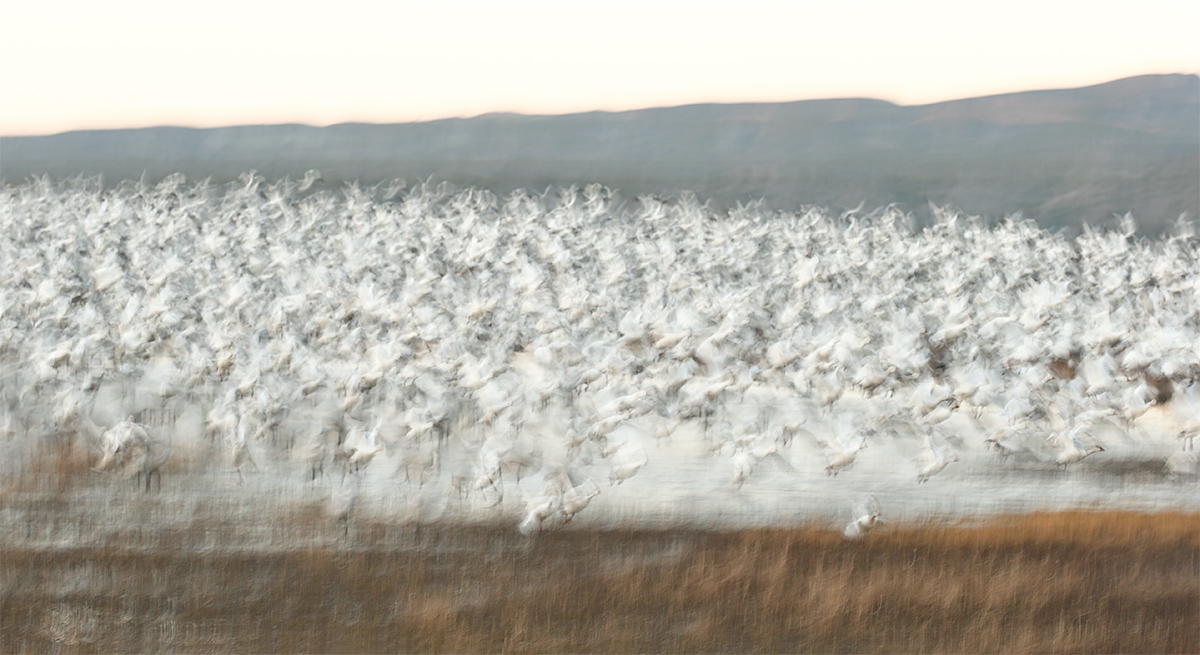
|
|
This image was created at 7:02am on December 7, the second and last morning of the fabulous Canon Destination Workshop. I used the Canon EF 70-200mm f/2.8L IS II lens with the Canon Extender EF 1.4X III (hand held at 192mm) and the Canon EOS-1D X. ISO 100. Evaluative metering +2/3 stop as framed: 1/13 sec. at f/7.1 in Tv mode. Captured at 10,000K. Converted in DPP 4 at 8200K.
One sensor below the central sensor/AI Servo Surround/Rear Focus AF as originally framed was active at the moment of exposure. Click here if you missed the Rear Focus Tutorial. Be sure to click on the image to see a larger version.
|
The Right Spot at the Right Time
Since arriving at the refuge on November 13, I am proud to say that I had myself and more importantly, my groups, in the right spot at the right time on all but two occasions. After 20 years, I have become quite proficient at reading the light and the wind and bird behavior. Join us on one of next year’s Bosque IPTs and learn everything that there is to know about photographing at the refuge including my newly developed strategy for photographing close range blast off with different lenses….
Please feel free to leave a comment and let us know what you like or do not like about today’s featured image.
To pan or not to pan…
As most regular readers would likely have surmised, in the “To pan or not to pan? That is the question” blog post here, my very great preference was for the pan blurred image for its graphic look and smoother color tones.
400 DO II
Folks who are pre-ordering the Canon EF 400mm f/4 DO IS II USM lens are asked to consider using my B&H affiliate link.
The Bosque Site Guide
All BAA Site Guides are designed so that with a bit of study you can show up at a great place and know exactly where to be at what time on what wind and in what lighting conditions. With a Site Guide on your laptop you will feel like a 20-year veteran even on your first visit. Site Guides are the next best thing to being on an IPT. If you plan on visiting the refuge it would be foolish to make the trip without having this guide in hand. Why spend money on gear and travel and then spend days stumbling around in the wrong spots? If you have visited previously, and are still unsure of where you should be at this time of day with that wind, this guide will prove invaluable to you as well.
You can order yours here or check out all of our site guides here.
|
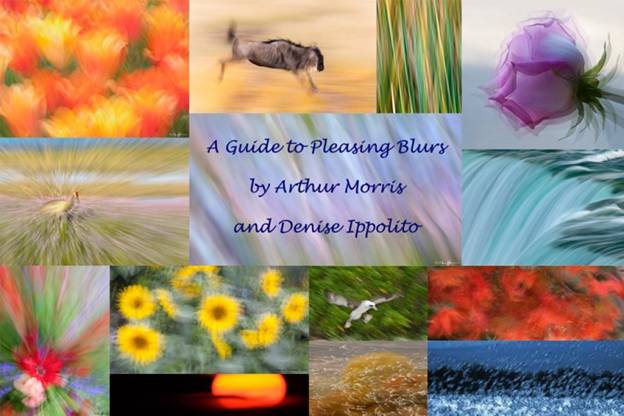
|
|
Learn the secrets of creating contest winning images in our “A Guide to Pleasing Blurs.”
|
A Guide to Pleasing Blurs
While lying in bed in the middle of last night and thinking of finishing this blog post, I realized that the two oof bird images were actually de-focused blurs, one of the many categories that we discuss and detail in our great eGuide, A Guide to Pleasing Blurs by Denise Ippolito and yours truly.
Pleasing Blurs are not accidents. Learn pretty much everything that there is about creating them in this instructive (as always) guide.
BIRDS AS ART Instructional Photo Tours (IPTs)
For a listing of all currently offered IPTs, click here.
Click here for BIRDS AS ART Instructional Photo-Tour (IPT) General Information.
Click here for BIRDS AS ART Instructional Photo-Tour (IPT) Deposit and Cancellation Policies.
Click here for BIRDS AS ART Instructional Photo-Tour (IPT) Registration and Release Forms.
DPP 4 eGuide 7D II Update
If you have purchased the DPP 4 eGuide and have purchased a 7D II, please request the free update by shooting Jim an e-mail with the words DPP 4 7D II Update cut and pasted into the Subject Line. You must include some sort of proof of purchase; a cut and paste of page 2 of the current guide will suffice. If you send your request without including proof of purchase your updated eGuide will not be sent 🙂
Facebook
Be sure to like and follow BAA on Facebook by clicking on the logo link upper right. Tanks a stack!
Support the BAA Blog. Support the BAA Bulletins: Shop B&H here!
We want and need to keep providing you with the latest free information, photography and Photoshop lessons, and all manner of related information. Show your appreciation by making your purchases immediately after clicking on any of our B&H or Amazon Affiliate links in this blog post. Remember, B&H ain’t just photography!
…..
Amazon.com
Those who prefer to support BAA by shopping with Amazon may use this link:
Amazon Canada
Many kind folks from north of the border, eh, have e-mailed stating that they would love to help us out by using one of our affiliate links but that living in Canada and doing so presents numerous problems. Now, they can help us out by using our Amazon Canada affiliate link by starting their searches by clicking here. Many thanks to those who have written.
Typos
In all blog posts and Bulletins, feel free to e-mail or to leave a comment regarding any typos or errors. Just be right :).
December 7th, 2014 Did I miss your e-mail?
Obviously, I have been swamped and with my trip to the Southern Oceans beginning this coming Friday, I will continue to be swamped. If I missed an e-mail from you, especially one dealing with the sale of used gear, please shoot me an e-mail and I will try to get to it before I leave. Apologies to those who might be feeling neglected. I have never been this far behind before….
What’s Up?
Oh what a day! The first day of the Canon Destination Workshop was amazing. We enjoyed a red pre-dawn and followed by a white goose blastoff right in our face at the Ed Kranepool. We headed back early and then after our program and a short break, we found the geese at the north end and enjoyed blastoff after blastoff, capped by the largest Bosque blastoff I have ever seen, a triple header from three fields where the flocks wound up intermingling and then coming together as one. I have enjoyed so much great photography at Bosque this year that I am sure that I will not get to share much of it with you until I get back from upcoming my Southern Oceans expedition adventure with Cheesemans’ Ecology Safaris.
Today is Day Two of the workshop. Tomorrow I wake at 2:00 and head to ABQ for my flights home. This blog post took 1 1/2 hours to prepare and was published from my hotel room in Socorro, NM at 4:59am.
To show your appreciation for my efforts here, we ask, as always, that you use our the B&H and Amazon affiliate links on the right side of the blog for all of your purchases. B&H Is recommended for you major photography gear purchases, Amazon for your household, entertainment, and general purpose stuff. Please check the availability of all photographic accessories in the BIRDS AS ART Online Store, especially Gitzo tripods, Wimberley tripod heads, and the like. We sell only what I have used, have tested, and can depend on. We will not sell you junk. We know what you need to make creating great images easy and fun. And we are always glad to answer your gear questions via e-mail.
I would of course appreciate your using our B&H affiliate links for all of your major gear, video, and electronic purchases. For the photographic stuff mentioned in the paragraph above we, meaning BAA, would of course greatly appreciate your business. Here is a huge thank you to the many who have been using our links on a regular basis and visiting the BAA Online store as well.
Images Questions
#1: Why did I set -1/3 stop EC?
#2: Give me two reasons that I went with an 8 second exposure when I could have gone with ISO 400 and a 2 second exposure….
Saturday’s stunner marked four of the last six days with breathtaking sunrises.
Selling Your Used Photo Gear Through BIRDS AS ART
Selling your used (or like-new) photo gear through the BAA Blog or via a BAA Online Bulletin is a great idea. We charge only a 5% commission. One of the more popular used gear for sale sites charges a minimum of 20% plus assorted fees! Yikes. The minimum item price here is $500 (or less for a $25 fee). If you are interested please e-mail with the words Items for Sale Info Request cut and pasted into the Subject line :). Stuff that is priced fairly–I offer free pricing advice, usually sells in no time flat. In the past few months, we have sold just about everything in sight. Do know that prices on some items like the EOS-1D Mark IV, the EOS-7D, and the original 400mm IS DO lens, have been dropping steadily.
Used Gear Cautions
Though I am not in a position to post images of gear for sale here or elsewhere, prospective buyers are encouraged to request for photos of the gear that they are interested in purchasing via e-mail. Doing so will help to avoid any misunderstandings as to the condition of the gear. Sellers are advised to take care to photograph their used gear with care against clean backgrounds so that the stuff is represented accurately and in the best light; please pardon the pun :).
Prices Reduced!
Used EOS-1D Mark IV Digital Camera Body
Price reduced $249 on 10/30/2014!
Price reduced another $300 on 12/7/2014!
Multiple IPT veteran and good friend Monte Brown is offering a used EOS-1D Mark IV digital camera body in excellent condition (with about 22,000 shutter actuations) for $1900. The sale includes the charger and an extra battery, the original box, cables, software, manuals, and insured ground shipping to US addresses only. Your camera will be shipped only after your check clears unless other arrangements are made.
Please contact Monte via e-mail or by phone at 765-744-1421 (Eastern time).
Two Mark IVs served as my workhorse bodies for more than three years.
Used Canon EF 70-200mm f/4L IS Zoom Lens
Price reduced $74 on 12/7/2014!
Multiple IPT veteran and good friend Monte Brown is also offering a used Canon EF 70-200mm f/4L IS Zoom Lens in very good to excellent condition for only $799. The sale includes both front and rear lens caps, the older-style tough fabric case, the original box, and insured ground shipping to US addresses only. Your lens will be shipped only after your check clears unless other arrangements are made.
Please contact Monte via e-mail or by phone at 765-744-1421 (Eastern time).
I used this lens for about two years. It makes a great lightweight, intermediate telephoto lens that is sharp, easily hand held, and works well with a 1.4X teleconverter. It is great for hand held flight photography and would go great with a 7D II (and a 1.4X TC) as a starter bird photography rig for folks who work around relatively tame birds.
New Listings
Canon EF 600mm f/4L IS USM Lens, the “old six”
An Amazing Package for Someone Young and Strong. Or Old and Strong.
Gerald Barrack is offering a Canon EF 600mm f/4L IS USM lens for the record-low price of $5600, or $5800 with the 1.4X II and 2X II TCs thrown in. The lens is in very good condition with perfect glass and many dings and wear on the painted surface that do not affect function. Photos are available upon request. The lens was given a clean bill of health after a clean and check by Canon in Nov. 2014. The gear will be shipped only after your check clears unless other arrangements are made. The sale includes the lens trunk, the front leather hood, the rear lens cap, and insured ground shipping within the continental US.
Interested folks can contact Gerald via e-mail or try him on his cell at 201 638 3510 (Easter Time Zone).
The old six was my workhorse super-telephoto for too many years….
Canon EOS-1D Mark IV
Gerald is also offering a used Canon EOS 1D Mark IV body again for a record low price: $1900. The body is in very good to excellent condition and is in perfect working order having been check by CPS in November 2014. The body has several scuff and wear marks that do not affect function. Photos are available upon request.
The sale includes a Really Right Stuff mounting plate, the original Canon camera strap, the battery charger and an extra battery, the instruction manual, and insured ground shipping within the continental US. Interested folks can contact Gerald via e-mail or try him on his cell at 201 638 3510 (Easter Time Zone). The camera will be shipped only after your check clears unless other arrangements are made.
Two Mark IVs were my workhorse bodies for many years.
Used Sigma Zoom Super Telephoto 300-800mm f/5.6 EX DG APO IF HSM Autofocus Lens for Canon EOS
Beth Starr is offering a used Sigma Zoom Super Telephoto 300-800mm f/5.6 EX DG APO IF HSM Autofocus Lens for Canon EOS, aka The Sigmonster, in like-new condition. Used only 3-4 times: $5,500. The sale includes the original shipping box and the original lens case. Includes insured ground shipping in the continental US. You can call Beth on here cell at 908-625-1589 or by 843-224-7383 James Shadle has used the Nikon mount version of this lens to create many great images. Strong folks can save a bundle as this is a steal at $2,499 below the list price.
Used EOS-7D: cheap!
William Ellison is offering a used Canon EOS-7D in like new condition for $479; less than 5,000 actuations. The sale includes all of the stuff that came with the lens originally including the manual, the CDs, the battery and charger, all connecting wires and cables for USB and HDMI, the strap, the original box, and insured ground shipping to the continental US.
You can contact William by phone at 843-224-7383 or via e-mail
This 1.6 crop factor camera would make a great starter outfit for someone just getting started as a digital nature photography. Folks who have heard bad things about the original 7D should need to check out the “How Dan Cadieux Masters Canon EOS-7D Image Files” blog post here. When you see Dan’s images, all created with the original 7D, you will be amazed.
Existing Listings
Used Canon EF 500mm f/4L IS (Image Stabilizer) USM Lens
Kathleen Graff is offering a used Canon EF 500mm f/4L IS (Image Stabilizer) USM lens in very good to excellent condition for $4799. The sale includes the front leather hood, the rear dust cap, the original case with keys, a Lens Coat, a 4th GD Custom Lens Adapter Plate CP-51, the lens manual, and insured shipping to US addresses only. Photos available. Your lens will be shipped only after your check clears unless other arrangements are made.
Please contact Kathleen via e-mail with a copy sent here. Alternatively, you can try her by phone at 262-797-2530 or 262-389-7998.
The old five was at one time the world’s most popular telephoto lens. It still makes great images with both TCs.
Used Canon EF 500mm f/4L IS (Image Stabilizer) USM Lens
Mike Stevens is offering a used Canon EF 500mm f/4L IS (Image Stabilizer) USM lens in like-new condition (used just once) for a ridiculously low $4999. The sale includes the front leather hood, the rear dust cap, the original case, a Wimberley P-50 lens plate, and insured shipping to US addresses only. Your lens will be shipped only after your check clears unless other arrangements are made; Paypal is an option.
Please contact Mike via e-mail, by phone at 951-260-2507, or on his cell at 951-821-1600.
The old five was at one time the world’s most popular telephoto lens. It still makes great images with both TCs.
Used Canon EF 800mm f/5.6L IS (Image Stabilizer) USM Lens
Mike Stevens is offering a used Canon EF 800mm f/5.6L IS (Image Stabilizer) USM lens in like-new condition (used just once) for a ridiculously low $7999. The sale includes the front leather hood, the rear dust cap, the original case, a Wimberley P-50 lens plate, and insured shipping to US addresses only. Your lens will be shipped only after your check clears unless other arrangements are made; Paypal is an option.
Please contact Mike via e-mail, by phone at 951-260-2507, or on his cell at 951-821-1600.
The 800 was my go-to super-telephoto lens for about 4 years.
Used EOS-1D Mark IV Digital Camera Body
IPT veteran Brent Thompson is offering a used EOS-1D Mark IV digital camera body in excellent condition for $2449. The sale includes the RRS L-plate, the charger and battery, and all the manuals and cables that came in the box, the camera strap, the original box, and insured ground shipping to continental US addresses only. Your camera will be shipped only after your check clears unless other arrangements are made.
Please contact Brent via e-mail, by phone at 650-857-8695, or on his cell at 408-219-5023 (Pacific time).
Two Mark IVs served as my workhorse bodies for more than three years.
Used EOS-1D Mark IV Digital Camera Body
Price reduced $299 on 10/30/2014!
Marc Lombardi is offering a used EOS-1D Mark IV digital camera body in excellent condition with 57800 actuations for $2400. The body has one minor cosmetic scratch on top. The sale includes the charger and two batteries, a RRS plate, and insured ground shipping to US addresses only. Your camera will be shipped only after your check clears unless other arrangements are made.
Please contact Marc via e-mail or by phone at 610-585-3500 (Eastern time).
Two Mark IVs served as my workhorse bodies for more than three years.
Used Canon EF 100-400 f 4.5-5.6 L IS Lens
Multiple IPT veteran Jack Panzeca is offering a used Canon EF 100-400 f 4.5-5.6 L IS lens in very good + condition for $999 including insured shipping via UPS Ground to US addresses only. The tripod collar has one small scratch. The sale includes the original tough fabric case, the original box, the front and rear caps, the lens hood, and the strap. Your gear will be shipped only after your check clears.
Please contact Jack via e-mail or by phone at 817 819 1756. Central Time Zone.
The 100-400 is a versatile intermediate telephoto zoom lens with 1,000+ uses. It makes a great starter lens especially for folks who do general nature and wildlife in addition to birds. I’ve sold 100s of images made with a 1-4 and denise loved hers for many years forsaking it only recently for the Canon EF 70-200mm f/2.8L IS II USM lens. Jack’s 100-400 is priced to sell.
Used Canon EF 500mm f/4L IS (Image Stabilizer) USM Lens
Price reduced $350 on 10/17/2014!
Dan Womack is offering a used Canon EF 500mm f/4L IS (Image Stabilizer) USM lens in excellent condition with clean glass with a few small nicks on the lens hood for $5150. B&H is offering a virtually identical used “old 500” for $6,299.95; you can save more than $1000 by grabbing Dan’s lens asap. The sale includes the front leather hood, the rear dust cap, the original case with keys, and insured shipping to US addresses only. Your lens will be shipped only after your check clears unless other arrangements are made.
Please contact Dan via e-mail or by phone at 337 412 1898.
Used Canon TS-E 90mm f/2.8 Tilt-Shift Manual Focus Lens
Price reduced $100 on 10/17/2014
Multiple IPT veteran Shelly Goldstein is offering a used Canon TS-E 90mm f/2.8 Tilt-Shift Manual Focus lens in excellent condition for the ridiculously low price of $799. The lens sells new for $1,399.00. The sale includes the front lens cap, the lens shade, the rear dust cap, and insured shipping via Fed Ex Ground to US addresses only. The lens was cleaned and checked by Canon in September 2014.
You can contact Shelly via e-mail or by phone at 646-423-0392 (EST). Your lens will be shipped only after your check clears.
The 90 Tilt Shift is a specialized lens that enable precise control of depth of field along with perspective control. It is useful for portrait, product, and landscape photography. George Lepp loves it for flower field and macro photography, using it often with the 2X III teleconverter.
Used Canon EF 500mm f/4L IS (Image Stabilizer) USM Lens
IPT veteran Stuart Hahn is offering a used original owner Canon EF 500mm f/4L IS (Image Stabilizer) USM lens in excellent condition with clean glass for $5250. B&H is offering a virtually identical used “old 500” for $6,299.95; you can save more than $1000 by grabbing Stu’s lens asap. The sale includes the front leather lens hood, the rear dust cap, a used RRS B-91 Flash Bracket, the original case with keys, and insured shipping via UPS Ground to US addresses only. Your lens will be shipped only after your check clears unless other arrangements are made.
Please contact Stu via e-mail or by phone (after October 3) at 916-485-1630 (Pacific time).
IPT Updates
Would you like to visit some of the great bird photography locations on the planet? Would you like to learn from the best? Click here and join us.
Facebook
Be sure to like and follow BAA on Facebook by clicking on the logo link upper right. Tanks a stack!
Support the BAA Blog. Support the BAA Bulletins: Shop B&H here!
We want and need to keep providing you with the latest free information, photography and Photoshop lessons, and all manner of related information. Show your appreciation by making your purchases immediately after clicking on any of our B&H or Amazon Affiliate links in this blog post. Remember, B&H ain’t just photography!
…..
Amazon.com
Those who prefer to support BAA by shopping with Amazon may use this link:
Amazon Canada
Many kind folks from north of the border, eh, have e-mailed stating that they would love to help us out by using one of our affiliate links but that living in Canada and doing so presents numerous problems. Now, they can help us out by using our Amazon Canada affiliate link by starting their searches by clicking here. Many thanks to those who have written.
Typos
In all blog posts and Bulletins, feel free to e-mail or to leave a comment regarding any typos or errors. Just be right :).
December 6th, 2014 What’s Up?
Friend and multiple IPT veteran Geri George–Bosque twice, San Diego, SW FLA twice, Panama Hummingbirds and Herps, Everglades twice, and a week of slumming it in SE Florida with Denise and me–hired me for a morning of private instruction on Friday. At first it looked B-O-R-I-N-G with clear skies so we left the Main Impoundment to head for the crane pools and by the time we arrived there were banks of fog–courtesy of yesterday’s rain–to go with the gorgeous pink-purple-blue skies to the west. Then about 15,000 geese rained down upon the scene; it was Bosque at it’s best. I will share images from this surreal morning here on the blog at some point. I have enjoyed so much great photography at Bosque this year that I am sure that I will not get to share much of it with you until I get back from upcoming my Southern Oceans expedition adventure with Cheesemans’ Ecology Safaris.
Tonight I meet the sold-out Canon Destination workshop group. Jim Heupel will be co-leading with me with Geri George assisting. This blog post was published from my hotel room in Socorro, NM at 4:07am.
To show your appreciation for my efforts here, we ask, as always, that you use our the B&H and Amazon affiliate links on the right side of the blog for all of your purchases. B&H Is recommended for you major photography gear purchases, Amazon for your household, entertainment, and general purpose stuff. Please check the availability of all photographic accessories in the BIRDS AS ART Online Store, especially Gitzo tripods, Wimberley tripod heads, and the like. We sell only what I have used, have tested, and can depend on. We will not sell you junk. We know what you need to make creating great images easy and fun. And we are always glad to answer your gear questions via e-mail.
I would of course appreciate your using our B&H affiliate links for all of your major gear, video, and electronic purchases. For the photographic stuff mentioned in the paragraph above we, meaning BAA, would of course greatly appreciate your business. Here is a huge thank you to the many who have been using our links on a regular basis and visiting the BAA Online store as well.
After the pink and purples…
After the pink and purples of the pre-dawn the sky reddened with a vengeance as we got closer and closer to sunrise. Note that I made the image above at a shutter speed of 1/15 sec. figuring that with good sharpness techniques I would be fine. I was.
The Pan Blur
To create the pan blurred image I simply rolled the index finger wheel six clicks counter-clockwise to slow the shutter speed from 1/15 sec. to 1/4 sec. That took about one second. Note that the ISO dropped automatically to 400. That because I set ISO Safety Shift as detailed in all of our Canon camera User’s Guides. Setting Auto ISO yields identical results.
Here again using my Tv mode pre-dawn technique is fast and efficient. Had I been working in Manual mode I would have had to make several changes including many, many clicks of various dials and wheels. One change works much better for me.
Which Image is Stronger?
All are invited to to leave a comment and let us know which is the stronger image. Please let us know why. For me, the choice is a a total no-brainer. 🙂

|
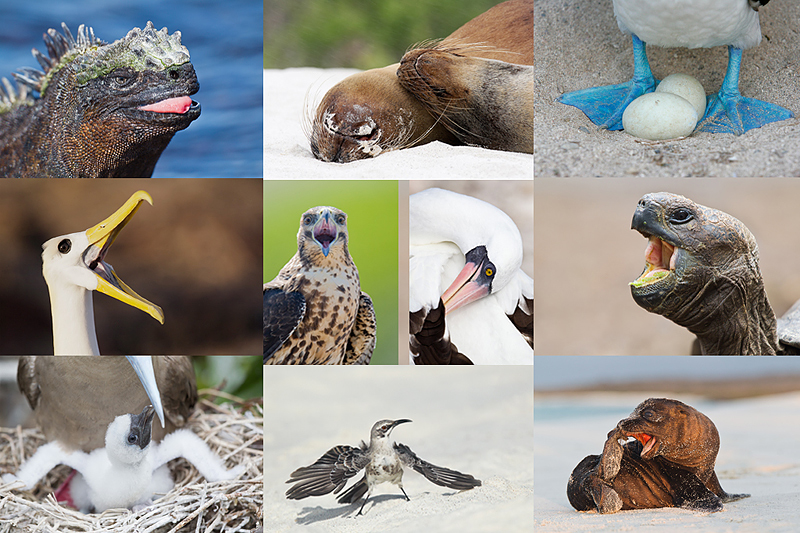
|
|
Do consider joining me for a once in a lifetime trip to the Galapagos archipelago in July, 2015.
|
GALAPAGOS Photo Cruise of a Lifetime IPT/The Complete Galapagos Photographic Experience. July 14-28, 2015 on the boat. 13 FULL and two half-days of photography: $12,499. Limit 13 including the leader:/Openings: 2.
Room for one lucky couple! Please contact me via e-mail me if this is your dream trip…. I can help make it happen.
My two-week Galapagos Photo-Cruises are without equal. The world’s best guide, a killer itinerary, a great boat (the Samba), and the best leader with eight Galapagos cruises under his belt. Pre-trip and pre-landing location-specific gear advice. In-the-field photo instruction and guidance. Jeez, I almost forgot: fine dining at sea!
The great spots that we will visit include Tower Island (including Prince Phillips Steps and Darwin Bay), Hood Island (including Punta Suarez, the world’s only nesting site of Waved Albatross, and Gardner Bay)—each of the preceding are world class wildlife photography designations that rank right up there with Antarctica, Africa, and Midway. We will also visit Fernandina, Puerto Ayora for the tortoises, Puerto Egas—James Bay, North Seymour and Isla Lobos for nesting Blue-footed Booby (most years), South Plaza, Floreana, and Urbina Bay, all spectacular in their own right. We visit every great spot on a single trip. Plus tons more. And there will he lots of opportunities to snorkel on sunny mid-days for those like me who wish to partake.
We will be the first boat on each island in the morning and the last boat to leave each island every afternoon. If we are blessed with overcast weather, we will often spend 5-6 hours at the best sites. And as noted above, mid-day snorkeling is an option on most sunny days depending on location. Note: some of the walks are a bit strenuous. Great images are possible on all landings with a hand held 70-200mm lens and a 1.4X teleconverter. I bring a longer lens ashore on most landings as that fits my style. I generally work with either the Canon 300mm f/2.8L IS or the Canon 200-400mm f/4 L IS with Internal Extender.
Do know that there is a NatureScapes Galapagos trip: one week for $8495. Thus, my trip represents a tremendous value; why go all that way and miss half of the great photographic locations?
The Logistics
Fly to Guayacil, Ecuador on July 12, 2015. Travel insurance/rest day: July 13 (We may or may not offer a photo outing on the 13th). Fly to the archipelago on July 14 and board the Samba. Get off the boat on July 28. Fly to Guayacil that afternoon. Fly home on the early morning of July 29 unless you are staying on or going elsewhere (or catching a red-eye flight on the evening of the 28th).
$12,499 includes just about everything: all transfers, guide and park fees, all food on the boat, transfers and ground transportation, your flights to the archipelago, and three nights (double occupancy) in a top notch hotel in Guayacil. If you are good to go, a non-refundable deposit of $5,000 per person is due immediately. The second payment of $4,000 is not due until 11/1/14. The final payment of $3449 per person will be due on 2/1/15. A $200 discount will be applied to each of the balances for couples or friends who register at the same time.
Purchasing travel insurance within 2 weeks of our cashing your deposit check is strongly recommended. On my past two cruises a total of 5 folks were forced to cancel less than one week prior to the trip. My family and I use Travel Insurance Services and strongly recommend that you do the same.
Not included: your round trip airfare from your home to and from Guayacil, beverages on the boat, phone calls, your meals in Guayacil, personal items, and a $600/person cash tip for the crew and the guide—this works out to roughly $40/day to be shared by the 7 folks who will be waiting on us hand and foot every day for two weeks. The service is so wonderful that many folks choose to tip extra.
Please e-mail for the complete itinerary and for additional info and images. Please cut and paste “Galapagos 2015 Info Please) into the Subject line.
IPT Updates
Would you like to visit some of the great bird photography locations on the planet? Would you like to learn from the best? Click here and join us.
Facebook
Be sure to like and follow BAA on Facebook by clicking on the logo link upper right. Tanks a stack!
Support the BAA Blog. Support the BAA Bulletins: Shop B&H here!
We want and need to keep providing you with the latest free information, photography and Photoshop lessons, and all manner of related information. Show your appreciation by making your purchases immediately after clicking on any of our B&H or Amazon Affiliate links in this blog post. Remember, B&H ain’t just photography!
…..
Amazon.com
Those who prefer to support BAA by shopping with Amazon may use this link:
Amazon Canada
Many kind folks from north of the border, eh, have e-mailed stating that they would love to help us out by using one of our affiliate links but that living in Canada and doing so presents numerous problems. Now, they can help us out by using our Amazon Canada affiliate link by starting their searches by clicking here. Many thanks to those who have written.
Typos
In all blog posts and Bulletins, feel free to e-mail or to leave a comment regarding any typos or errors. Just be right :).
December 5th, 2014
Thanks
Sincere thanks to those who have and those who continue to leave congratulatory comments on the streak. No worries. This is not a new streak. 🙂 Everyone’s kind words are greatly appreciated.
What’s Up?
Thursday was a rare day off. Though it looked like a total bust with heavy cloud cover at 5:30am there was a layer of thin cloud right at the horizon and it was easy to see well before 6:00am that all were going to be in for a rare treat. We were; there were pinks and purples everywhere with mega reflections. Images coming soon. I drove Denise to ABQ for her AA flight to Chile. I typed this paragraph in a Verizon store in Albuquerque; my Droid battery died. It is plenty cloudy up here so I will likely take another afternoon off. It actually rained in Socorro on Thursday, the first real daytime rain I experienced in 20 years of visits at this season. I wish that it had been colder….
Tonight I meet the sold-out Canon Destination workshop group. Jim Heupel will be co-leading with me. This blog post was published from my hotel room in Socorro, NM at 3:05am.
Incredible luck: photographing a big cat from my vehicle at Bosque
I once saw a Mountain Lion at the refuge. It was on the East Farm Loop Road. It was about 400 yards from me. As I got closer I saw that it was covered in mud and dripping wet. I thought at first that it was a huge River Otter. But as I continued to drive slowly towards the animal its long tail made its identity very clear. As with the one that I saw at Merritt Island NWR, it disappeared as quickly and quietly as it had appeared.
I never thought that I would have a chance to photograph a Big Cat at the refuge. But today, I had that chance and took every advantage of the opportunity. See image next.
|
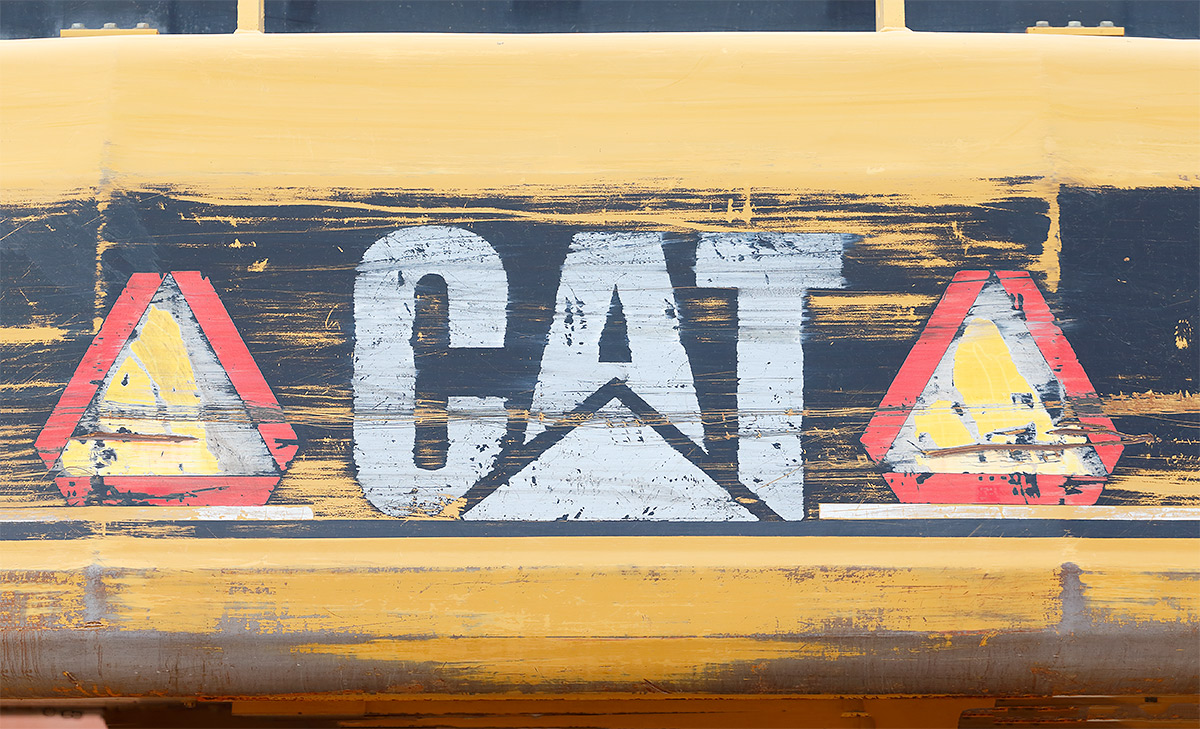
|
|
This image was created on the cloudy morning of December 4, 2014 on my day off after an amazingly breathtaking predawn filled with exposures as long as 8 seconds. Images coming soon. I used the Canon EF 200-400mm f/4L IS USM Lens with Internal 1.4x Extender (at 200mm) and the Canon EOS-1D X). ISO 800. Evaluative metering +1 stop as framed: 1/250 sec. at f/5.6. The lens was supported by the BLUBB, the Big Lens Ultimate BeanBag. There are lots of BLUBBs being driven around Bosque.
Central sensor/AI Servo-Surround on the black triangle in the A was active at the moment of exposure. Click here if you missed the Rear Focus Tutorial. Click on the image to see a larger version.
|
The Big Cat
Unfortunately the “Big Cat” that I photographed from the car today was not a Mountain Lion. It was a large Caterpillar bulldozer, one that has seen lots of use on the refuge. I had had my eyes on the Caterpillar logo for several days and once the huge machine was moved from one side of the road to the other all that I had to do was wait for a cloudy day. Thursday was bingo!
I guess that there is still a lot of little kid left in me.
110 Years Since the First test of the Steam-powered Track-type Tractor
November 24th past marked an important day in the Track-Type Tractor’s history — and Caterpillar’s for that matter. On this day in 1904 in Stockton, California Benjamin Holt tested his steam-powered track-type tractor prototype for the first time. Holt was not satisfied with the performance of his company’s steam traction engine tractors. Regions of California were difficult to prepare for crops because both horses and steam traction engine tractors got stuck in the soggy peat soil.
Holt’s first inclination was to experiment with wider wheels. Some of his machines had wheels that were each 18 feet wide; the engine itself was already 10 feet wide. For that reason, roads and gates to fields needed to be 46 feet wide. These experiments were inefficient, costly and added to the weight of the machine without improving its performance.
After years of research, Holt instructed his mechanics to remove the rear wheels from the 40-horsepower Holt Junior Steam Traction Engine #77 and replace them with a pair of tracks he had designed. These tracks were nine feet long and 24 inches wide. The track shoes consisted of three-by-four-inch wooden slats bolted to an endless chain. The weight of the machine moved on rollers anchored to a supplementary frame.
On Thanksgiving Day, November 24, 1904, this tracked machine was given its first field test and it performed very well. Today, #77 is recognized as the prototype of the world’s first commercially successful track-type tractor. You can learn more about this very interesting company by clicking here.
|
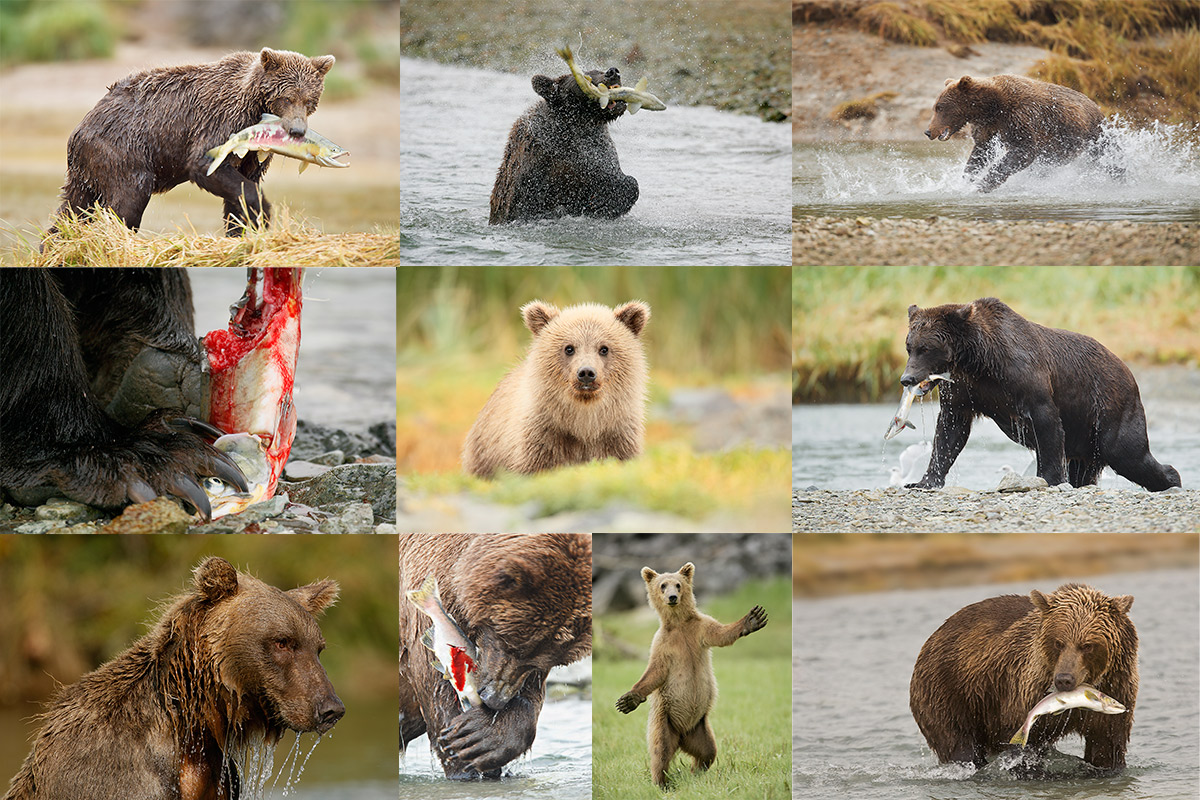
|
|
All of the images in the bear boat card above were created in Katmai National Park during the month of September.
|
Bear Boat/Bears Catching Salmon IPT: September 1-8, 2015 from Kodiak, AK/6 FULL & 2 1/2 DAYS: $6699. Happy campers only! Maximum 8/Openings: 5. Plus the leader: Arthur Morris.
If I do not have four deposit checks in hand by 1/31/2015 I reserve the right to scrap this trip so please do not purchase your plane tickets until you hear from me. 🙂 Only one to go.
Join me in Katmai National Park, AK for seven days of photographing Coastal Brown Bears (grizzlies) catching salmon, fattening up for the long winter. Other subjects will include Mew and Glaucous-winged Gulls in flight and dip-feeding on salmon roe. Did I mention that we live on a boat and that the food is great? Most of our photography will be done in a variety of famed locations: Geographic Harbor, Kinak Bay, and Kukak Bay. We once had 39 bears fishing the creek at Kukak….
It is mandatory that you be in Kodiak no later than the late afternoon of August 31, 2015 September to avoid missing the float planes to the boat on the morning of September 1. With air travel in AK being what it is, with the chance of fog or other bad weather–being on Kodiak on August 30 is an even better plan). I be on Kodiak on August 30 to avoid any potential disaster. That said in my nearly a dozen bear boat trips I was delayed only once but since I was day early as noted above there was no harm, no foul.
We will take one or more float planes to the boat mid-morning on September 1. We will photograph bears fishing that afternoon and every day for the next six days (weather permitting of course). We should have bears catching salmon every day. In addition, we will get some nice stuff on Mew Gull and Glaucous-winged Gulls dining on roe and the remains of predated salmon. We may–depending on where the concentrations of bears are–get to photograph Harbor seals and some hauled out Steller’s Sea Lions (an endangered species). Halibut fishing (license required) is optional. On September 8, our last morning on the boat, those who would like to enjoy one last photo session will do so. The group returns to Kodiak via float plane midday. Most folks will fly to Anchorage and then continue on red-eye flights to their home cities.
The eight days will consist of six full days (Sept 2, 3, 4, 5, 6, & 7) of photography featuring lots of Coastal Brown Bears catching salmon as above plus a variety of other natural history subjects plus some nice scenic photography that I forgot to mention above. Plus the first afternoon and the last morning.
What’s included? 8 DAYS/7 NIGHTS on the boat as above. All meals on the boat. (The food is quite excellent.) National Park fees. One night’s double occupancy lodging on Kodiak; arrive: Sept 1/depart: Sept 2. The thank-you-in-advance dinner on Sept 1. In-the-field photo tips, instruction, and guidance. An insight into the mind of a top professional; I will constantly let you know what I am thinking, what I am doing, and why I am doing it. Small group image review, image sharing, and Photoshop instruction on the boat.
What’s not included: Your round trip airfare to and from Kodiak, AK (almost surely through Anchorage). All necessary lodging other than the cost of your double occupancy room on the night of August 31 should you opt to arrive early–we can arrange that in advance for you. We will let you know the cost of a single supplement for the one night if so desired. The cost of the round-trip float plane to the boat on September 2 and back to Kodiak on September 9. The cost of a round trip this year was $500. The suggested crew tip of $210.
Is this an expensive trip? Yes, of course. But with 6 full and two half days, a wealth of great subjects, and the fact that you will be walking with the bears just yards away (or less….) it will be one of the great natural history experiences of your life. Most folks who take part in a Bear Boat IPT wind up coming back for more.
A $2,000 per person non-refundable deposit by check only made out to “Arthur Morris” is required to hold your spot. Please click here to read our cancellation policy. Then please print, read, and sign the necessary paperwork here and send it to us.
Your deposit is due immediately. That will leave a balance of $4699. The next payment of $2699 will be due on February 15, 2015. The final payment of $2000 is due on May 1, 2015.
I hope that you can join us for this wondrously exciting trip.
By e-mail from Bill Keown, veteran of three bear boat trips!
Hi Artie, What a great trip! With the exception of the one bright sunny day it was just great. Very different from my first trip in June where we only had the bears clamming; the fishing bears were amazing! As always I learned a lot and enjoyed the group immensely. All the Best, Bill
Facebook
Be sure to like and follow BAA on Facebook by clicking on the logo link upper right. Tanks a stack!
Support the BAA Blog. Support the BAA Bulletins: Shop B&H here!
We want and need to keep providing you with the latest free information, photography and Photoshop lessons, and all manner of related information. Show your appreciation by making your purchases immediately after clicking on any of our B&H or Amazon Affiliate links in this blog post. Remember, B&H ain’t just photography!
…..
Amazon.com
Those who prefer to support BAA by shopping with Amazon may use this link:
Amazon Canada
Many kind folks from north of the border, eh, have e-mailed stating that they would love to help us out by using one of our affiliate links but that living in Canada and doing so presents numerous problems. Now, they can help us out by using our Amazon Canada affiliate link by starting their searches by clicking here. Many thanks to those who have written.
Typos
In all blog posts and Bulletins, feel free to e-mail or to leave a comment regarding any typos or errors. Just be right :).
December 4th, 2014 Thanks
Sincere thanks to the many who left congratulatory comments on a solid year of educational blog posts. Your kind words were and are greatly appreciated. I enjoyed taking a day off from the blog after 366 consecutive posts. 🙂
What’s Up?
Today is a rare day off. In spite of that, i’ve been up working since well before 3am. No worries, I was asleep by 8:30pm. I drive Denise to the Albuquerque Airport for her redeye flights to Chile’s Patagonia. Best wishes to her for a great trip. I’ll check out the eastern sky before deciding whether to head down to the refuge for a short afternoon photo session.
|
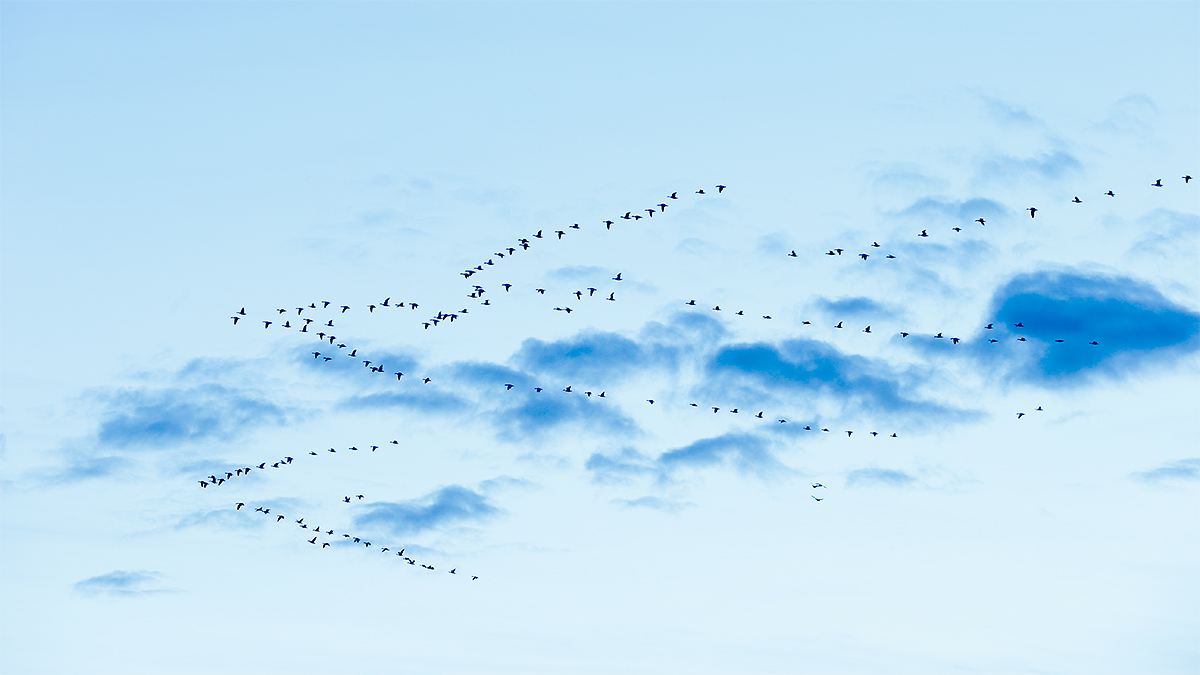
|
|
This image was created at 6:46am on December 3, the fourth and last morning of this year’s 4-day Bosque IPT. I used the hand held Canon EF 70-200mm f/2.8L IS II lens (at 120mm) and the Canon EOS-1D X. ISO 400. Evaluative metering + 1 1/3 stops as framed: 1/60 sec. at f/7.1 in Tv mode. Could have been +2 stops.
Central sensor/AI Servo Surround/Rear Focus AF as framed was active at the moment of exposure. Click here if you missed the Rear Focus Tutorial. Be sure to click on the image to see a larger version. Color temperature: 4000K.
|
Ice Blue
Things were looking good on Wednesday morning for what we thought would be three out of four spectacular red sunrises but as I say often, “You don’t ever want to get into the business of predicting sunrise or sunset color.” When the clouds predominated, I went to 4000K to heighten the BLUE look. We did enjoy both the different look and several huge fly-ins and blast offs.
We finished the IPT at noon with a sensor cleaning tutorial session in the hotel lobby followed by lots of good-bye hugs. Again, several new folks mentioned that they were surprised to find out that I was such a nice guy and that I was so helpful and caring (after what they had been hearing about me). 🙂
Folks marveled about how I had the group in the exact right place pretty much all the time. You can learn to photograph t0 Bosque like a 20-year veteran by purchasing and studying my Bosque Site Guide (see same below)
The 70-200mm f/2.8L IS at Bosque
Having a 70-200 f/2.8 L IS on a Black Rapid RS-7 Strap in the pre-dawn and at dusk can pay huge dividends. There are many other intermediate telephotos that can be equally effective. Wednesday morning was the first time in two weeks that Denise Ippolito used her big lens at sunrise. Previously, she had depended entirely on her 70-200 enjoying the freedom of hand holding and being able to move around quickly.
Zoom lenses offer a great deal of flexibility when it comes to framing the skeins and flocks of geese. Adding either teleconverter gives you even more options. Intermediate telephoto options include the following:
Canon EF 100-400mm f/4.5-5.6L IS II USM lens
Canon EF 70-200mm f/4L IS USM lens
Canon EF 70-300mm f/4-5.6L IS USM lens
Nikon AF-S NIKKOR 28-300mm f/3.5-5.6G ED VR lens
Nikon AF-S NIKKOR 70-200mm f/2.8G ED VR II lens
Nikon AF-S NIKKOR 80-400mm f/4.5-5.6G ED VR lens
Sigma 50-500mm f/4.5-6.3 APO DG OS HSM lens for Canon EOS
Sigma 50-500mm f/4.5-6.3 APO DG OS HSM lens for Nikon
Tamron SP 70-300mm f/4-5.6 Di VC USD Telephoto Zoom lens for Canon Digital SLRs
Tamron SP 150-600mm f/5-6.3 Di VC USD Lens for Canon
The Bosque Site Guide
All BAA Site Guides are designed so that with a bit of study you can show up at a great place and know exactly where to be at what time on what wind and in what lighting conditions. With a Site Guide on your laptop you will feel like a 20-year veteran even on your first visit. Site Guides are the next best thing to being on an IPT. If you plan on visiting the refuge it would be foolish to make the trip without having this guide in hand. Why spend money on gear and travel and then spend days stumbling around in the wrong spots? If you have visited previously, and are still unsure of where you should be at this time of day with that wind, this guide will prove invaluable to you as well.
You can order yours here or check out all of our site guides here.
|
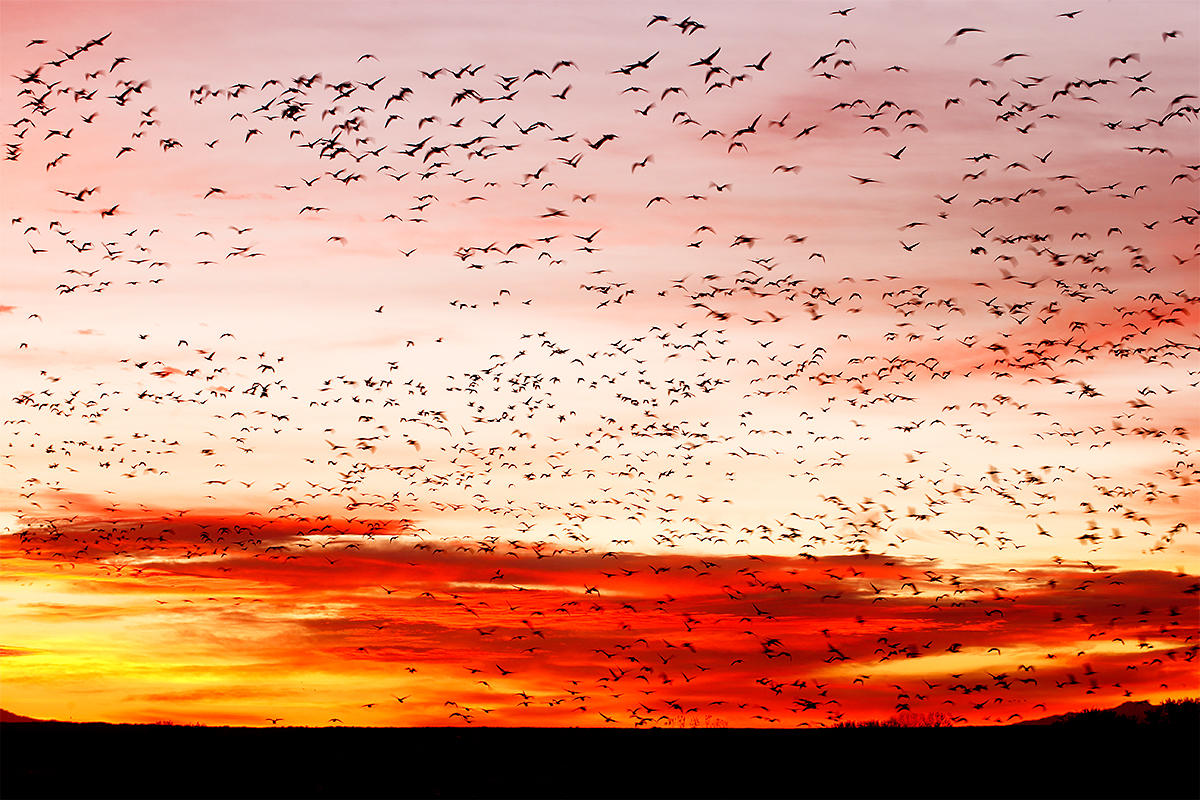
|
|
This image was created at 6:39am on December 2, the third morning of this year’s 4-day Bosque IPT. I used the hand held Canon EF 70-200mm f/2.8L IS II lens with the Canon Extender EF 1.4X III (at 140mm) and the Canon EOS-1D X. ISO 160. Evaluative metering + 2/3 stop as framed: 1/30 sec. at f/7.1 in Tv mode. Cloudy White Balance.
Central sensor/AI Servo Surround/Rear Focus AF as originally framed was active at the moment of exposure. Click here if you missed the Rear Focus Tutorial. Be sure to click on the image to see a larger version.
|
Fire
The Tuesday morning sunrise was a barn burner. You could have pointed a cell phone at the eastern horizon and made some great images. Pretty much everyone embraced my predawn strategy of using Tv mode with Auto ISO and exposure compensation to work faster and more efficiently than when working in Manual mode. With the former, you need only to change one parameter–the exposure compensation– to keep on photographing. And you have the option of changing the shutter speed by simply rolling the index finger wheel. Note: rather than using Auto ISO I set a low ISO such as 100 and use ISO Safety Shift as described in my various camera body User’s Guides.
My strategy is so simple that yesterday morning even Denise Ippolito tried it.
Wednesday was the first morning that I did not have a third camera body with either the Canon EF 16-35mm f/4L IS USM or the Canon EF 24-70mm f/2.8L II USM lens with me in the pre-dawn. As is almost always the case when you get lazy, you pay. At one point the entire eastern sky was filled with geese and color. 🙂
|

|
|
Learn the secrets of creating contest winning images in our “A Guide to Pleasing Blurs.”
|
A Guide to Pleasing Blurs
While lying in bed in the middle of last night and thinking of finishing this blog post, I realized that the two oof bird images were actually de-focused blurs, one of the many categories that we discuss and detail in our great eGuide, A Guide to Pleasing Blurs by Denise Ippolito and yours truly.
Pleasing Blurs are not accidents. Learn pretty much everything that there is about creating them in this instructive (as always) guide.
Speaking of Denise Ippolito
Here is the comment that I left on Denise’s blog yesterday:
|

|
|
You can see Denise’s outstanding and inspiring collection of images in her “Reflecting on My Time at Bosque…” blog post here.
|
|
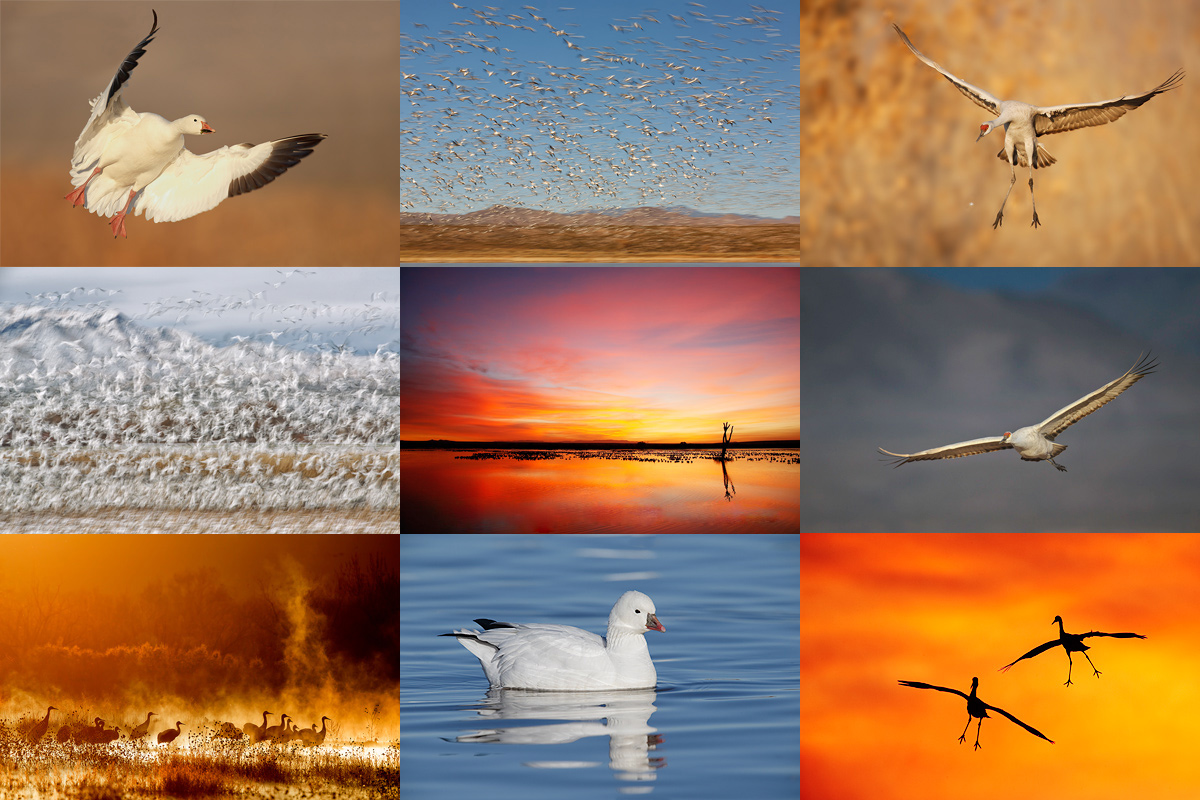
|
|
In 2015, we are offering a 3-DAY IPT before Thanksgiving and a 4-DAY IPT after the holiday. You can attend either and spend Thanksgiving Day with your family. Sign up for both and we will be glad to apply a $100 discount to your balance.
We know that there are lots of less costly workshops being offered these days. Please remember that you get exactly what you pay for. If you want the finest in photographic instruction and want to be assured of being in the right spot at exactly the right time, do join us.
|
Bosque del Apache 2015 BIRDS AS ART/A Creative Adventure Instructional Photo-Tour (IPT). 3-FULL DAY IPT: NOV 22-24, 2015. $1149. Meet and greet and introductory slide program after dinner on your own at 7:00pm on SAT NOV 21.
Two great leaders: Denise Ippolito and Arthur Morris
Tens of thousands of Snow Geese, 10,000 Sandhill Cranes, ducks, amazing sunrises, sunsets, and blast-offs. Live, eat, and breathe photography with two of the world’s premier photographic educators at one of their very favorite photography locations on the planet. Top-notch in-the-field and Photoshop instruction. This will make 21 consecutive Novembers at Bosque for artie. This will be denise’s 7th workshop at the refuge. Nobody knows the place better than artie does. Join us to learn to think like a pro, to recognize situations and to anticipate them based on the weather, especially the sky conditions, the light, and the wind direction. Every time we make a move we will let you know why. When you head home being able to apply what you’ve learned on your home turf will prove to be invaluable.
This workshop includes 3 morning and 3 afternoon photography sessions, an inspirational introductory slide program after dinner on your own on Saturday, 11/21, all lunches, and after-lunch digital workflow, Photoshop, and image critiquing sessions.
There is never a strict itinerary on a Bosque IPT as each day is tailored to the local conditions at the time and to the weather. We are totally flexible in order to maximize both the photographic and learning opportunities. We are up early each day leaving the hotel by 5:30 am to be in position for sunrise. We usually photograph until about 10:30am. Then it is back to Socorro for lunch and then a classroom session with the group most days. We head back to the refuge at about 3:30pm each day and photograph until sunset. We will be photographing lots of Snow Geese and lots of Sandhill Cranes with the emphasis on expanding both your technical skills and your creativity.
A $449 non-refundable deposit is required to hold your slot for this IPT. Your balance, payable only by check, will be due on 7/25/2015. If you cancel and the trip fills, we will be glad to apply a credit applicable to a future IPT for the full amount less a $100 processing fee. If we do not receive your check for the balance on or before the due date we will try to fill your spot from the waiting list. Whether or not your spot is filled, you will lose your deposit. If not, you can secure your spot by paying your balance.
Please print, complete, and sign the form that is linked to here and shoot it to us along with your deposit check (made out to “Arthur Morris.”) You can also leave your deposit with a credit card by calling the office at 863-692-0906. If you register by phone, please print, complete and sign the form as noted above and either mail it to us or e-mail the scan. If you have any questions, please feel free to contact me via e-mail.
|
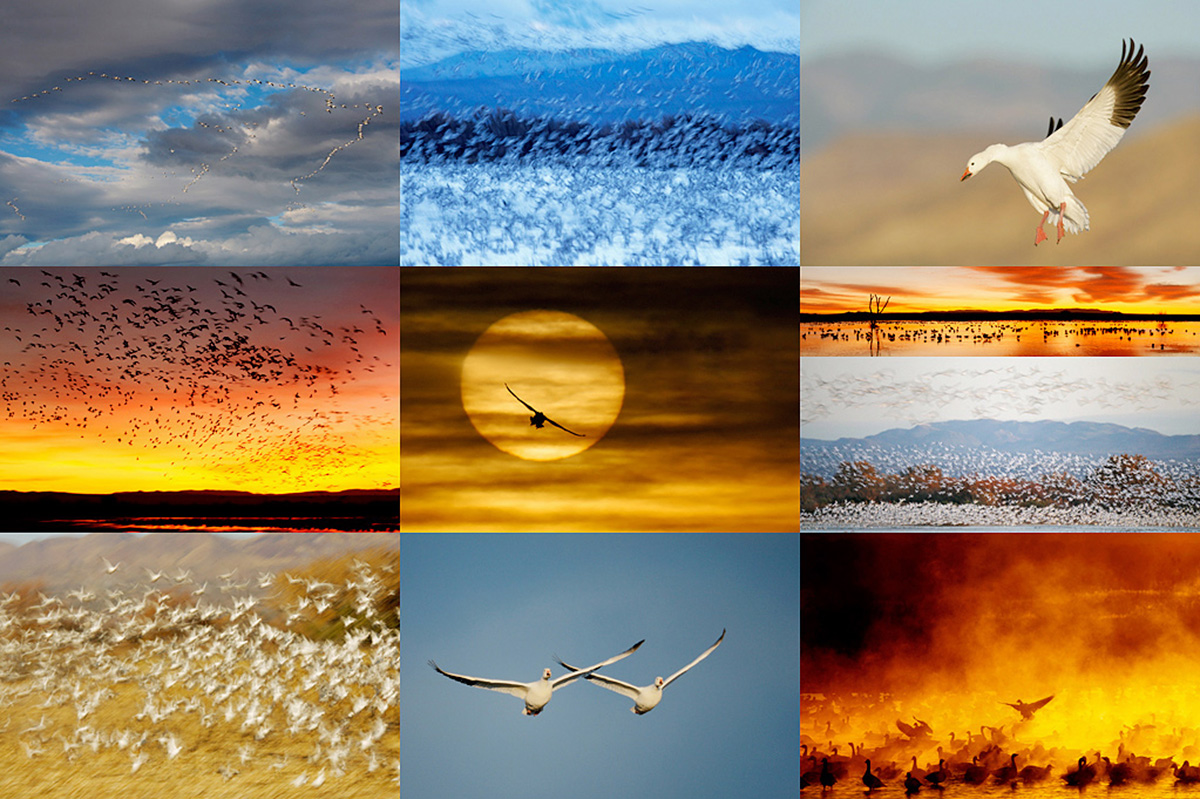
|
|
In 2015, we are offering a 3-DAY IPT before Thanksgiving and a 4-DAY IPT after the holiday. You can attend either and spend Thanksgiving Day with your family. Sign up for both and we will be glad to apply a $100 discount to your balance.
We know that there are lots of less costly workshops being offered these days. Please remember that you get exactly what you pay for. If you want the finest in photographic instruction and want to be assured of being in the right spot at exactly the right time, do join us.
|
Bosque del Apache 2015 BIRDS AS ART/A Creative Adventure Instructional Photo-Tour (IPT). 4-DAY IPT: (three full and two 1/2 DAYS) NOV 28-DEC 2, 2015. $1499. Meet and greet at 3pm on SAT NOV 28 followed by an afternoon photo session at the crane pools and the introductory slide program after dinner on your own.
Two great leaders: Denise Ippolito and Arthur Morris
Tens of thousands of Snow Geese, 10,000 Sandhill Cranes, ducks, amazing sunrises, sunsets, and blast-offs. Live, eat, and breathe photography with two of the world’s premier photographic educators at one of their very favorite photography locations on the planet. Top-notch in-the-field and Photoshop instruction. This will make 21 consecutive Novembers at Bosque for artie. This will be denise’s 7th workshop at the refuge. Nobody knows the place better than artie does. Join us to learn to think like a pro, to recognize situations and to anticipate them based on the weather, especially the sky conditions, the light, and the wind direction. Every time we make a move we will let you know why. When you head home being able to apply what you’ve learned on your home turf will prove to be invaluable.
This workshop includes 4 afternoon (11/28through 12/1), 4 morning (11/29 to 12/2) photography sessions, an inspirational introductory slide program after dinner on your own on Saturday, 11/28, all lunches, and after-lunch digital workflow, Photoshop, and image critiquing sessions.
There is never a strict itinerary on a Bosque IPT as each day is tailored to the local conditions at the time and to the weather. We are totally flexible in order to maximize both the photographic and learning opportunities. We are up early each day leaving the hotel by 5:30 am to be in position for sunrise. We usually photograph until about 10:30am. Then it is back to Socorro for lunch and then a classroom session with the group most days. We head back to the refuge at about 3:30pm each day and photograph until sunset. We will be photographing lots of Snow Geese and lots of Sandhill Cranes with the emphasis on expanding both your technical skills and your creativity.
A $599 non-refundable deposit is required to hold your slot for this IPT. Your balance, payable only by check, will be due on 7/25/2015. If you cancel and the trip fills, we will be glad to apply a credit applicable to a future IPT for the full amount less a $100 processing fee. If we do not receive your check for the balance on or before the due date we will try to fill your spot from the waiting list. Whether or not your spot is filled, you will lose your deposit. If not, you can secure your spot by paying your balance.
Please print, complete, and sign the form that is linked to here and shoot it to us along with your deposit check (made out to “Arthur Morris.”) You can also leave your deposit with a credit card by calling the office at 863-692-0906. If you register by phone, please print, complete and sign the form as noted above and either mail it to us or e-mail the scan. If you have any questions, please feel free to contact me via e-mail.
BIRDS AS ART Instructional Photo Tours (IPTs)
For a listing of all currently offered IPTs, click here.
Click here for BIRDS AS ART Instructional Photo-Tour (IPT) General Information.
Click here for BIRDS AS ART Instructional Photo-Tour (IPT) Deposit and Cancellation Policies.
Click here for BIRDS AS ART Instructional Photo-Tour (IPT) Registration and Release Forms.
DPP 4 eGuide 7D II Update
If you have purchased the DPP 4 eGuide and have purchased a 7D II, please request the free update by shooting Jim an e-mail with the words DPP 4 7D II Update cut and pasted into the Subject Line. You must include some sort of proof of purchase; a cut and paste of page 2 of the current guide will suffice. If you send your request without including proof of purchase your updated eGuide will not be sent 🙂
Facebook
Be sure to like and follow BAA on Facebook by clicking on the logo link upper right. Tanks a stack!
Support the BAA Blog. Support the BAA Bulletins: Shop B&H here!
We want and need to keep providing you with the latest free information, photography and Photoshop lessons, and all manner of related information. Show your appreciation by making your purchases immediately after clicking on any of our B&H or Amazon Affiliate links in this blog post. Remember, B&H ain’t just photography!
…..
Amazon.com
Those who prefer to support BAA by shopping with Amazon may use this link:
Amazon Canada
Many kind folks from north of the border, eh, have e-mailed stating that they would love to help us out by using one of our affiliate links but that living in Canada and doing so presents numerous problems. Now, they can help us out by using our Amazon Canada affiliate link by starting their searches by clicking here. Many thanks to those who have written.
Typos
In all blog posts and Bulletins, feel free to e-mail or to leave a comment regarding any typos or errors. Just be right :).
December 3rd, 2014 Thanks
Sincere thanks to the many who left congratulatory comments on a solid year of educational blog posts. Your kind words were and are greatly appreciated. I enjoyed taking a day off from the blog after 366 consecutive posts. 🙂
What’s Up?
On Tuesday, the morning of the third full day of this year’s 4-Day Bosque IPT, we lucked out again with a second killer sunrise with big flocks of geese flying back and forth through the color for more than fifteen minutes. The tour loop road was totally dead so we did a bunch of teaching near the Flight Deck after a group potty stop. Topics covered included rear focus, shutter button AF, setting the limit range switch on both Canon and Nikon lenses, and creating and saving sets of custom settings. In addition, Denise and I shared our My Menu items and the reasons for our individual choices.
Today is the 4th and last morning of what has been a great IPT. This blog post took about two hours to prepare and was published at 4:33am from my hotel room in Socorro, NM.
Please Help Support My Work on the BAA Blog
Thanks a Stack! The last six weeks have been great!
The last seven weeks have been quite rewarding with more and more folks making it a habit to use my B&H links especially for their major gear purchases. It is great to feel appreciated. Thanks a stack to all who used our links for purchases large and small.
To show your appreciation for my efforts here, we ask, as always, that you use our the B&H and Amazon affiliate links on the right side of the blog for all of your purchases. B&H Is recommended for you major photography gear purchases, Amazon for your household, entertainment, and general purpose stuff. Please check the availability of all photographic accessories in the BIRDS AS ART Online Store, especially Gitzo tripods, Wimberley tripod heads, and the like. We sell only what I have used, have tested, and can depend on. We will not sell you junk. We know what you need to make creating great images easy and fun. And we are always glad to answer your gear questions via e-mail.
I would of course appreciate your using our B&H affiliate links for all of your major gear, video, and electronic purchases. For the photographic stuff mentioned in the paragraph above we, meaning BAA, would of course greatly appreciate your business. Here is a huge thank you to the many who have been using our links on a regular basis and visiting the BAA Online store as well.
Thanks Donna!
This image was inspired by multiple IPT veteran Donna Bourdon (Old Car City and UK Puffins and Gannets). I had been using my 200-400 with Internal Extender every morning for the Main Impoundment fly-ins and blast offs. After seeing some of the images that Donna made of geese against a blood red sky with her 600II/1.4X III/7D II rig, I decided to go that route after noting some nice clouds on the eastern horizon. One thing is for sure, you cannot beat the reach of this combo at f/5.6…
Three Mistakes…
Not sure how I wound up in 65-Point Automatic Selection AF Area Selection mode; I should have been in my usual AI Servo Surround. In Tv mode I thought that I had rolled the index finger wheel enough clicks to get to 1/125 sec. I fell one click short of that. I should have snugged up the controls on the Mongoose M3.6 a bit. All three of my errors led to this image being a bit less sharp than I would have preferred. When you see a gorgeous bird floating in surreal pink water your brain does not always work as it should. 🙂
Used Sigma Zoom Super Telephoto 300-800mm f/5.6 EX DG APO IF HSM Autofocus Lens for Canon EOS
Beth Starr is offering a used Sigma Zoom Super Telephoto 300-800mm f/5.6 EX DG APO IF HSM Autofocus Lens for Canon EOS, aka The Sigmonster, in like-new condition. Used only 3-4 times: $5,500. The sale includes the original shipping box and the original lens case. Includes insured ground shipping in the continental US. You can call Beth on here cell at 908-625-1589 or by e-mail. James Shadle has used the Nikon mount version of this lens to create many great images. Strong folks can save a bundle as this is a steal at $2,499 below the list price.
Canon EOS-7D Mark II Back in Stock at B&H and Now Shipping
B&H has a limited supply of Canon EOS-7D Mark II bodies in stock. They are ready to ship you one today. Take part in the revolution. Need reach along with a great AF system and superb image quality? Order yours today by clicking on the logo link below.
Does anything about the 7D Mark II bug you?
If anything about the 7D Mark II bugs you, please let me know via e-mail.

 If what you’ve learned here on my blog about the Canon EOS-7D Mark II has inspired you to purchase this great new camera body, please consider using the logo link above to support our efforts here in bringing you the latest, greatest educational materials on daily basis.
If what you’ve learned here on my blog about the Canon EOS-7D Mark II has inspired you to purchase this great new camera body, please consider using the logo link above to support our efforts here in bringing you the latest, greatest educational materials on daily basis.
The Bosque Site Guide
All BAA Site Guides are designed so that with a bit of study you can show up at a great place and know exactly where to be at what time on what wind and in what lighting conditions. With a Site Guide on your laptop you will feel like a 20-year veteran even on your first visit. Site Guides are the next best thing to being on an IPT. If you plan on visiting the refuge it would be foolish to make the trip without having this guide in hand. Why spend money on gear and travel and then spend days stumbling around in the wrong spots? If you have visited previously, and are still unsure of where you should be at this time of day with that wind, this guide will prove invaluable to you as well.
You can order yours here or check out all of our site guides here.
|

|
|
All of the images in the bear boat card above were created in Katmai National Park during the month of September.
|
Bear Boat/Bears Catching Salmon IPT: September 1-8, 2015 from Kodiak, AK/6 FULL & 2 1/2 DAYS: $6699. Happy campers only! Maximum 8/Openings: 5. Plus the leader: Arthur Morris.
If I do not have four deposit checks in hand by 1/31/2015 I reserve the right to scrap this trip so please do not purchase your plane tickets until you hear from me. 🙂 Only one to go.
Join me in Katmai National Park, AK for seven days of photographing Coastal Brown Bears (grizzlies) catching salmon, fattening up for the long winter. Other subjects will include Mew and Glaucous-winged Gulls in flight and dip-feeding on salmon roe. Did I mention that we live on a boat and that the food is great? Most of our photography will be done in a variety of famed locations: Geographic Harbor, Kinak Bay, and Kukak Bay. We once had 39 bears fishing the creek at Kukak….
It is mandatory that you be in Kodiak no later than the late afternoon of August 31, 2015 September to avoid missing the float planes to the boat on the morning of September 1. With air travel in AK being what it is, with the chance of fog or other bad weather–being on Kodiak on August 30 is an even better plan). I be on Kodiak on August 30 to avoid any potential disaster. That said in my nearly a dozen bear boat trips I was delayed only once but since I was day early as noted above there was no harm, no foul.
We will take one or more float planes to the boat mid-morning on September 1. We will photograph bears fishing that afternoon and every day for the next six days (weather permitting of course). We should have bears catching salmon every day. In addition, we will get some nice stuff on Mew Gull and Glaucous-winged Gulls dining on roe and the remains of predated salmon. We may–depending on where the concentrations of bears are–get to photograph Harbor seals and some hauled out Steller’s Sea Lions (an endangered species). Halibut fishing (license required) is optional. On September 8, our last morning on the boat, those who would like to enjoy one last photo session will do so. The group returns to Kodiak via float plane midday. Most folks will fly to Anchorage and then continue on red-eye flights to their home cities.
The eight days will consist of six full days (Sept 2, 3, 4, 5, 6, & 7) of photography featuring lots of Coastal Brown Bears catching salmon as above plus a variety of other natural history subjects plus some nice scenic photography that I forgot to mention above. Plus the first afternoon and the last morning.
What’s included? 8 DAYS/7 NIGHTS on the boat as above. All meals on the boat. (The food is quite excellent.) National Park fees. One night’s double occupancy lodging on Kodiak; arrive: Sept 1/depart: Sept 2. The thank-you-in-advance dinner on Sept 1. In-the-field photo tips, instruction, and guidance. An insight into the mind of a top professional; I will constantly let you know what I am thinking, what I am doing, and why I am doing it. Small group image review, image sharing, and Photoshop instruction on the boat.
What’s not included: Your round trip airfare to and from Kodiak, AK (almost surely through Anchorage). All necessary lodging other than the cost of your double occupancy room on the night of August 31 should you opt to arrive early–we can arrange that in advance for you. We will let you know the cost of a single supplement for the one night if so desired. The cost of the round-trip float plane to the boat on September 2 and back to Kodiak on September 9. The cost of a round trip this year was $500. The suggested crew tip of $210.
Is this an expensive trip? Yes, of course. But with 6 full and two half days, a wealth of great subjects, and the fact that you will be walking with the bears just yards away (or less….) it will be one of the great natural history experiences of your life. Most folks who take part in a Bear Boat IPT wind up coming back for more.
A $2,000 per person non-refundable deposit by check only made out to “Arthur Morris” is required to hold your spot. Please click here to read our cancellation policy. Then please print, read, and sign the necessary paperwork here and send it to us.
Your deposit is due immediately. That will leave a balance of $4699. The next payment of $2699 will be due on February 15, 2015. The final payment of $2000 is due on May 1, 2015.
I hope that you can join us for this wondrously exciting trip.
By e-mail from Bill Keown, veteran of three bear boat trips!
Hi Artie, What a great trip! With the exception of the one bright sunny day it was just great. Very different from my first trip in June where we only had the bears clamming; the fishing bears were amazing! As always I learned a lot and enjoyed the group immensely. All the Best, Bill
|
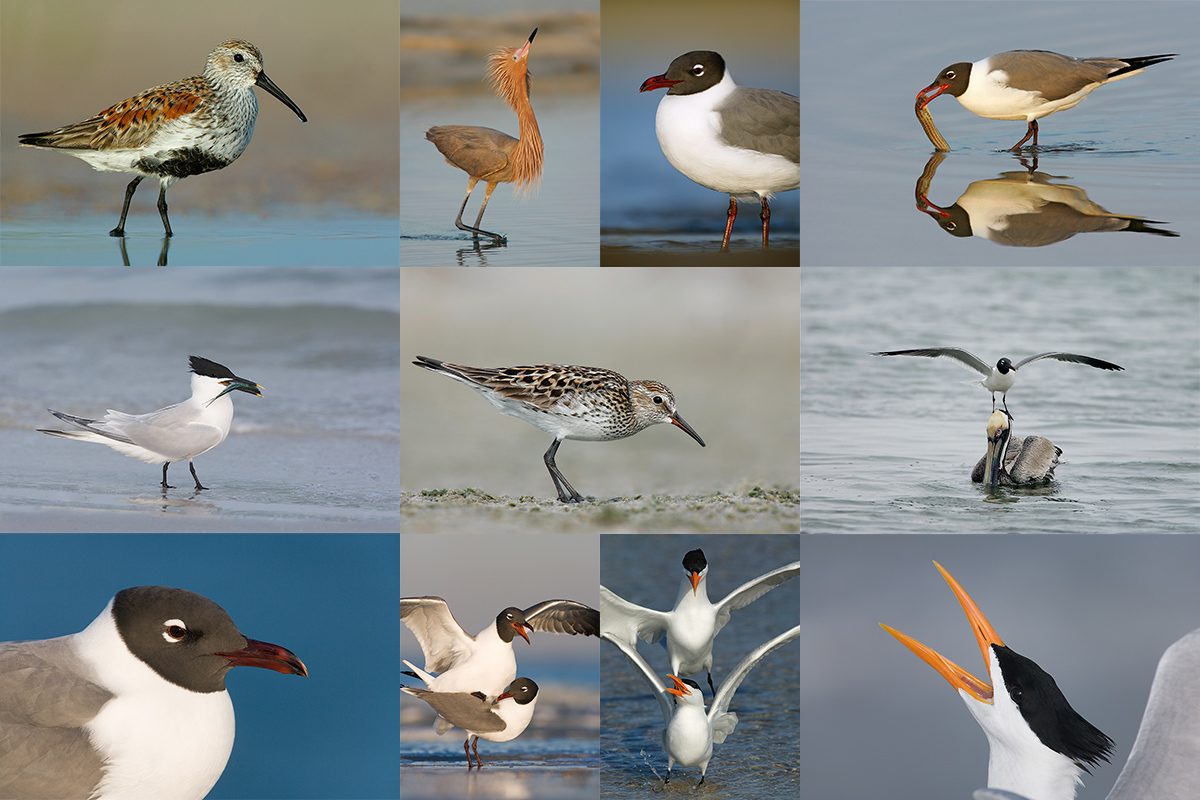
|
|
Fort DeSoto in spring can be bird photographer’s heaven. And most of the birds are stupid tame.
|
Fort DeSoto in Spring/Breeding Plumage IPT: April 24-26, 2015. 3 FULL DAYs: $1099. Limit 8/Openings: 7.
Meet and Greet at 8pm on Thursday, April 23.
Join me at Fort DeSoto at the height of the breeding season for many of our target species: Laughing Gull, Royal Tern, Sandwich Tern, dark and light morph Reddish Egret, Great Egret, Tricolored Heron, and Yellow-crowned Night-Heron. In addition, we will have a good shot at photographing a variety of arctic-bound shorebird species in breeding plumage. We should have good chances with a variety of courtship behaviors including courtship feeding, courtship displays, pre-copulatory stands, and copulation.
On this IPT you will the learn basics and fine points of digital exposure and how to get the right exposure every time after making a single test exposure, how to approach free and wild birds without disturbing them, to understand and predict bird behavior, to identify many species of shorebirds, to spot the good situations, to choose the best perspective, to see and understand the light, and to design pleasing images by mastering your camera’s AF system. And you will learn learn how and why to work in Manual mode (even if you’re scared of it).
At lunch (included) we will review my images–folks learn a ton watching me edit–why keep this one and delete that one. If you opt to bring your laptop, we will take a look at five of your best images from the morning session. We will process a few of my images in Photoshop after converting them in DPP. That followed by Instructor Nap Time.
A $499 non-refundable deposit is required to hold you spot. The balance, $600 will be due on February 7, 2015. Please click here to read our cancellation policy. Then please print, read, and sign the necessary paperwork here and send it to us.
Facebook
Be sure to like and follow BAA on Facebook by clicking on the logo link upper right. Tanks a stack!
Support the BAA Blog. Support the BAA Bulletins: Shop B&H here!
We want and need to keep providing you with the latest free information, photography and Photoshop lessons, and all manner of related information. Show your appreciation by making your purchases immediately after clicking on any of our B&H or Amazon Affiliate links in this blog post. Remember, B&H ain’t just photography!
…..
Amazon.com
Those who prefer to support BAA by shopping with Amazon may use this link:
Amazon Canada
Many kind folks from north of the border, eh, have e-mailed stating that they would love to help us out by using one of our affiliate links but that living in Canada and doing so presents numerous problems. Now, they can help us out by using our Amazon Canada affiliate link by starting their searches by clicking here. Many thanks to those who have written.
Typos
In all blog posts and Bulletins, feel free to e-mail or to leave a comment regarding any typos or errors. Just be right :).
December 1st, 2014 Thanks
Sincere thanks to the many who left congratulatory comments on a solid year of educational blog posts. Your kind words were and are greatly appreciated.
The Streak Continues: 366
On Sunday, the morning of first full day of the 4-Day Bosque IPT, we lucked out with a killer sunrise–an eight out of ten for Bosque–with big flocks of geese flying back and forth through the color for more than fifteen minutes. We did well for the rest of the day and everyone learned a ton. This blog post was published from my hotel room in Socorro, NM at 4:00am.
Please Help Support My Work on the BAA Blog
Thanks a Stack! The last six weeks have been great!
The last six weeks have been quite rewarding with more and more folks making it a habit to use my B&H links especially for their major gear purchases. It is great to feel appreciated. Thanks a stack to all who used our links for purchases large and small.
To show your appreciation for my efforts here, we ask, as always, that you use our the B&H and Amazon affiliate links on the right side of the blog for all of your purchases. B&H Is recommended for you major photography gear purchases, Amazon for your household, entertainment, and general purpose stuff. Please check the availability of all photographic accessories in the BIRDS AS ART Online Store, especially Gitzo tripods, Wimberley tripod heads, and the like. We sell only what I have used, have tested, and can depend on. We will not sell you junk. We know what you need to make creating great images easy and fun. And we are always glad to answer your gear questions via e-mail.
I would of course appreciate your using our B&H affiliate links for all of your major gear, video, and electronic purchases. For the photographic stuff mentioned in the paragraph above we, meaning BAA, would of course greatly appreciate your business. Here is a huge thank you to the many who have been using our links on a regular basis and visiting the BAA Online store as well.
The State of the Bosque
I’ve been here for more than two weeks, during this, my 20th consecutive Thanksgiving at the refuge. As always, things are different. And as always, whatever the conditions, Bosque can be wondrously inspiring and exciting at any given moment. The early morning fly-ins and blast offs have been both dependable and spectacular; if you are lucky enough to have some thin clouds in the east at 6:30am, you will be blessed with some of the best opportunities that you might ever have imagined.
With the total corn crop at zero this year–the refuge has been unable to attract the best farmers since they were screwed by the Feds and the Rio Grande Silvery Minnow –during a severe drought, the movement of the large flocks around the refuge during the daylight hours has been hit or miss at best. Daytime goose blast-off opportunities have been virtually absent for the past ten days.
Management has however done some neat stuff by moving water around creatively. This and that field have alternately flooded and drained. This has provided some excellent duck and blackbird blastoff opps, and earlier on, some good Snow Goose blasts as well.
Neither crane pool was plowed because the mud created by unexpected late summer rains made it impossible to get bulldozers and other heavy machinery safely into them. Harry’s Crane Pool is pretty much an overgrown mess. The Ed Kranepool is in much better shape but for reasons unknown to me, the birds are staying well back in the pools.
The temporary tour loop road, opened only briefly this past weekend was hit or mostly miss. Why is it open only three weekends each year? Why must you stay in your vehicles on the south to north and north to south legs? I was told last year by a higher up in the refuge management team that the “Remain in your vehicle” signs would be removed. They were not.
On the subject of questions, why was the fence in front of the refuge HQ removed? It was a good spot to photograph crows and ravens in early morning light? Why has the pond just west of the March Deck been kept dry for the past several years. It was a great spot to photograph pintails in sweet afternoon light from your vehicle.
And here is a neat Bosque story. For as long as I can remember there were lots of young willows lining the banks of the irrigation ditch between the Willow and Coyote Decks. And there was always a viewing window a bit closer to the Coyote Deck than to the Willow deck. When I arrived last year I noted that this viewing window, one that has been in existence for probably two decades, was overgrown. There was no line of sight to the birds.
I asked that the window be cleared. I was told that the young willows were habitat for the New Mexico Meadow Jumping Mouse and that the state had forbidden the refuge management team from altering the habitat in any way. On my first drive around two weeks ago I was stunned to see that the willows lining the banks had been razed, slashed right down to ground level.
Really? Who is minding the store? Just whom are we supposed to trust or believe?
On a positive note, two large stands of willow and salt cedar that obstructed views of the eastern horizon as viewed from well north of the Flight Deck were removed at my request. Thanks to Assistant Refuge Manager Aaron Mize for getting that work done. It has relieved over-crowding on the Flight Deck to some degree.
|
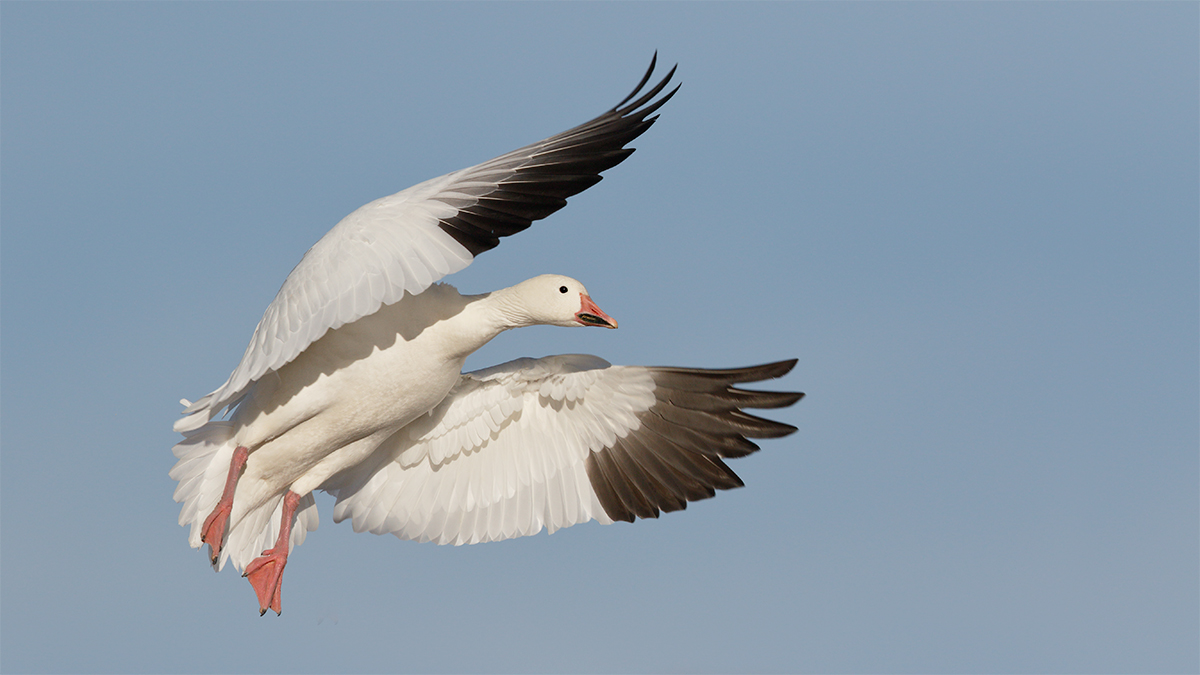
|
|
This image was created at 9:18m on the mostly clear morning of Sunday, NOV 30, 2015 at Bosque del Apache NWR. I used the Gitzo 3532 LS carbon fiber tripod), the Mongoose M3.6 head, Canon EF 600mm f/4L IS II USM lens and the Canon EOS 7D Mark II. ISO 400. Evaluative metering at zero off the blue sky 30 degrees up from the horizon: 1/3200 sec. at f/7.1 in Manual mode. AWB. This is the equivalent of our ISO 400 bright white/bright sun exposure: 1/2500 sec. at f/8.
Central sensor/AI Servo surround Rear Focus AF on the curve of the bird’s breast was active at the moment of exposure. Click here if you missed the Rear Focus Tutorial. Click on the image to see a larger version.
Adult Snow Goose landing with wings forward
|
Socks Knocked Off…
As I typed the paragraph above–thank you Denise for driving so much on this trip, I spotted some geese landing on the road well ahead. Bingo! Within minutes we had the whole group in position with hundreds of geese landing right at us into the wind that shifted from southeast to south to northeast. Just when you least expect it, Bosque will knock your socks off with great photographic opportunities.
Canon EOS-7D Mark II User’s Guide
For the 89th time :), my plan is to work on a 7D Mark II User’s Guide on the long sailing legs of my upcoming Southern Oceans trip and to have make it available a few days after I get back home (on January 12, 2015). Just for the record books, I set Custom AF case 3 exactly as described in the 1D X and 5D III User’s Guides.
Canon EOS-7D Mark II Back in Stock at B&H and Now Shipping
B&H has a limited supply of Canon EOS-7D Mark II bodies in stock. They are ready to ship you one today. Take part in the revolution. Need reach along with a great AF system and superb image quality? Order yours today by clicking on the logo link below.
Does anything about the 7D Mark II bug you?
If anything about the 7D Mark II bugs you, please let me know via e-mail.

 If what you’ve learned here on my blog about the Canon EOS-7D Mark II has inspired you to purchase this great new camera body, please consider using the logo link above to support our efforts here in bringing you the latest, greatest educational materials on daily basis.
If what you’ve learned here on my blog about the Canon EOS-7D Mark II has inspired you to purchase this great new camera body, please consider using the logo link above to support our efforts here in bringing you the latest, greatest educational materials on daily basis.
|

|
|
In 2015, we are offering a 3-DAY IPT before Thanksgiving and a 4-DAY IPT after the holiday. You can attend either and spend Thanksgiving Day with your family. Sign up for both and we will be glad to apply a $100 discount to your balance.
We know that there are lots of less costly workshops being offered these days. Please remember that you get exactly what you pay for. If you want the finest in photographic instruction and want to be assured of being in the right spot at exactly the right time, do join us.
|
Bosque del Apache 2015 BIRDS AS ART/A Creative Adventure Instructional Photo-Tour (IPT). 3-FULL DAY IPT: NOV 22-24, 2015. $1149. Meet and greet and introductory slide program after dinner on your own at 7:00pm on SAT NOV 21.
Tens of thousands of Snow Geese, 10,000 Sandhill Cranes, ducks, amazing sunrises, sunsets, and blast-offs. Live, eat, and breathe photography with two of the world’s premier photographic educators at one of their very favorite photography locations on the planet. Top-notch in-the-field and Photoshop instruction. This will make 21 consecutive Novembers at Bosque for artie. This will be denise’s 7th workshop at the refuge. Nobody knows the place better than artie does. Join us to learn to think like a pro, to recognize situations and to anticipate them based on the weather, especially the sky conditions, the light, and the wind direction. Every time we make a move we will let you know why. When you head home being able to apply what you’ve learned on your home turf will prove to be invaluable.
This workshop includes 3 morning and 3 afternoon photography sessions, an inspirational introductory slide program after dinner on your own on Saturday, 11/21, all lunches, and after-lunch digital workflow, Photoshop, and image critiquing sessions.
There is never a strict itinerary on a Bosque IPT as each day is tailored to the local conditions at the time and to the weather. We are totally flexible in order to maximize both the photographic and learning opportunities. We are up early each day leaving the hotel by 5:30 am to be in position for sunrise. We usually photograph until about 10:30am. Then it is back to Socorro for lunch and then a classroom session with the group most days. We head back to the refuge at about 3:30pm each day and photograph until sunset. We will be photographing lots of Snow Geese and lots of Sandhill Cranes with the emphasis on expanding both your technical skills and your creativity.
A $449 non-refundable deposit is required to hold your slot for this IPT. Your balance, payable only by check, will be due on 7/25/2015. If you cancel and the trip fills, we will be glad to apply a credit applicable to a future IPT for the full amount less a $100 processing fee. If we do not receive your check for the balance on or before the due date we will try to fill your spot from the waiting list. Whether or not your spot is filled, you will lose your deposit. If not, you can secure your spot by paying your balance.
Please print, complete, and sign the form that is linked to here and shoot it to us along with your deposit check (made out to “Arthur Morris.”) You can also leave your deposit with a credit card by calling the office at 863-692-0906. If you register by phone, please print, complete and sign the form as noted above and either mail it to us or e-mail the scan. If you have any questions, please feel free to contact me via e-mail.
|

|
|
In 2015, we are offering a 3-DAY IPT before Thanksgiving and a 4-DAY IPT after the holiday. You can attend either and spend Thanksgiving Day with your family. Sign up for both and we will be glad to apply a $100 discount to your balance.
We know that there are lots of less costly workshops being offered these days. Please remember that you get exactly what you pay for. If you want the finest in photographic instruction and want to be assured of being in the right spot at exactly the right time, do join us.
|
Bosque del Apache 2015 BIRDS AS ART/A Creative Adventure Instructional Photo-Tour (IPT). 4-DAY IPT: (three full and two 1/2 DAYS) NOV 28-DEC 2, 2015. $1499. Meet and greet at 3pm on SAT NOV 28 followed by an afternoon photo session at the crane pools and the introductory slide program after dinner on your own.
Tens of thousands of Snow Geese, 10,000 Sandhill Cranes, ducks, amazing sunrises, sunsets, and blast-offs. Live, eat, and breathe photography with two of the world’s premier photographic educators at one of their very favorite photography locations on the planet. Top-notch in-the-field and Photoshop instruction. This will make 21 consecutive Novembers at Bosque for artie. This will be denise’s 7th workshop at the refuge. Nobody knows the place better than artie does. Join us to learn to think like a pro, to recognize situations and to anticipate them based on the weather, especially the sky conditions, the light, and the wind direction. Every time we make a move we will let you know why. When you head home being able to apply what you’ve learned on your home turf will prove to be invaluable.
This workshop includes 4 afternoon (11/28through 12/1), 4 morning (11/29 to 12/2) photography sessions, an inspirational introductory slide program after dinner on your own on Saturday, 11/28, all lunches, and after-lunch digital workflow, Photoshop, and image critiquing sessions.
There is never a strict itinerary on a Bosque IPT as each day is tailored to the local conditions at the time and to the weather. We are totally flexible in order to maximize both the photographic and learning opportunities. We are up early each day leaving the hotel by 5:30 am to be in position for sunrise. We usually photograph until about 10:30am. Then it is back to Socorro for lunch and then a classroom session with the group most days. We head back to the refuge at about 3:30pm each day and photograph until sunset. We will be photographing lots of Snow Geese and lots of Sandhill Cranes with the emphasis on expanding both your technical skills and your creativity.
A $599 non-refundable deposit is required to hold your slot for this IPT. Your balance, payable only by check, will be due on 7/25/2015. If you cancel and the trip fills, we will be glad to apply a credit applicable to a future IPT for the full amount less a $100 processing fee. If we do not receive your check for the balance on or before the due date we will try to fill your spot from the waiting list. Whether or not your spot is filled, you will lose your deposit. If not, you can secure your spot by paying your balance.
Please print, complete, and sign the form that is linked to here and shoot it to us along with your deposit check (made out to “Arthur Morris.”) You can also leave your deposit with a credit card by calling the office at 863-692-0906. If you register by phone, please print, complete and sign the form as noted above and either mail it to us or e-mail the scan. If you have any questions, please feel free to contact me via e-mail.
BIRDS AS ART Instructional Photo Tours (IPTs)
For a listing of all currently offered IPTs, click here.
Click here for BIRDS AS ART Instructional Photo-Tour (IPT) General Information.
Click here for BIRDS AS ART Instructional Photo-Tour (IPT) Deposit and Cancellation Policies.
Click here for BIRDS AS ART Instructional Photo-Tour (IPT) Registration and Release Forms.
DPP 4 eGuide 7D II Update
If you have purchased the DPP 4 eGuide and have purchased a 7D II, please request the free update by shooting Jim an e-mail with the words DPP 4 7D II Update cut and pasted into the Subject Line. You must include some sort of proof of purchase; a cut and paste of page 2 of the current guide will suffice. If you send your request without including proof of purchase your updated eGuide will not be sent 🙂
Facebook
Be sure to like and follow BAA on Facebook by clicking on the logo link upper right. Tanks a stack!
Support the BAA Blog. Support the BAA Bulletins: Shop B&H here!
We want and need to keep providing you with the latest free information, photography and Photoshop lessons, and all manner of related information. Show your appreciation by making your purchases immediately after clicking on any of our B&H or Amazon Affiliate links in this blog post. Remember, B&H ain’t just photography!
…..
Amazon.com
Those who prefer to support BAA by shopping with Amazon may use this link:
Amazon Canada
Many kind folks from north of the border, eh, have e-mailed stating that they would love to help us out by using one of our affiliate links but that living in Canada and doing so presents numerous problems. Now, they can help us out by using our Amazon Canada affiliate link by starting their searches by clicking here. Many thanks to those who have written.
Typos
In all blog posts and Bulletins, feel free to e-mail or to leave a comment regarding any typos or errors. Just be right :).
November 30th, 2014 The Streak Continues: 365
With enjoyed a big fly out with friends on Saturday morning, headed to the crane pools, and ended with some Gambel’s Quail photography. I worked a bit more on getting images together for the Canon Digital Learning Center bird photography video project. After two 1/2 days of work, I still have lots to do.
We met the IPT group at 3pm, covered a lot of material, and headed down to the Ed Kranepool where only we were in perfect position to create silhouettes of the landing cranes….
Coming soon: a free Bosque Site Guide update for all: The State of the Bosque…. Today’s blog post, the 365th in a row, took about an hour to assemble (including the time for the DPP 4 RAW conversion). This blog post was published from my hotel room in Socorro, NM at 4:19am. Tomorrow is the first full day of the 4-Day Bosque IPT.
Canon EOS-7D Mark II Back in Stock at B&H and Now Shipping
B&H has a limited supply of Canon EOS-7D Mark II bodies in stock. They are ready to ship you one today. Take part in the revolution. Need reach along with a great AF system and superb image quality? Order yours today by clicking on the logo link below.

 If what you’ve learned here on my blog about the Canon EOS-7D Mark II has inspired you to purchase this great new camera body, please consider using the logo link above to support our efforts here in bringing you the latest, greatest educational materials on daily basis.
If what you’ve learned here on my blog about the Canon EOS-7D Mark II has inspired you to purchase this great new camera body, please consider using the logo link above to support our efforts here in bringing you the latest, greatest educational materials on daily basis.
High-stepping with the Canon EOS-7D Mark II
Sitting behind my lowered tripod effectively moved the background farther from the subject. A 40 pixel Gaussian blur on its own layer fine-tuned with a Regular Layer Mask did the rest. If you keep your eyes open you can find these fast moving little birds. It was my first time photographing this rather elusive species at Bosque.
|

|
|
In 2015, we are offering a 3-DAY IPT before Thanksgiving and a 4-DAY IPT after the holiday. You can attend either and spend Thanksgiving Day with your family. Sign up for both and we will be glad to apply a $100 discount to your balance.
We know that there are lots of less costly workshops being offered these days. Please remember that you get exactly what you pay for. If you want the finest in photographic instruction and want to be assured of being in the right spot at exactly the right time, do join us.
|
Bosque del Apache 2015 BIRDS AS ART/A Creative Adventure Instructional Photo-Tour (IPT). 3-FULL DAY IPT: NOV 22-24, 2015. $1149. Meet and greet and introductory slide program after dinner on your own at 7:00pm on SAT NOV 21.
Tens of thousands of Snow Geese, 10,000 Sandhill Cranes, ducks, amazing sunrises, sunsets, and blast-offs. Live, eat, and breathe photography with two of the world’s premier photographic educators at one of their very favorite photography locations on the planet. Top-notch in-the-field and Photoshop instruction. This will make 21 consecutive Novembers at Bosque for artie. This will be denise’s 7th workshop at the refuge. Nobody knows the place better than artie does. Join us to learn to think like a pro, to recognize situations and to anticipate them based on the weather, especially the sky conditions, the light, and the wind direction. Every time we make a move we will let you know why. When you head home being able to apply what you’ve learned on your home turf will prove to be invaluable.
This workshop includes 3 morning and 3 afternoon photography sessions, an inspirational introductory slide program after dinner on your own on Saturday, 11/21, all lunches, and after-lunch digital workflow, Photoshop, and image critiquing sessions.
There is never a strict itinerary on a Bosque IPT as each day is tailored to the local conditions at the time and to the weather. We are totally flexible in order to maximize both the photographic and learning opportunities. We are up early each day leaving the hotel by 5:30 am to be in position for sunrise. We usually photograph until about 10:30am. Then it is back to Socorro for lunch and then a classroom session with the group most days. We head back to the refuge at about 3:30pm each day and photograph until sunset. We will be photographing lots of Snow Geese and lots of Sandhill Cranes with the emphasis on expanding both your technical skills and your creativity.
A $449 non-refundable deposit is required to hold your slot for this IPT. Your balance, payable only by check, will be due on 7/25/2014. If you cancel and the trip fills, we will be glad to apply a credit applicable to a future IPT for the full amount less a $100 processing fee. If we do not receive your check for the balance on or before the due date we will try to fill your spot from the waiting list. Whether or not your spot is filled, you will lose your deposit. If not, you can secure your spot by paying your balance.
Please print, complete, and sign the form that is linked to here and shoot it to us along with your deposit check (made out to “Arthur Morris.”) You can also leave your deposit with a credit card by calling the office at 863-692-0906. If you register by phone, please print, complete and sign the form as noted above and either mail it to us or e-mail the scan. If you have any questions, please feel free to contact me via e-mail.
|

|
|
In 2015, we are offering a 3-DAY IPT before Thanksgiving and a 4-DAY IPT after the holiday. You can attend either and spend Thanksgiving Day with your family. Sign up for both and we will be glad to apply a $100 discount to your balance.
We know that there are lots of less costly workshops being offered these days. Please remember that you get exactly what you pay for. If you want the finest in photographic instruction and want to be assured of being in the right spot at exactly the right time, do join us.
|
Bosque del Apache 2015 BIRDS AS ART/A Creative Adventure Instructional Photo-Tour (IPT). 4-DAY IPT: (three full and two 1/2 DAYS) NOV 28-DEC 2, 2015. $1499. Meet and greet at 3pm on SAT NOV 28 followed by an afternoon photo session at the crane pools and the introductory slide program after dinner on your own.
Tens of thousands of Snow Geese, 10,000 Sandhill Cranes, ducks, amazing sunrises, sunsets, and blast-offs. Live, eat, and breathe photography with two of the world’s premier photographic educators at one of their very favorite photography locations on the planet. Top-notch in-the-field and Photoshop instruction. This will make 21 consecutive Novembers at Bosque for artie. This will be denise’s 7th workshop at the refuge. Nobody knows the place better than artie does. Join us to learn to think like a pro, to recognize situations and to anticipate them based on the weather, especially the sky conditions, the light, and the wind direction. Every time we make a move we will let you know why. When you head home being able to apply what you’ve learned on your home turf will prove to be invaluable.
This workshop includes 4 afternoon (11/28through 12/1), 4 morning (11/29 to 12/2) photography sessions, an inspirational introductory slide program after dinner on your own on Saturday, 11/28, all lunches, and after-lunch digital workflow, Photoshop, and image critiquing sessions.
There is never a strict itinerary on a Bosque IPT as each day is tailored to the local conditions at the time and to the weather. We are totally flexible in order to maximize both the photographic and learning opportunities. We are up early each day leaving the hotel by 5:30 am to be in position for sunrise. We usually photograph until about 10:30am. Then it is back to Socorro for lunch and then a classroom session with the group most days. We head back to the refuge at about 3:30pm each day and photograph until sunset. We will be photographing lots of Snow Geese and lots of Sandhill Cranes with the emphasis on expanding both your technical skills and your creativity.
A $599 non-refundable deposit is required to hold your slot for this IPT. Your balance, payable only by check, will be due on 7/25/2014. If you cancel and the trip fills, we will be glad to apply a credit applicable to a future IPT for the full amount less a $100 processing fee. If we do not receive your check for the balance on or before the due date we will try to fill your spot from the waiting list. Whether or not your spot is filled, you will lose your deposit. If not, you can secure your spot by paying your balance.
Please print, complete, and sign the form that is linked to here and shoot it to us along with your deposit check (made out to “Arthur Morris.”) You can also leave your deposit with a credit card by calling the office at 863-692-0906. If you register by phone, please print, complete and sign the form as noted above and either mail it to us or e-mail the scan. If you have any questions, please feel free to contact me via e-mail.
BIRDS AS ART Instructional Photo Tours (IPTs)
For a listing of all currently offered IPTs, click here.
Click here for BIRDS AS ART Instructional Photo-Tour (IPT) General Information.
Click here for BIRDS AS ART Instructional Photo-Tour (IPT) Deposit and Cancellation Policies.
Click here for BIRDS AS ART Instructional Photo-Tour (IPT) Registration and Release Forms.
DPP 4 eGuide 7D II Update
If you have purchased the DPP 4 eGuide and have purchased a 7D II, please request the free update by shooting Jim an e-mail with the words DPP 4 7D II Update cut and pasted into the Subject Line. You must include some sort of proof of purchase; a cut and paste of page 2 of the current guide will suffice. If you send your request without including proof of purchase your updated eGuide will not be sent 🙂
Facebook
Be sure to like and follow BAA on Facebook by clicking on the logo link upper right. Tanks a stack!
Support the BAA Blog. Support the BAA Bulletins: Shop B&H here!
We want and need to keep providing you with the latest free information, photography and Photoshop lessons, and all manner of related information. Show your appreciation by making your purchases immediately after clicking on any of our B&H or Amazon Affiliate links in this blog post. Remember, B&H ain’t just photography!
…..
Amazon.com
Those who prefer to support BAA by shopping with Amazon may use this link:
Amazon Canada
Many kind folks from north of the border, eh, have e-mailed stating that they would love to help us out by using one of our affiliate links but that living in Canada and doing so presents numerous problems. Now, they can help us out by using our Amazon Canada affiliate link by starting their searches by clicking here. Many thanks to those who have written.
Typos
In all blog posts and Bulletins, feel free to e-mail or to leave a comment regarding any typos or errors. Just be right :).
November 29th, 2014
The Streak Continues: 364
With clear skies and barely any wind Denise Ippolito and I again went a bit out of the traditional Bosque box by starting our day at the Ed Kranepool. And again I went 16-35 for the goose blast off. Once the sun got on the birds, I concentrated on the departing white geese. My favorite is below. Dense got a lovely one of a Ross’s Goose flying right at her. For me, the 600II/1.4X/7D II combo continued to prove its worth.
I spent pretty much another full day getting images together for the Canon Digital Learning Center bird photography video project. After two full days, I still have a ton of work to do. They need about seventy 16:9 images. So far I have delivered about half of those. Again I skipped the afternoon photo session.
Coming soon: a free Bosque Site Guide update for all: The State of the Bosque…. Today’s blog post, the 364th in a row, took 1 1/2 hours to assemble (including the time for the DPP 4 RAW conversion). This blog post was published from my hotel room in Socorro, NM at 2:59am. We meet the 4-Day Bosque IPT group on Saturday afternoon.
Bosque 2015
Denise and I will again be collaborating on two Bosque IPTs in 2015, one before Thanksgiving and one after. Dates and rates will be announced here soon. If you would like to receive early notice, please shoot me an e-mail with the words “Bosque 2015” in the Subject Line. We already have several interested folks.
|
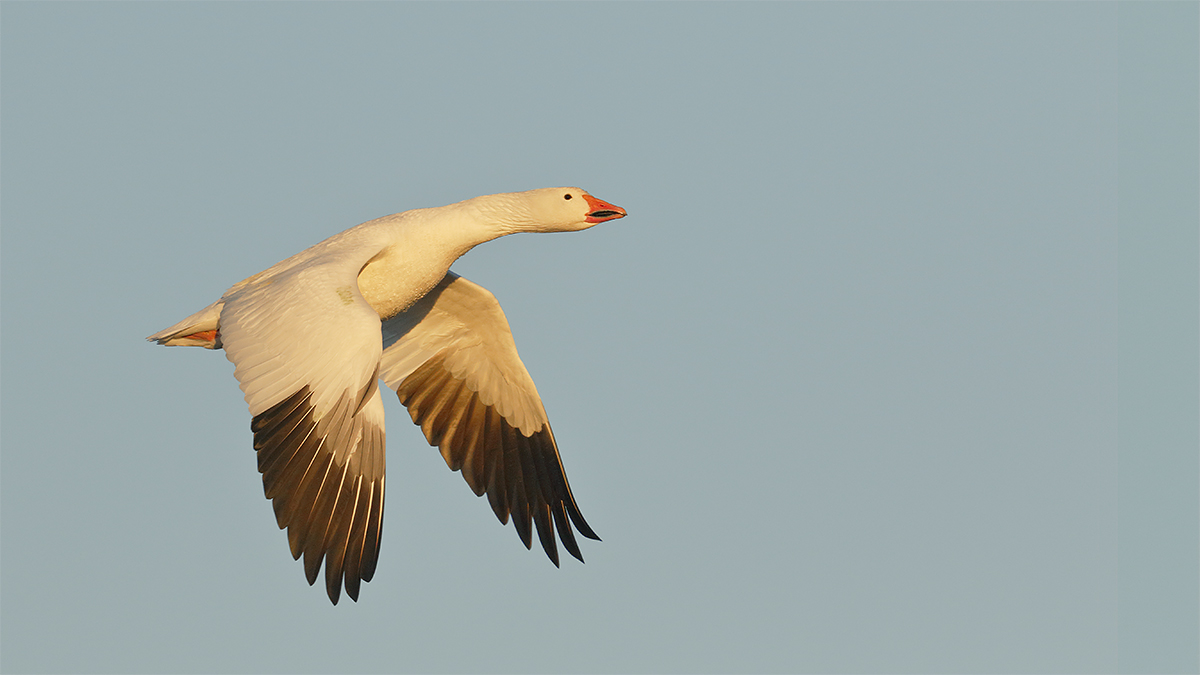
|
|
This image was created at 7:07am on the clear morning of Friday, NOV 28, 2015 at Bosque del Apache NWR. I used the Gitzo 3532 LS carbon fiber tripod), the Mongoose M3.6 head, Canon EF 600mm f/4L IS II USM lens, the Canon Extender EF 1.4X III, and the Canon EOS 7D Mark II. ISO 800. Evaluative metering +1/3 stop off the yellow grasses on the far side of the pond: 1/2000 sec. at f/5.6 in Av mode. AWB.
65-Point Automatic Selection/AI Servo Rear Focus AF activated 3 AF point that just caught the bird’s tail; see the DPP 4 screen capture below.) They AF points were, of course, active at the moment of exposure. Click here if you missed the Rear Focus Tutorial. Click on the image to see a larger version.
Snow Goose in flight
|
Jumped for Joy!
I jumped for joy when I saw this one on the laptop for the first time. It is the image I dreamed of when I got out of the car at Ed Kranepool in the dark on Black Friday morning. It is razor sharp and I love the full downstroke wing position. The way that the jet black primary feathers contrast with the silvery grey upper primary coverts gets me juiced.
In the trade we call the rich yellow light right after sunrise butter light. At times, as here, you need to do some work to tone down the rich YELLOWs. You can see the original colors in the DPP screen capture below. To tone down the YELLOWs, I reduced the YELLOW Saturation about 20 points. See more on working with the color in this image in item next.
600 II/1.4X II TC/7D II Combo Deadly for Flight Photography
Day after day here at Bosque the 600 II/1.4X II TC/7D II combo proves to be deadly for flight photography. It gives me a ton of reach (1344mm or 26.88X magnification) and as you can see here, the AF system is superb. For this image I was experimenting with 65-Point Automatic Selection and despite my abject failure to keep the active AF point or points on the bird’s face, head, or neck, a sharp on the eye image was created. Coming soon: lots more images with this great combo.
One advantage that most folks do not realize is that with the great magnification the bird’s speed relative to your position is effectively slowed making it somewhat easier for you to frame and track the bird flight. That is just another of the great advantages of the 7D II.
Does anyone notice me shooting flight with my 1D X lately?
|
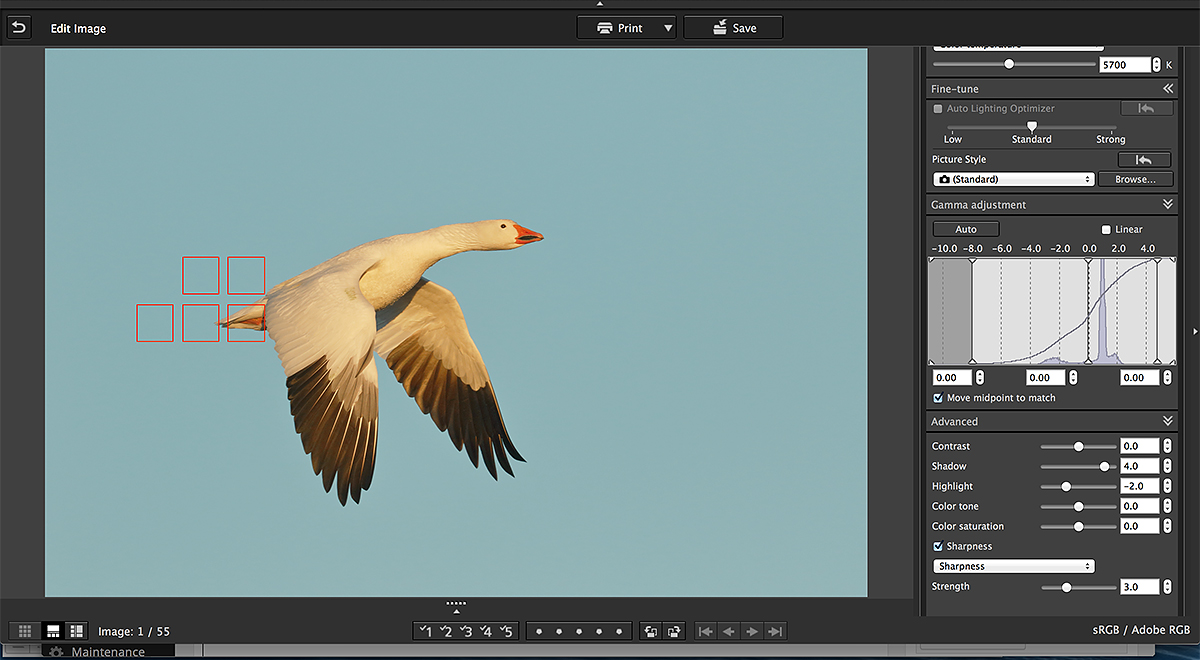
|
|
This is the DPP 4 screen capture for today’s featured image.
|
The DPP 4 Screen Capture
The DPP 4 screen capture for the Snow Goose in butter light image shows the selected AF point array and that (at the very top right) I set the Color temperature slider at 5700. You cannot see that I moved the Brightness slider one click to the left to -.17 (-1/6 stop) as the first step in toning down the WHITEs. Several more adjustments that you cannot see were made on this, the Perform basic image adjustment tab. I use that tab, the Adjust image detail tab, and the Perform image lens correction on all images. On occasion I use the Adjust image colors tab. The other four tabs are used rarely if ever.
During the RAW conversion in DPP 4 I did some work on the Adjust image colors tab. Note the big CYAN cast to the light blue sky. When I brought the image into PS CC I reduced the CYAN saturation via a Hue/Saturation adjustment. I selected the too-pink bill with the Quick Selection Tool and reduced the Saturation there too. I made several additional adjustments in Selective Color working mostly on the blue sky.
It took a while to get the color right while still keeping the sweet light look.
Digital Basics
Everything that I did to optimize today’s image is covered in detail in my Digital Basics File–written in my easy-to-follow, easy-to-understand style. Are you tired of making your images look worse in Photoshop? Digital Basics File is an instructional PDF that is sent via e-mail. It includes my complete digital workflow, dozens of great Photoshop tips (including the Surface Blur settings as taught to me by Denise Ippolito), details on using all of my image clean-up tools, the use of Contrast Masks, several different ways of expanding and filling in canvas, all of my time-saving Keyboard Shortcuts, Quick Masking, Layer Masking, and NIK Color Efex Pro basics, Contrast Masks, Digital Eye Doctor techniques, using Gaussian Blurs, Tim Grey Dodge and Burn, a variety of ways to make selections, how to create time-saving actions, and tons more.
|

|
|
DPP 4 is completely new and different from the various versions of DPP 3. It handles files only from the following cameras: EOS-1D X, EOS 5D Mark III, EOS-6D, and the EOS-7D Mark II.
|
Great 7D II/DPP v4.01.0 News
An updated version of Canon Digital Photo Professional that supports RAW files from the EOS-7D Mark II was released more than a month ago and is available for download the Canon USA website. To download DPP v4.1 first click here and then click on Drivers and Software and follow the prompts.
|

|
|
The Photographers’ Guide to Canon Digital Photo Professional 4.0 by Arash Hazeghi and Arthur Morris is now available. Click here to order.
|
The DPP 4 eGuide (PDF)
The Photographers’ Guide to Canon Digital Photo Professional 4.0 by Arash Hazeghi and Arthur Morris: $40.
Artie first went to DPP because he was not happy with the colors he was getting with 1D X and 5D III images from ACR (Adobe Camera Raw). Though less than intuitive, he found it fast and easy to use once he mastered the basics. He collaborated with Arash Hazeghi on the first DPP RAW Conversion Guide. Do understand that the DPP RAW Conversion Guide details the use of various iterations of DPP 3. He calls those the DPP 3.whatever versions. The latest version is DPP 3.14.41.0.
Some time ago Canon released DPP 4.0, completely and utterly new and different from DPP 3. When it was introduced DPP 4 worked only EOS-1D X, EOS-5D Mark III, and EOS-6D images but support for the EOS-7D Mark II was added to the latest version when that camera began shipping.
When I first opened DPP 4 I felt as if I were in the cockpit of a Boeing 747 and was being asked to fly it. There were so many tabs and buttons and controls that I simply closed the program. I immediately called Arash and asked him if he wanted to work together on a DPP 4 guide. After 100s of hours of work the guide was ready to teach you to conveniently and easily use DPP 4 to create the finest possible image files from your 1D X, 5D III, 6D, and 7D II image files. Basically, Arash sent me a sophisticated outline that I re-crafted into a clear, concise, easily understood, and easy to follow how-to guide written in the BAA style. Arash created all of the charts, diagrams, and graphics.
His charts with recommendations for both Chrominance and Luminance Noise Reduction values for each of the 4 covered cameras at various ISO settings are alone worth the price of the book. He spent many dozens of hours experimenting with high ISO RAW files and shares his findings with you in the DPP 4 Guide. Folks will surely want to create some sort of easily accessible quick reference on their laptops and home computers.
DPP offers a host of great features some but not all of which are reminiscent of ACR. These include the following: Multi-image display, the extremely valuable Before/after Comparison layout, Highlight/shadow warnings, White Balance, and the eight RAW Conversion tabs that include sliders for Brightness, Highlights, Shadows, Contrast, Hue-Saturation, Color Tone, Sharpness, Noise Reduction, HSL (Hue/Saturation/Luminance), Lens Corrections, and Digital Lens Optimizer among others. We teach you how to best utilize each of those and many more. We share our slightly different DPP workflows and dozens of tips that will simply make your life easier. Arash uses DPP4′s rating system for choosing his keepers while artie continues to rely on BreezeBrowser Pro for that. DPP offers a variety of sorting filters. We explain all of the options. In addition, we teach you how to set your preferences and how to arrange your workspace for the greatest efficiency.
Both authors firmly believe that the manufacturer’s conversion algorithms will always out-perform 2nd party software when it comes to preserving image quality, fine detail, and accurate color rendition.
The authors wish to thank Chuck Westfall and Rudy Winston of Canon USA for their help; they are always available to answer our nit-picking questions. Sincere thanks also to Ken Kovak, Bob Schwartz, Dane Johnson, and John Stuhlmuller for their thoughtful and substantive reviews of late drafts of the DPP 4 manuscript.
You can order your copy of the DPP 4 Guide for $40 through the BAA Online Store by clicking here, by calling Jim or Jen in the office at 863-692-0906 with credit card in hand, by sending us a check made out to “Arthur Morris” or a money order for $40 to BIRDS AS ART, PO Box 7245, Indian Lake Estates, FL 33855, or by by sending a Paypal for $40 to e-mail. IN the latter two instances be sure to note DPP 4 Guide so we know what you are ordering :).
Note: the Sharpness and Noise Reduction Charts will be updated to include the recommended values for the 7D Mark II. I have been sending RAW files to Arash for several days. Now Arash has a lot more work to do. For those who have purchased the DPP 4 Guide, the update will of course be free but please be patient.
Those using older Canon camera bodies like the 1D Mark IV, the 7D, the 50D, the 40D, the various Rebels (not highly recommended for serious nature photography), are directed to the original DPP RAW Conversion Guide click here. DPP 3 (the latest version is DPP v3.14.41.0) does a fine job of converting images from the older camera bodies. I used it for several years.
DPP 4 eGuide 7D II Update
If you have purchased the DPP 4 eGuide and have purchased a 7D II, please request the free update by shooting Jim an e-mail with the words DPP 4 7D II Update cut and pasted into the Subject Line. You must include some sort of proof of purchase; a cut and paste of page 2 of the current guide will suffice. If you send your request without including proof of purchase your updated eGuide will not be sent 🙂
|

|
|
All of the images in the bear boat card above were created in Katmai National Park during the month of September.
|
Bear Boat/Bears Catching Salmon IPT: September 1-8, 2015 from Kodiak, AK/6 FULL & 2 1/2 DAYS: $6699. Happy campers only! Maximum 8/Openings: 5. Plus the leader: Arthur Morris.
If I do not have four deposit checks in hand by 1/31/2015 I reserve the right to scrap this trip so please do not purchase your plane tickets until you hear from me. 🙂 Only one to go.
Join me in Katmai National Park, AK for seven days of photographing Coastal Brown Bears (grizzlies) catching salmon, fattening up for the long winter. Other subjects will include Mew and Glaucous-winged Gulls in flight and dip-feeding on salmon roe. Did I mention that we live on a boat and that the food is great? Most of our photography will be done in a variety of famed locations: Geographic Harbor, Kinak Bay, and Kukak Bay. We once had 39 bears fishing the creek at Kukak….
It is mandatory that you be in Kodiak no later than the late afternoon of August 31, 2015 September to avoid missing the float planes to the boat on the morning of September 1. With air travel in AK being what it is, with the chance of fog or other bad weather–being on Kodiak on August 30 is an even better plan). I be on Kodiak on August 30 to avoid any potential disaster. That said in my nearly a dozen bear boat trips I was delayed only once but since I was day early as noted above there was no harm, no foul.
We will take one or more float planes to the boat mid-morning on September 1. We will photograph bears fishing that afternoon and every day for the next six days (weather permitting of course). We should have bears catching salmon every day. In addition, we will get some nice stuff on Mew Gull and Glaucous-winged Gulls dining on roe and the remains of predated salmon. We may–depending on where the concentrations of bears are–get to photograph Harbor seals and some hauled out Steller’s Sea Lions (an endangered species). Halibut fishing (license required) is optional. On September 8, our last morning on the boat, those who would like to enjoy one last photo session will do so. The group returns to Kodiak via float plane midday. Most folks will fly to Anchorage and then continue on red-eye flights to their home cities.
The eight days will consist of six full days (Sept 2, 3, 4, 5, 6, & 7) of photography featuring lots of Coastal Brown Bears catching salmon as above plus a variety of other natural history subjects plus some nice scenic photography that I forgot to mention above. Plus the first afternoon and the last morning.
What’s included? 8 DAYS/7 NIGHTS on the boat as above. All meals on the boat. (The food is quite excellent.) National Park fees. One night’s double occupancy lodging on Kodiak; arrive: Sept 1/depart: Sept 2. The thank-you-in-advance dinner on Sept 1. In-the-field photo tips, instruction, and guidance. An insight into the mind of a top professional; I will constantly let you know what I am thinking, what I am doing, and why I am doing it. Small group image review, image sharing, and Photoshop instruction on the boat.
What’s not included: Your round trip airfare to and from Kodiak, AK (almost surely through Anchorage). All necessary lodging other than the cost of your double occupancy room on the night of August 31 should you opt to arrive early–we can arrange that in advance for you. We will let you know the cost of a single supplement for the one night if so desired. The cost of the round-trip float plane to the boat on September 2 and back to Kodiak on September 9. The cost of a round trip this year was $500. The suggested crew tip of $210.
Is this an expensive trip? Yes, of course. But with 6 full and two half days, a wealth of great subjects, and the fact that you will be walking with the bears just yards away (or less….) it will be one of the great natural history experiences of your life. Most folks who take part in a Bear Boat IPT wind up coming back for more.
A $2,000 per person non-refundable deposit by check only made out to “Arthur Morris” is required to hold your spot. Please click here to read our cancellation policy. Then please print, read, and sign the necessary paperwork here and send it to us.
Your deposit is due immediately. That will leave a balance of $4699. The next payment of $2699 will be due on February 15, 2015. The final payment of $2000 is due on May 1, 2015.
I hope that you can join us for this wondrously exciting trip.
By e-mail from Bill Keown, veteran of three bear boat trips!
Hi Artie, What a great trip! With the exception of the one bright sunny day it was just great. Very different from my first trip in June where we only had the bears clamming; the fishing bears were amazing! As always I learned a lot and enjoyed the group immensely. All the Best, Bill
|

|
|
Fort DeSoto in spring can be bird photographer’s heaven. And most of the birds are stupid tame.
|
Fort DeSoto in Spring/Breeding Plumage IPT: April 24-26, 2015. 3 FULL DAYs: $1099. Limit 8/Openings: 7.
Meet and Greet at 8pm on Thursday, April 23.
Join me at Fort DeSoto at the height of the breeding season for many of our target species: Laughing Gull, Royal Tern, Sandwich Tern, dark and light morph Reddish Egret, Great Egret, Tricolored Heron, and Yellow-crowned Night-Heron. In addition, we will have a good shot at photographing a variety of arctic-bound shorebird species in breeding plumage. We should have good chances with a variety of courtship behaviors including courtship feeding, courtship displays, pre-copulatory stands, and copulation.
On this IPT you will the learn basics and fine points of digital exposure and how to get the right exposure every time after making a single test exposure, how to approach free and wild birds without disturbing them, to understand and predict bird behavior, to identify many species of shorebirds, to spot the good situations, to choose the best perspective, to see and understand the light, and to design pleasing images by mastering your camera’s AF system. And you will learn learn how and why to work in Manual mode (even if you’re scared of it).
At lunch (included) we will review my images–folks learn a ton watching me edit–why keep this one and delete that one. If you opt to bring your laptop, we will take a look at five of your best images from the morning session. We will process a few of my images in Photoshop after converting them in DPP. That followed by Instructor Nap Time.
A $499 non-refundable deposit is required to hold you spot. The balance, $600 will be due on February 7, 2015. Please click here to read our cancellation policy. Then please print, read, and sign the necessary paperwork here and send it to us.
Facebook
Be sure to like and follow BAA on Facebook by clicking on the logo link upper right. Tanks a stack!
Support the BAA Blog. Support the BAA Bulletins: Shop B&H here!
We want and need to keep providing you with the latest free information, photography and Photoshop lessons, and all manner of related information. Show your appreciation by making your purchases immediately after clicking on any of our B&H or Amazon Affiliate links in this blog post. Remember, B&H ain’t just photography!
…..
Amazon.com
Those who prefer to support BAA by shopping with Amazon may use this link:
Amazon Canada
Many kind folks from north of the border, eh, have e-mailed stating that they would love to help us out by using one of our affiliate links but that living in Canada and doing so presents numerous problems. Now, they can help us out by using our Amazon Canada affiliate link by starting their searches by clicking here. Many thanks to those who have written.
Typos
In all blog posts and Bulletins, feel free to e-mail or to leave a comment regarding any typos or errors. Just be right :).
November 28th, 2014 The Streak Continues: 363
With clear skies and barely any wind Denise Ippolito and I again went a bit out of the traditional Bosque box by starting our day at the Ed Kranepool. I went 16-35 for the goose blast off. That was followed by the best morning of the year for departing Sandhill Crane flight photography as the breeze came up from the north/northeast. I killed at first with the 600 II/1.4X III/7D II combo but ditched the TC after a while as the birds were getting too big in the frame.
I spent pretty much a full day’s work getting images together for the Canon Digital Learning Center bird photography video project. I still have a ton of work to do. They need about seventy 16:9 images. So far I have delivered only 18 :(. Hard work. I stayed in for only the second afternoon of the trip to watch some of the NFL games while optimizing new images for the videos. And for the blog.
Coming soon: a free Bosque Site Guide update for all: The State of the Bosque…. Today’s blog post, the 363rd in a row, took 1 1/2 hours to assemble (including the time for the DPP 4 RAW conversion and the creation of the animated GIF). This blog post was published from my hotel room in Socorro, NM at 3:45am. We will continue our busman’s holiday tomorrow. We meet the 4-Day Bosque IPT group on Saturday afternoon.
Bosque 2015
Denise and I will again be collaborating on two Bosque IPTs in 2015, one before Thanksgiving and one after. Dates and rates will be announced here soon. If you would like to receive early notice, please shoot me an e-mail with the words “Bosque 2015” in the Subject Line. We already have several interested folks.
Amazing Black Friday Sale
Save $300 on the Canon EF-S 17-85mm f/4-5.6 IS USM Lens for APS-C Bodies
In a recent blog post here, I discussed the need for special short zoom and fixed focal length lenses for those who like to go wide with APS-C sensor camera bodies. With their 1.6X crop factors, cameras like the Canon EOS-7D Mark II, the EOS-7D, and the EOS-40 and 50D bodies, make it impossible to go wide and ultra wide. Right now, the Canon EF-S 17-85mm f/4-5.6 IS USM lens is on sale for an absolutely silly $299, $300 off the regular price of $599. 17-85mm translates to the equivalent of 27-136mm on a full frame camera, approximating the hugely popular Canon EF 24-105mm f/4L IS USM lens.
I am not sure how long the sale lasts….

 Click on the logo link above for more insane Black Friday Specials
Click on the logo link above for more insane Black Friday Specials
Please Help Support My Work on the BAA Blog
Thanks a Stack! The last six weeks have been great!
The last six weeks have been quite rewarding with more and more folks making it a habit to use my B&H links especially for their major gear purchases. It is great to feel appreciated. Thanks a stack to all who used our links for purchases large and small.
To show your appreciation for my efforts here, we ask, as always, that you use our the B&H and Amazon affiliate links on the right side of the blog for all of your purchases. B&H Is recommended for you major photography gear purchases, Amazon for your household, entertainment, and general purpose stuff. Please check the availability of all photographic accessories in the BIRDS AS ART Online Store, especially Gitzo tripods, Wimberley tripod heads, and the like. We sell only what I have used, have tested, and can depend on. We will not sell you junk. We know what you need to make creating great images easy and fun. And we are always glad to answer your gear questions via e-mail.
I would of course appreciate your using our B&H affiliate links for all of your major gear, video, and electronic purchases. For the photographic stuff mentioned in the paragraph above we, meaning BAA, would of course greatly appreciate your business. Here is a huge thank you to the many who have been using our links on a regular basis and visiting the BAA Online store as well.
Canon EOS-7D Mark II Back in Stock at B&H and Now Shipping
B&H has a limited supply of Canon EOS-7D Mark II bodies in stock. They are ready to ship you one today. Take part in the revolution. Need reach along with a great AF system and superb image quality? Order yours today by clicking on the logo link below.

 If what you’ve learned here on my blog about the Canon EOS-7D Mark II has inspired you to purchase this great new camera body, please consider using the logo link above to support our efforts here in bringing you the latest, greatest educational materials on daily basis.
If what you’ve learned here on my blog about the Canon EOS-7D Mark II has inspired you to purchase this great new camera body, please consider using the logo link above to support our efforts here in bringing you the latest, greatest educational materials on daily basis.
Things were just ducky…
I created this image while one of seven educational segments for a bird photography video was being filmed. The project is sponsored by the Canon Digital Learning Center. The videos should be on the Canon website in about a month. Scroll down to see my very strange blind.
|
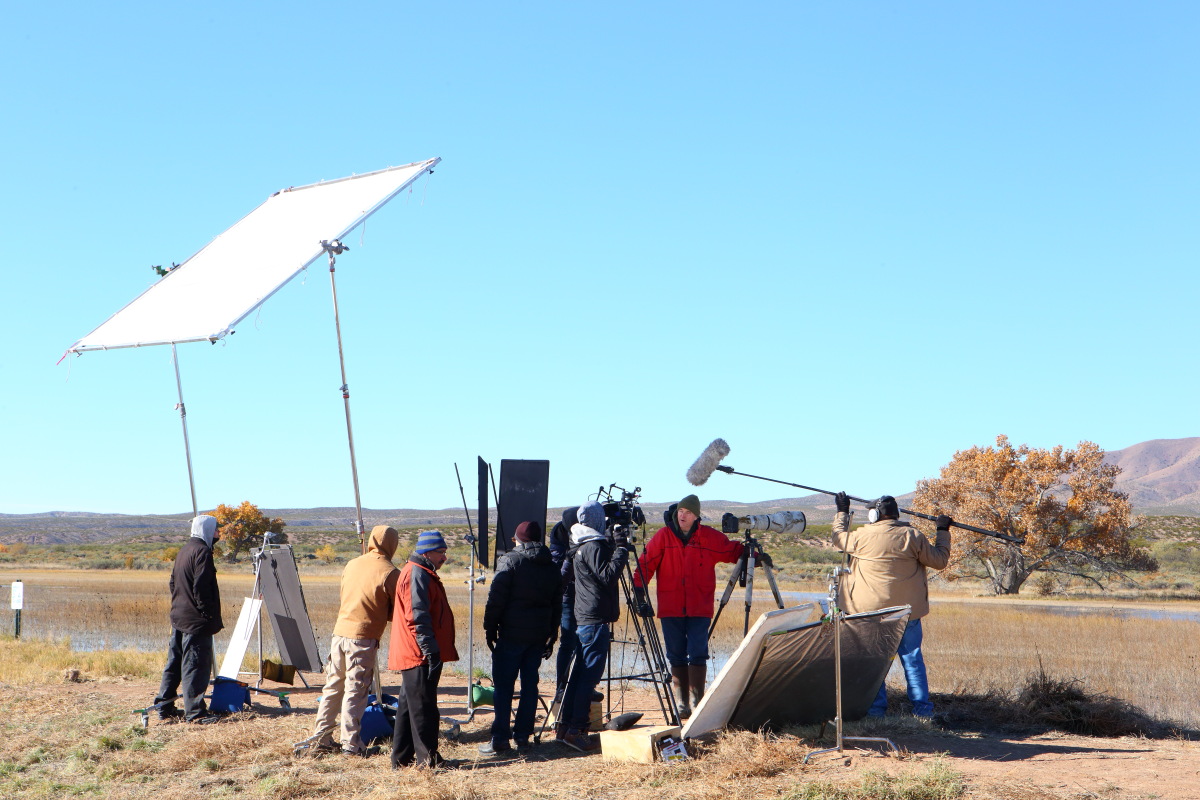
|
|
Yours truly on a video set near Ed Kranepool at Bosque del Apache NWR. Image courtesy of and copyright 2014 Tom Debrayanna.
|
World’s strangest blind…
I created the shoveler image that opened this blog post while on set on the South Loop. I was going through a litany of talking points for one of the seven video segments when this handsome hen swam by so I took a short break and made a few frames.
The segments will include:
Creating Pre-Dawn Blurs
What’s in the Gear Bag (aka The Junk in the Trunk)
Understanding Light, Wind & Perspective
Setting up for Flight
Using Tele-Extenders
AI Servo AF
Exposure Control
Thanks a stack to Tom Debrayanna for sending me a few images for the blog. Like this one, they were all quite well done.
The Image Optimization
First I converted the image in DPP 4. I leveled it by connecting the centers of the pupils with the Ruler Tool and hit Command + Question Mark, my personalized keyboard shortcut for Image > Rotate > Arbitrary. Next was dust spotting and some Eye Doctor work. Note how much better the pupil looks in the optimized image.
With their always-wet heads, images of dabbling ducks are rife with specular highlights on the face and the bill. I almost always opt to clean up such messes as to me, the small to tiny over-exposed highlights are simply butt-ugly. Working large I used the Spot Healing Brush and the Patch Tool. The clean-up work here took me more than twenty minutes.
Digital Basics
Everything that I did to optimize today’s image is covered in detail in my Digital Basics File–written in my easy-to-follow, easy-to-understand style. Are you tired of making your images look worse in Photoshop? Digital Basics File is an instructional PDF that is sent via e-mail. It includes my complete digital workflow, dozens of great Photoshop tips (including the Surface Blur settings as taught to me by Denise Ippolito), details on using all of my image clean-up tools, the use of Contrast Masks, several different ways of expanding and filling in canvas, all of my time-saving Keyboard Shortcuts, Quick Masking, Layer Masking, and NIK Color Efex Pro basics, Contrast Masks, Digital Eye Doctor techniques, using Gaussian Blurs, Tim Grey Dodge and Burn, a variety of ways to make selections, how to create time-saving actions, and tons more.
APTATS I & II
Learn the details of advanced Quick Masking techniques in APTATS I. Learn Advanced Layer Masking Techniques in APTATS II. Mention this blog post and apply a $5 discount to either with phone orders only. Buy both APTATS I and APTATS II and we will be glad to apply at $15 discount with phone orders only. Please call Jim or Jennifer at 863-692-0906 weekdays to order.
The Bosque Site Guide
All BAA Site Guides are designed so that with a bit of study you can show up at a great place and know exactly where to be at what time on what wind and in what lighting conditions. With a Site Guide on your laptop you will feel like a 20-year veteran even on your first visit. Site Guides are the next best thing to being on an IPT. If you plan on visiting the refuge it would be foolish to make the trip without having this guide in hand. Why spend money on gear and travel and then spend days stumbling around in the wrong spots? If you have visited previously, and are still unsure of where you should be at this time of day with that wind, this guide will prove invaluable to you as well.
You can order yours here or check out all of our site guides here.
Canon Telephoto Lens Specifications, Info, and Links; Bookmark This Page!
I have added the 100-400II to the chart here. Bookmark this page and consult it often as it makes comparing different lenses an easy chore. The chart includes weight in both pounds and kilograms, MFDs in feet and inches and in meters, magnification, filter size, and the year of introduction.
IPT Updates
Would you like to visit some of the great bird photography locations on the planet? Would you like to learn from the best? Click here and join us.
|
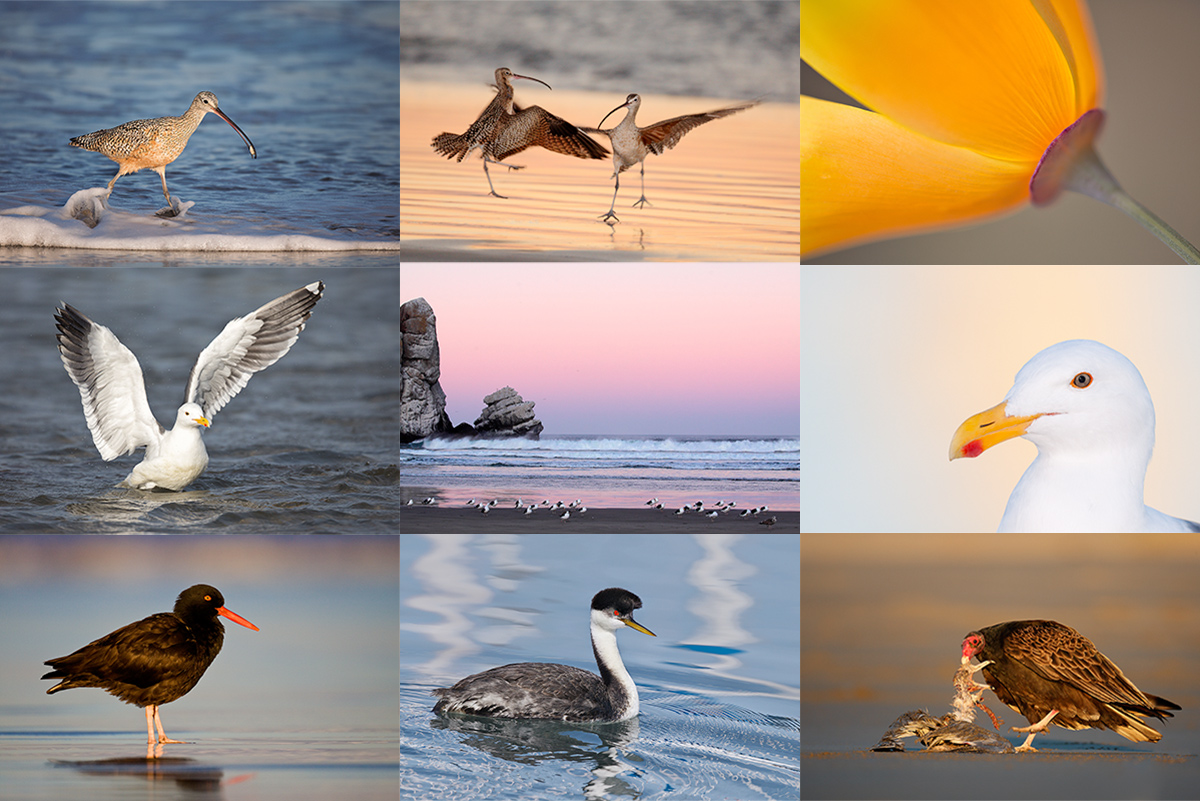
|
|
Morro Bay offers a wealth of very attractive natural history subjects in a variety of attractive settings.
|
2015 Morro Bay 5-DAY BIRDS AS ART Instructional Photo-Tour (IPT): MAR 14 thru MAR 18, 2015: $1999 (Limit: 8/Openings: 8.)
Meet and Greet after dinner on your own at 8:00pm on MAR 13.
Join me in one of the most beautiful and scenic places on the planet to photograph a large variety of birds of the sea and shore. As above, the star of the show will be Long-billed Curlew. There will be lots of Marbled Godwits and Willets as well as lots of the smaller shorebird species. Black Oystercatcher is likely and we should get to photograph large flocks of Western Sandpipers in flight over the bay. With any luck we should enjoy some great sunrise and sunset photography. There are lots of gulls including Western, California, and Mew. There is one good location where we should get to photograph Western, Clarke’s, Eared, and Pied-billed Grebe, Lesser Scaup, and Common Loon. We may get to photograph some passerines including Anna’s Hummingbird, Brewer’s Blackbird, and White-crowned Sparrow. And we have a chance for several species of raptors. Yikes, I almost forgot California Poppy. And California Ground Squirrel. Sea Otters are also possible.
This IPT will include five 3 1/2 hour morning photo sessions, five 2 1/2 hour afternoon sessions, five lunches, after-lunch image review and Photoshop sessions, and of course tons of great in-the-field instruction and photographic instruction. To ensure early starts, breakfasts will be your responsibility.
A $499 non-refundable deposit is required to hold your slot for this IPT. You can send a check (made out to “Arthur Morris) to use at BIRDS AS ART, PO Box 7245, Indian Lake Estates, FL, 33855. Or call Jim or Jennifer at the office with a credit card at 863-692-0906. Your balance, payable only by check, will be due on 12/1//2014. If the trip fills, we will be glad to apply a credit applicable to a future IPT for the full amount less a $100 processing fee. If we do not receive your check for the balance on or before the due date we will try to fill your spot from the waiting list. If your spot is filled, you will lose your deposit. If not, you can secure your spot by paying your balance. Please print, complete, and sign the form that is linked to here and shoot it to us along with your deposit check. If you register by phone, please print, complete and sign the form as noted above and either mail it to us or e-mail the scan. If you have any questions, please feel free to contact me via e-mail.
See lots more Morro Bay images here.
Facebook
Be sure to like and follow BAA on Facebook by clicking on the logo link upper right. Tanks a stack!
Support the BAA Blog. Support the BAA Bulletins: Shop B&H here!
We want and need to keep providing you with the latest free information, photography and Photoshop lessons, and all manner of related information. Show your appreciation by making your purchases immediately after clicking on any of our B&H or Amazon Affiliate links in this blog post. Remember, B&H ain’t just photography!
…..
Amazon.com
Those who prefer to support BAA by shopping with Amazon may use this link:
Amazon Canada
Many kind folks from north of the border, eh, have e-mailed stating that they would love to help us out by using one of our affiliate links but that living in Canada and doing so presents numerous problems. Now, they can help us out by using our Amazon Canada affiliate link by starting their searches by clicking here. Many thanks to those who have written.
Typos
In all blog posts and Bulletins, feel free to e-mail or to leave a comment regarding any typos or errors. Just be right :).
November 27th, 2014
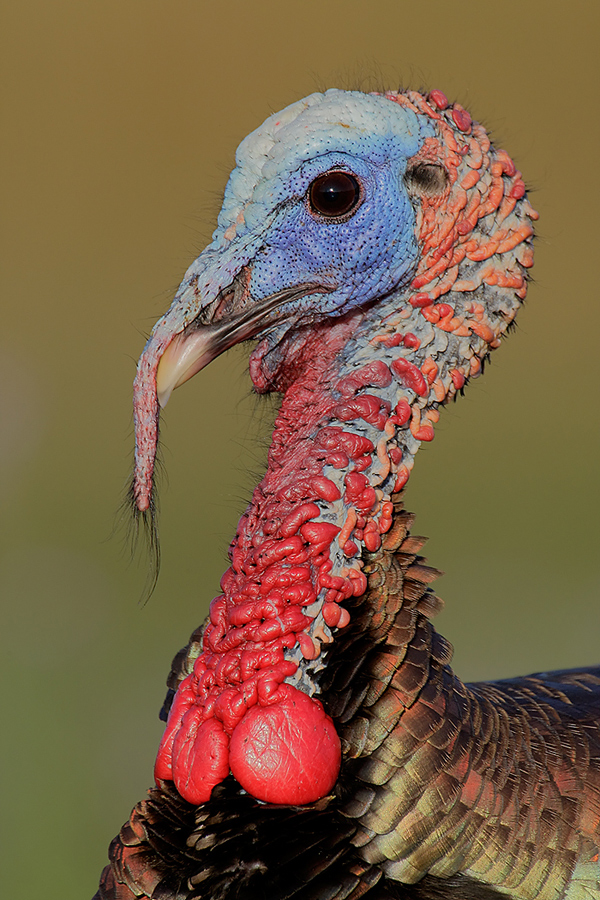
|
|
This tight head and neck portrait of a Wild Turkey tom was created near my home at Indian Lake Estates way back when, on February 16, 2008 with the Canon 500mm f/4L IS lens (now replaced by the much lighter Canon EF 500mm f/4L IS II USM lens), the 2X II YC (now replaced by the Canon 2x EF Extender III (Teleconverter), and the EOS-1D Mark III (now replaced by the Canon EOS-1D X. ISO 400. Evaluative metering +1/3 stop: 1/400 sec. at f/11.
Be sure to click on the image to enjoy a larger version.
|
Happy Bird Day
I, my right-hand man Jim Litzenberg, and BAA Executive Director and my daughter, Jennifer Morris, would like to wish each and every one of you and your friends and families a wonderful Thanksgiving filled with food, friends, football, and hopefully, a few hours to get out and photograph birds.
I am thankful that I am celebrating my 20th straight Thanksgiving at the wondrous place that is Bosque del Apache NWR. And for lots more in my wonderful life.
The Streak Continues: 362
After a killer sunrise and some amazing blackbird action, Denise and I headed back to town to get some work done, that after six straight days of teaching a total of about 65 folks how to make better images at Bosque. That plus our two part seminar and my keynote program. Whew!
I spent a good part of my day getting photos to the team that is assembling the bird photography video for the Canon Digital Learning Center. I am only about 1/4 done so it is a good thing that I have a few more days off.
Coming soon: a free Bosque Site Guide update for all: The State of the Bosque…. Today’s blog post, the 362nd in a row, took 1 1/2 hours to assemble (including the time for the DPP 4 RAW conversions and the image optimizations). It was published from my hotel room in Socorro, NM at 3:29am. We will continue our busman’s holiday tomorrow. We meet the 4-Day Bosque IPT group on Saturday afternoon.
Bosque 2015
Denise and I will again be collaborating on two Bosque IPTs in 2015, one before Thanksgiving and one after. Dates and rates will be announced here soon. If you would like to receive early notice, please shoot me an e-mail with the words “Bosque 2015” in the Subject Line. We already have several interested folks.
Please Help Support My Work on the BAA Blog
Thanks a Stack! The last six weeks have been great!
The last six weeks have been quite rewarding with more and more folks making it a habit to use my B&H links especially for their major gear purchases. It is great to feel appreciated. Thanks a stack to all who used our links for purchases large and small.
To show your appreciation for my efforts here, we ask, as always, that you use our the B&H and Amazon affiliate links on the right side of the blog for all of your purchases. B&H Is recommended for you major photography gear purchases, Amazon for your household, entertainment, and general purpose stuff. Please check the availability of all photographic accessories in the BIRDS AS ART Online Store, especially Gitzo tripods, Wimberley tripod heads, and the like. We sell only what I have used, have tested, and can depend on. We will not sell you junk. We know what you need to make creating great images easy and fun. And we are always glad to answer your gear questions via e-mail.
I would of course appreciate your using our B&H affiliate links for all of your major gear, video, and electronic purchases. For the photographic stuff mentioned in the paragraph above we, meaning BAA, would of course greatly appreciate your business. Here is a huge thank you to the many who have been using our links on a regular basis and visiting the BAA Online store as well.
Canon EOS-7D Mark II Back in Stock at B&H and Now Shipping
B&H has a limited supply of Canon EOS-7D Mark II bodies in stock. They are ready to ship you one today. Take part in the revolution. Need reach along with a great AF system and superb image quality? Order yours today by clicking on the logo link below.

 If what you’ve learned here on my blog about the Canon EOS-7D Mark II has inspired you to purchase this great new camera body, please consider using the logo link above to support our efforts here in bringing you the latest, greatest educational materials on daily basis.
If what you’ve learned here on my blog about the Canon EOS-7D Mark II has inspired you to purchase this great new camera body, please consider using the logo link above to support our efforts here in bringing you the latest, greatest educational materials on daily basis.
|
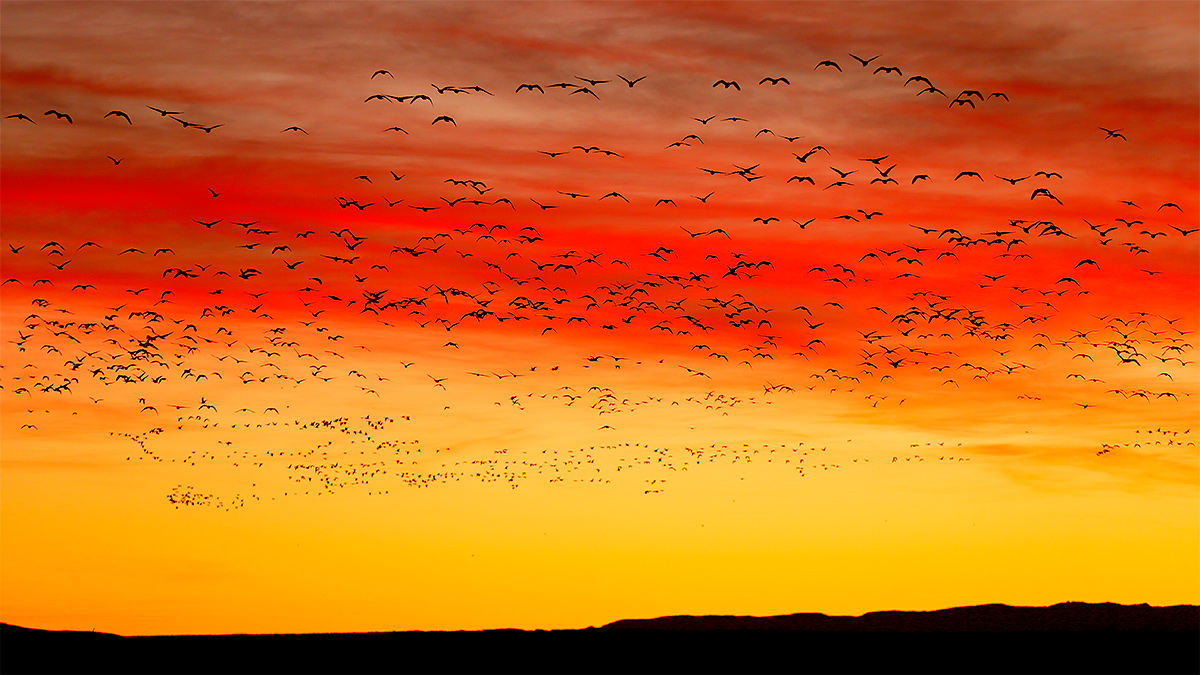
|
|
This image was created with the hand held Canon EF 70-200mm f/2.8L IS II lens (at 150mm) and the Canon EOS-1D X. ISO 400. Evaluative metering + 2/3 stop as framed: 1/200 sec. at f/2.8 in Tv mode.
Central sensor/AI Servo Surround/Rear Focus AF as originally framed (this is a small crop to 16 by 9) was active at the moment of exposure. Click here if you missed the Rear Focus Tutorial. Be sure to click on the image to see a larger version.
|
Sometimes When You Screw Up…
The light clouds in the east resulted in a glorious sunrise. I was working in the predawn with three rigs: the tripod-mounted 200-400 with a 1D X, the 70-200 with my other 1D X, and the 16-35mm with the 5D III. I had set all of them up in Tv mode +1 stop with a relatively slow shutter speed, ISO Safety Shift (the equivalent of Auto ISO for most of you), 8000 K, and rear focus AI Servo AF. I was doing some tree blurs with the hand held 70-200 when 20,000 geese came over the ridge and into the color. I quickly went to the 200-400, dis-engaged the internal TC, and made some nice images. Most of the birds were headed north but one large group turned around and headed through the color back towards the main impoundment, D-18.
At first I hesitated not sure whether to go for the 16-35 or the 70-200 and was wishing that the 24-70 in my coat pocket was on the 5D III…. Even a moment’s hesitation during those perfect seconds when everything is right can cost you. I eventually I picked up the 70-200 and concentrated on the birds coming back through the color (as above). I have no idea how I wound up at Av Mode and did not realize that I was working at a relatively high shutter speed of 1/200 sec. In any case, though I had no idea what I was doing I wound up with a very nice image. By the time I went for the 16-35 the show was over.
What’s Up with this Image?
If you click on this image to enlarge it and take a good close look you will note that it is rather bizarre. If you think that you know how it was created, please leave a comment. Good guesses are appreciated.
Your Favorite?
Which of today’s images do you like best? Be sure to let us know why.
IPT Updates
Would you like to visit some of the great bird photography locations on the planet? Would you like to learn from the best? Click here and join us.
Facebook
Be sure to like and follow BAA on Facebook by clicking on the logo link upper right. Tanks a stack!
Support the BAA Blog. Support the BAA Bulletins: Shop B&H here!
We want and need to keep providing you with the latest free information, photography and Photoshop lessons, and all manner of related information. Show your appreciation by making your purchases immediately after clicking on any of our B&H or Amazon Affiliate links in this blog post. Remember, B&H ain’t just photography!
…..
Amazon.com
Those who prefer to support BAA by shopping with Amazon may use this link:
Amazon Canada
Many kind folks from north of the border, eh, have e-mailed stating that they would love to help us out by using one of our affiliate links but that living in Canada and doing so presents numerous problems. Now, they can help us out by using our Amazon Canada affiliate link by starting their searches by clicking here. Many thanks to those who have written.
Typos
In all blog posts and Bulletins, feel free to e-mail or to leave a comment regarding any typos or errors. Just be right :).
November 26th, 2014 The Streak Continues: 361
Denise and I finished up Day 2 of our Bosque Creative IPT at the crane pools with a decent sunset and lots of very good silhouette opportunities. At Bosque even the clear sunsets can be great if you know where to be. We went out of the box in the pre-dawn foregoing the traditional strategies to go for cranes in orange as detailed in my Bosque Site Guide.
Coming soon: a free Bosque Site Guide update for all: The State of the Bosque…. Today’s blog post, the 361st in a row, took 4 hours to assemble (including the time for the DPP 4 RAW conversions and the image optimizations) and was published from my hotel room in Socorro, NM at 4:21am. We will be enjoying a busman’s holiday until we meet the 4-Day Bosque IPT on Saturday afternoon.
Bosque 2015
Denise and I will again be collaborating on two Bosque IPTs in 2015, one before Thanksgiving and one after. Dates and rates will be announced here soon. If you would like to receive early notice, please shoot me an e-mail with the words “Bosque 2015” in the Subject Line.
Please Help Support My Work on the BAA Blog
Thanks a Stack! The last six weeks have been great!
The last six weeks have been quite rewarding with more and more folks making it a habit to use my B&H links especially for their major gear purchases. It is great to feel appreciated. Thanks a stack to all who used our links for purchases large and small.
To show your appreciation for my efforts here, we ask, as always, that you use our the B&H and Amazon affiliate links on the right side of the blog for all of your purchases. B&H Is recommended for you major photography gear purchases, Amazon for your household, entertainment, and general purpose stuff. Please check the availability of all photographic accessories in the BIRDS AS ART Online Store, especially Gitzo tripods, Wimberley tripod heads, and the like. We sell only what I have used, have tested, and can depend on. We will not sell you junk. We know what you need to make creating great images easy and fun. And we are always glad to answer your gear questions via e-mail.
I would of course appreciate your using our B&H affiliate links for all of your major gear, video, and electronic purchases. For the photographic stuff mentioned in the paragraph above we, meaning BAA, would of course greatly appreciate your business. Here is a huge thank you to the many who have been using our links on a regular basis and visiting the BAA Online store as well.
Canon EOS-7D Mark II Back in Stock at B&H and Now Shipping
B&H has a limited supply of Canon EOS-7D Mark II bodies in stock. They are ready to ship you one today. Take part in the revolution. Need reach along with a great AF system and superb image quality? Order yours today by clicking on the logo link below.

 If what you’ve learned here on my blog about the Canon EOS-7D Mark II has inspired you to purchase this great new camera body, please consider using the logo link above to support our efforts here in bringing you the latest, greatest educational materials on daily basis.
If what you’ve learned here on my blog about the Canon EOS-7D Mark II has inspired you to purchase this great new camera body, please consider using the logo link above to support our efforts here in bringing you the latest, greatest educational materials on daily basis.
A Funny Thing Happened on the Way to the Crane Pools
After a huge fly out against so-so color we ran into a Bald Eagle on a nice perch tree just as the color developed. I enhanced the colors a bit with the Adjust Image Colors tab in DPP 4.
|
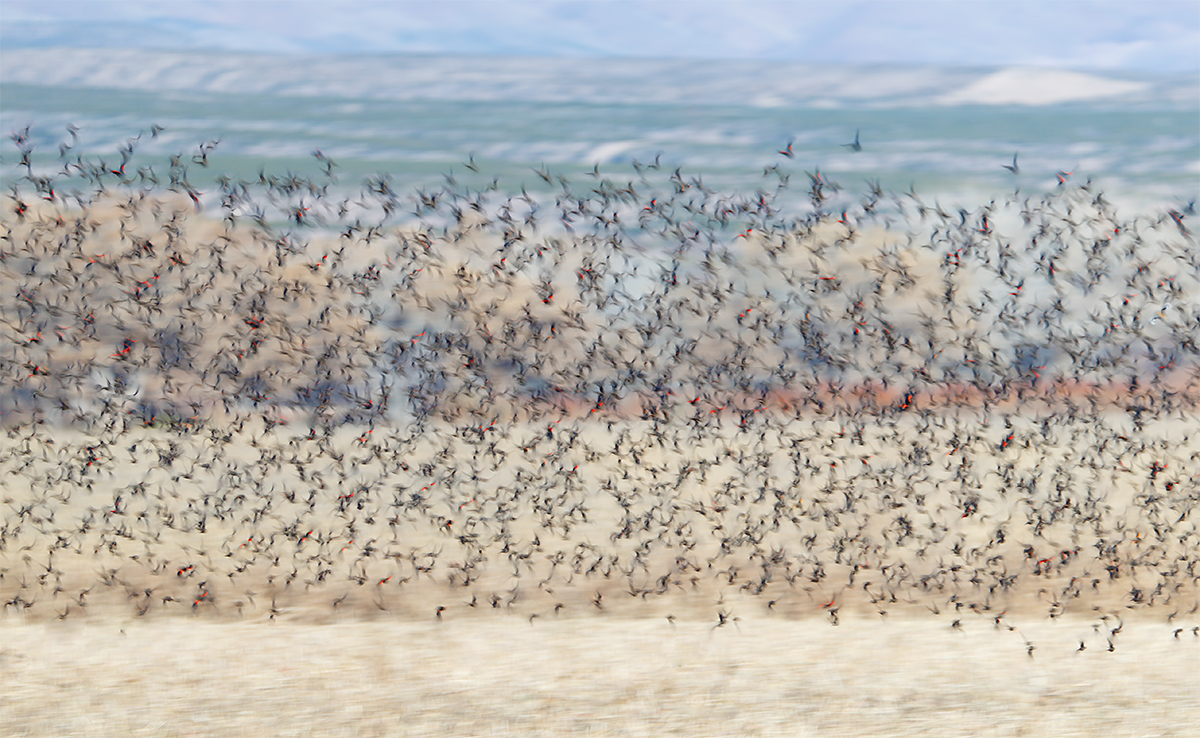
|
|
This image was created at Bosque del Apache NWR at 7:58am on November 24, 2014 on Day 1 of the 2-Day Creative Workshop with the with the Gitzo 3532 LS carbon fiber tripod, the Mongoose M3.6 head, the Canon EF 200-400mm f/4L IS USM Lens with Internal 1.4x Extender (with the internal TC in place at 533mm) and the Canon EOS-1D X. ISO 100. Evaluative metering +1 stop off the yellow grasses in Manual Mode. 3-stop drop-in (0.9) ND filter. We hope to have more info for you on the Singh-Ray 3-stop drop-in (0.9) ND filter soon. 1/30 sec. at f.5.6. AWB.
Central sensor/AI Servo/Surround–Rear Focus AF as framed active at the moment of exposure. Click here to see the latest version of the Rear Focus Tutorial. Click on the image to see a larger version.
Image #2: Blackbird Blastoff
|
Blackbird City
We have enjoyed some great blackbird blastoff action most every day at the north end of the Farm Loop. For many in the group it was their first time attempting to create pleasing blurs. Everyone did better than just fine.
Singh-Ray Filters
Singh-Ray filters have been used by the world’s top photographers for many decades. Who? Art Wolfe, Tony Sweet, John Barclay, my new friend Ian Plant, my BFF and oft-business partner, Denise Ippolito, Nevada Weir, Brenda Tharp, Cole Thompson, Chuck Kimmerle, and the late Galen Rowell among others. Singh-Ray has been and is the name in quality filters. I often use their 77mm warming polarizer set to dark at Bosque to get to a slower shutter speed in too-bright conditions and to tone down that fierce sun. BIRDS AS ART is working with Singh-Ray to produce a 5-stop Neutral Density filter to to fit the filter drawers of Canon Super-telephoto lenses. Staye tuned for info on that.
No other filter manufacturer comes close to matching the quality of Singh-Ray’s optical glass that is comparable to that used by NASA. And they continue to pioneer the most innovative products on the market like their ColorCombo polarizer, Vari-ND variable and Mor-Slo 15-stop neutral density filters. When you use their filters, you’ll create better, more dramatic images and, unlike other filters, with absolutely no sacrifice in image quality. All Singh-Ray filters are handcrafted in the USA.
Best News: 10% Discount/Code at checkout: artie10

To shop for a Singh-Ray 5-Stop ND filter (for example), click on the logo link below, click on Neutral and color density on the menu bar and then click on Mor-Slo 5, 10, 15 and 20-Stop Solid Neutral Density Filters. I go for the 77mm thin-ring 4.6mm (no front threads). This filter fits the 77mm lenses like the 70-200 f/2.8L IS and the 100-400. It is perfect for getting down to shutter speeds in the 1/8 to 1/30 sec range in Bosque’s seemingly omnipresent bright sun while working at relatively wide apertures. Now add to your cart and then checkout. At checkout, type artie10 into the “Have a coupon? Click here to enter your code” box, and a healthy 10% discount will be applied to your total. In addition to enjoying the world’s best filter at 10% off you will be supporting my efforts here on the blog.
|
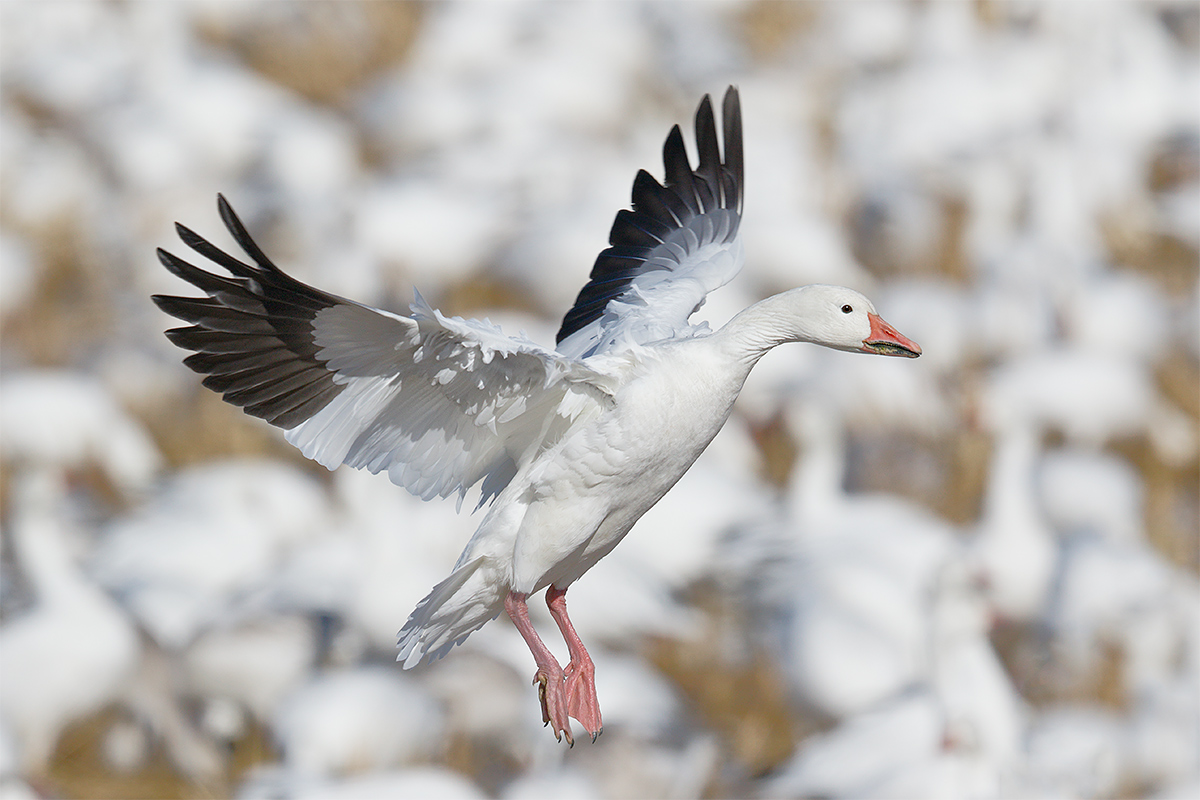
|
|
This image was created at Bosque del Apache NWR at 7:58am on November 24, 2014 on Day 1 of the 2-Day Creative Workshop with the Gitzo 3532 LS carbon fiber tripod, the Mongoose M3.6 head, with the Canon EF 600mm f/4L IS II USM lens and the Canon EOS 7D Mark II . ISO 400. Evaluative metering +1/3 stop off the blue sky 30 degrees up from the horizon: 1/3200 sec. at f/7.1 is the equivalent of our oft-recommended settings for bright whites in full sun: ISO 400, 1/2000 sec. at f/8 for and check your histogram. Some bodies might need 1/2500 sec. at f/8. Others rarely might need 1/3200 sec. at f/8.
Shutter button AF for nearly all pure flight situations. Click on the image to see a larger version.
Image #3: Snow Goose landing
|
Bad Wind….
With the wind from the west/northwest decent flight opportunities were few and far between. When they came along the 7D II was more than up to the task.
7D II for Reach
Whenever I need additional reach, I reach for my 7D Mark II. AF has proven to be superb.
|

|
|
This image was created at Bosque del Apache NWR at 10:54am on the sunny morning of November 24, 2014 on Day 1 of the 2-Day Creative Workshop with the Canon EF 70-200mm f/2.8L IS II USM lens (hand held at 80mm) and the Canon EOS-1D X. ISO 50. Evaluative metering +1/3 stop as framed: 1/15 sec. at f/13. Cloudy White Balance.
Singh-Ray 77mm 3-stop (0.9) Neutral Density filter allowed me to get down to 1/15th sec. in full sun without having to work at a tiny aperture that would have maximized dust bunnies.
One sensor up from the central AF point/AI Servo/Surround–Rear Focus AF as framed was active at the moment of exposure. Click here to see the latest version of the Rear Focus Tutorial. Click on the image to see a larger version.
Image #4: Snow Geese/Half-assed blastoff…
|
Half-assed…
We waited nearly 3 solid hours for the massive blastoff that seemed a near-certainty at 8:45am. It never happened…. This half-assed blast off was the best that the hungry birds could manage. Where is a coyote when you need one? We stayed were pretty darned patient but gave up at 11:30am and headed back to Socorro for lunch.
|

|
|
This image was created at Bosque del Apache NWR at 3:37pm on the partly cloudy afternoon of November 24, 2014 on Day 1 of the 2-Day Creative Workshop with the Canon EF 70-200mm f/2.8L IS II USM lens (hand held at 155mm) and the Canon EOS-1D X. ISO 50. Evaluative metering +2/3 stop: 1/8 sec. at f/4. Color temperature: 8000K.
Central sensor/AI Servo/Surround–Rear Focus AF on a tree in the center of the frame, release, re-frame lower, and pan vertically upwards during the exposure. Click here to see the latest version of the Rear Focus Tutorial. Click on the image to see a larger version.
Image #5: trees/vertical pan blur
|
Trees in the afternoon…
Many on the Creative IPT were hot for trees so we obliged. We discussed a variety of techniques including vertical pan blurs (as here), zoom blurs, and shiver blurs.
|

|
|
Learn the secrets of creating contest winning images in our “A Guide to Pleasing Blurs.”
|
A Guide to Pleasing Blurs
While lying in bed in the middle of last night and thinking of finishing this blog post, I realized that the two oof bird images were actually de-focused blurs, one of the many categories that we discuss and detail in our great eGuide, A Guide to Pleasing Blurs by Denise Ippolito and yours truly.
Pleasing Blurs are not accidents. Learn pretty much everything that there is about creating them in this instructive (as always) guide.
|
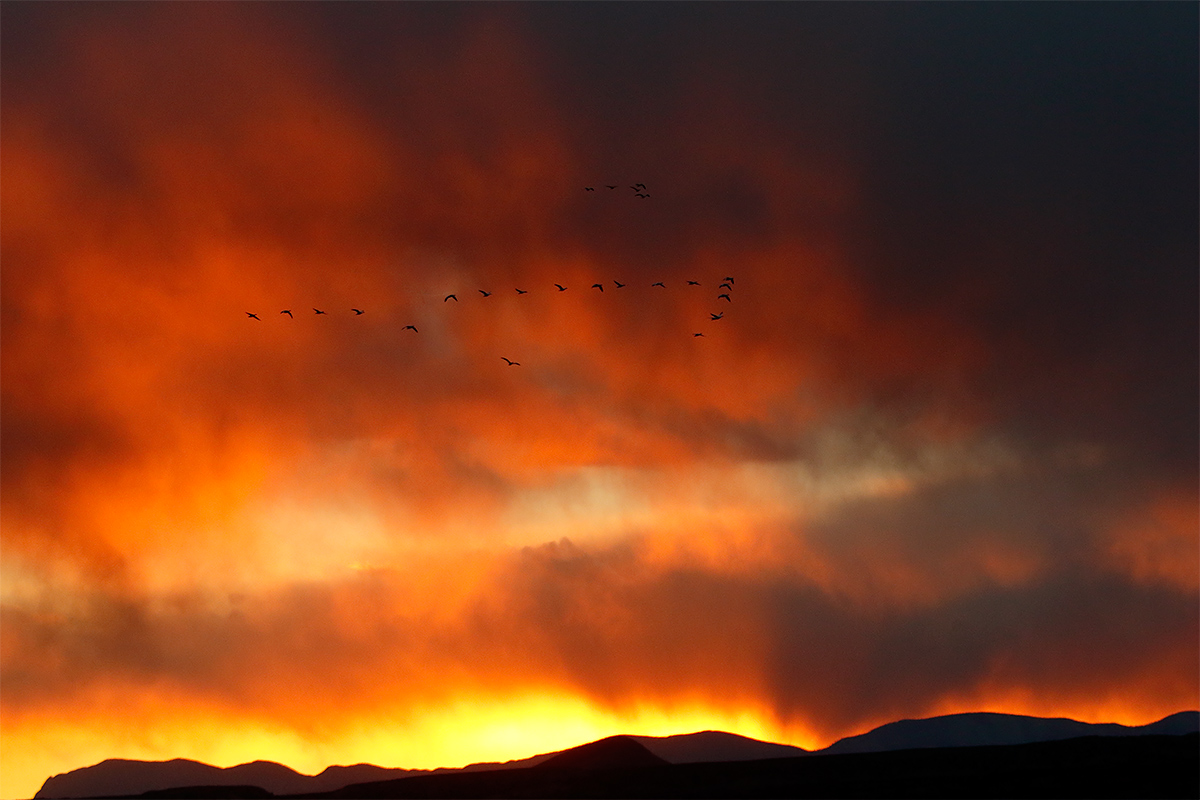
|
|
This image was created at Bosque del Apache NWR at 5:00pm on November 24, 2014 on Day 1 of the 2-Day Creative Workshop with the Canon EF 70-200mm f/2.8L IS II USM lens, the Canon Extender EF 2X III (hand held at 178mm) with the Canon EOS-1D X. ISO 2500. Evaluative metering -2/3 stop: 1/500 sec. at f/5.6. Color temperature: 8000K.
One sensor up from the Central AF point/AI Servo/Surround–Rear Focus AF as framed was active at the moment of exposure. Click here to see the latest version of the Rear Focus Tutorial. Click on the image to see a larger version.
Image #6: More fire in the sky
|
Earth on Fire?
As the sun set in the west behind the Chupaderas it seemed as if the earh behind them had caught fire. Birds in the color were frustratingly few and far behind.
Image Question
Why -2/3 EC for this one?
Your Favorites?
Which of today’s six images float your boat? Which do not? Either way, let us know why.
IPT Updates
Would you like to visit some of the great bird photography locations on the planet? Would you like to learn from the best? Click here and join us.
Facebook
Be sure to like and follow BAA on Facebook by clicking on the logo link upper right. Tanks a stack!
Support the BAA Blog. Support the BAA Bulletins: Shop B&H here!
We want and need to keep providing you with the latest free information, photography and Photoshop lessons, and all manner of related information. Show your appreciation by making your purchases immediately after clicking on any of our B&H or Amazon Affiliate links in this blog post. Remember, B&H ain’t just photography!
…..
Amazon.com
Those who prefer to support BAA by shopping with Amazon may use this link:
Amazon Canada
Many kind folks from north of the border, eh, have e-mailed stating that they would love to help us out by using one of our affiliate links but that living in Canada and doing so presents numerous problems. Now, they can help us out by using our Amazon Canada affiliate link by starting their searches by clicking here. Many thanks to those who have written.
Typos
In all blog posts and Bulletins, feel free to e-mail or to leave a comment regarding any typos or errors. Just be right :).
November 25th, 2014 Canon EOS-7D Mark II Back in Stock at B&H and Shipping Today!
B&H has a limited supply of Canon EOS-7D Mark II bodies in stock. They are ready to ship you one today. Take part in the revolution. Need reach along with a great AF system and superb image quality? Order yours today by clicking on the logo link below.

 If what you’ve learned here on my blog about the Canon EOS-7D Mark II has inspired you to purchase this great new camera body, please consider using the logo link above to support our efforts here in bringing you the latest, greatest educational materials on daily basis.
If what you’ve learned here on my blog about the Canon EOS-7D Mark II has inspired you to purchase this great new camera body, please consider using the logo link above to support our efforts here in bringing you the latest, greatest educational materials on daily basis.
The Streak Continues: 360
Denise and I began our Bosque Creative IPT with a huge Snow Goose flyout and a perched Bald Eagle with a pink backdrop. The geese came to us and packed into a flooded field. A huge blastoff seemed imminent. We gave up after three hours and headed back to K-Bobs for lunch and a bit of Photoshop work.
We did some tree blurs and a river scene in the afternoon and followed that up with a burning volcanic red sunset. Coming soon: a free Bosque Site Guide update for all: The State of the Bosque…. Today’s blog post, the 360th in a row, took 2 1/2 hours to assemble and was published from my hotel room in Socorro, NM at 3:58am. Tonight, we rest.
Please Help Support My Work on the BAA Blog
Thanks a Stack! The last six weeks have been great!
The last six weeks have been quite rewarding with more and more folks making it a habit to use my B&H links especially for their major gear purchases. It is great to feel appreciated. Thanks a stack to all who used our links for purchases large and small.
To show your appreciation for my efforts here, we ask, as always, that you use our the B&H and Amazon affiliate links on the right side of the blog for all of your purchases. B&H Is recommended for you major photography gear purchases, Amazon for your household, entertainment, and general purpose stuff. Please check the availability of all photographic accessories in the BIRDS AS ART Online Store, especially Gitzo tripods, Wimberley tripod heads, and the like. We sell only what I have used, have tested, and can depend on. We will not sell you junk. We know what you need to make creating great images easy and fun. And we are always glad to answer your gear questions via e-mail.
I would of course appreciate your using our B&H affiliate links for all of your major gear, video, and electronic purchases. For the photographic stuff mentioned in the paragraph above we, meaning BAA, would of course greatly appreciate your business. Here is a huge thank you to the many who have been using our links on a regular basis and visiting the BAA Online store as well.
Canon EOS-5D III & 7D Mark II In-camera HDR and APS-C Sensor Body Wide Options
Both the 5D III and the 7D II offer in-camera HDR. My favorite HDR setting is Art Vivid which produces a very large JPEG with somewhat juiced up colors. I often reduce the saturation 10 to 20 points and get very useable results.
Most of my HDR work is done using wide angle lenses. When you are working with 1.6X crop factor camera body like the 7D Mark II you need to purchase a special wide angle lens designed for cameras with APS-C sized sensors in order to get the full wide angle effect. The best of the lot is the Canon EF-S 10-22mm f/3.5-4.5 USM lens. From where I sit, it is penny wise and pound foolish to skimp when it comes to a quality wide angle lens or to be limited when the need for a really wide focal length comes along.
You can find a great variety of APS-C wide angle options here. The choices here include many less expensive yet quality wide angles. Each would serve you well. Remember that most lenses are sharper than most photographers. As with all other photo gear, buy the best that you can afford and learn to use it to the best of your abilities.
|
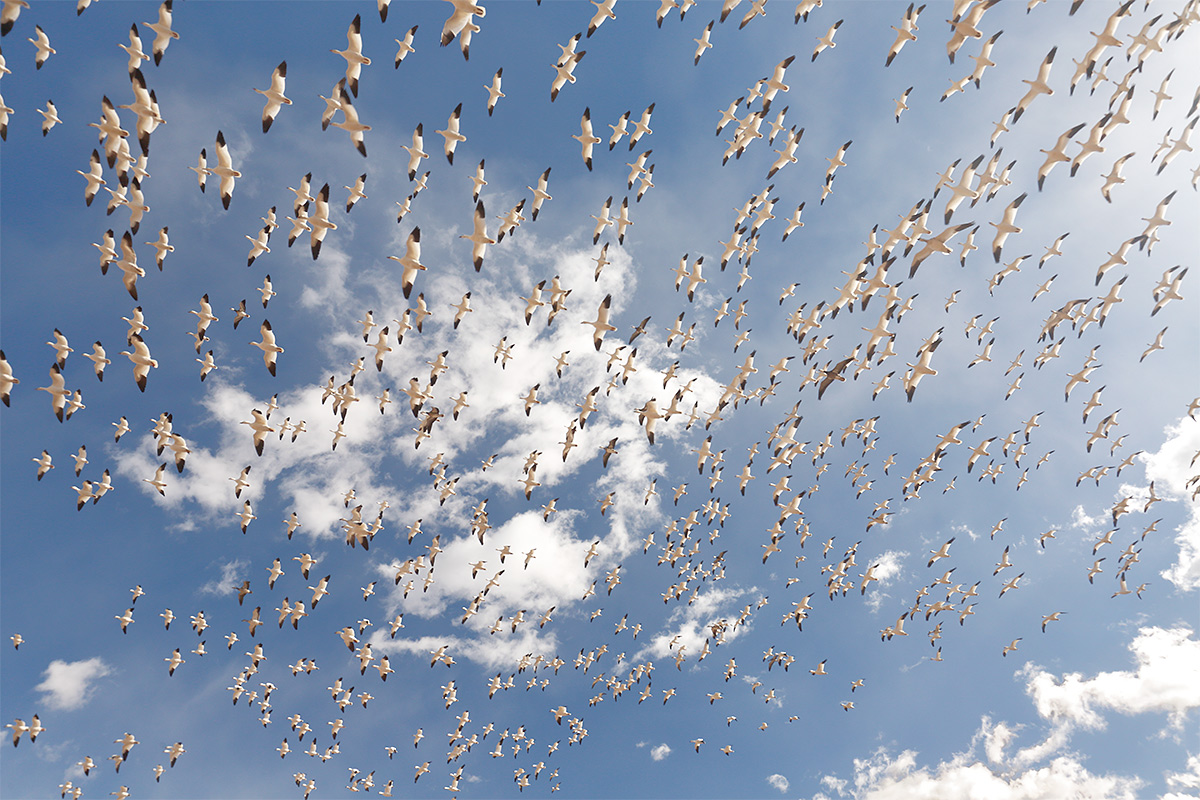
|
|
This image was created with the hand held Canon EF 16-35mm f/4L IS USM lens (at 20mm) and the Canon EOS-1D X.
Evaluative metering 1 stop: 1/200 sec. at f/10.
Central sensor AI Servo Surround/Rear Focus as framed was active at the moment of exposure. Click here to see the latest version of the Rear Focus Tutorial. Click on the image to see a larger version.
|
The Wind
I created this image during Sunday’s wind storm; after big blastoffs large groups of geese often fly directly overhead right above the tour loop road. It is best to have a wide angle lens mounted, ready to go, and within easy reach. I learned the other day that when working with a big lens on a tripod and two additional rigs that having both rigs on a Black Rapid RS-7 strap is a lot better option than having one on a Black Rapid RS-7 strap and one on a camera body strap.
Image Question
Was 1/200 sec. at f/10 an error? Why? Hint: the widest aperture on the 16-35 IS is f/4.
|

|
|
Fort DeSoto in spring can be bird photographer’s heaven. And most of the birds are stupid tame.
|
Fort DeSoto in Spring/Breeding Plumage IPT: April 24-26, 2015. 3 FULL DAYs: $1099. Limit 8/Openings: 7.
Meet and Greet at 8pm on Thursday, April 23.
Join me at Fort DeSoto at the height of the breeding season for many of our target species: Laughing Gull, Royal Tern, Sandwich Tern, dark and light morph Reddish Egret, Great Egret, Tricolored Heron, and Yellow-crowned Night-Heron. In addition, we will have a good shot at photographing a variety of arctic-bound shorebird species in breeding plumage. We should have good chances with a variety of courtship behaviors including courtship feeding, courtship displays, pre-copulatory stands, and copulation.
On this IPT you will the learn basics and fine points of digital exposure and how to get the right exposure every time after making a single test exposure, how to approach free and wild birds without disturbing them, to understand and predict bird behavior, to identify many species of shorebirds, to spot the good situations, to choose the best perspective, to see and understand the light, and to design pleasing images by mastering your camera’s AF system. And you will learn learn how and why to work in Manual mode (even if you’re scared of it).
At lunch (included) we will review my images–folks learn a ton watching me edit–why keep this one and delete that one. If you opt to bring your laptop, we will take a look at five of your best images from the morning session. We will process a few of my images in Photoshop after converting them in DPP. That followed by Instructor Nap Time.
A $499 non-refundable deposit is required to hold you spot. The balance, $600 will be due on February 7, 2015. Please click here to read our cancellation policy. Then please print, read, and sign the necessary paperwork here and send it to us.
See more on Fort DeSoto in spring here.
Fort DeSoto Site Guide
Can’t make the IPT? Get yourself a copy of the Fort DeSoto Site Guide. Learn the best spots, where to be when in what season in what weather. Learn the best wind directions for the various locations. BAA Site Guides are the next best thing to being on an IPT. You can see all of them here.
IPT Updates
Would you like to visit some of the great bird photography locations on the planet? Would you like to learn from the best? Click here and join us.
Facebook
Be sure to like and follow BAA on Facebook by clicking on the logo link upper right. Tanks a stack!
Support the BAA Blog. Support the BAA Bulletins: Shop B&H here!
We want and need to keep providing you with the latest free information, photography and Photoshop lessons, and all manner of related information. Show your appreciation by making your purchases immediately after clicking on any of our B&H or Amazon Affiliate links in this blog post. Remember, B&H ain’t just photography!
…..
Amazon.com
Those who prefer to support BAA by shopping with Amazon may use this link:
Amazon Canada
Many kind folks from north of the border, eh, have e-mailed stating that they would love to help us out by using one of our affiliate links but that living in Canada and doing so presents numerous problems. Now, they can help us out by using our Amazon Canada affiliate link by starting their searches by clicking here. Many thanks to those who have written.
Typos
In all blog posts and Bulletins, feel free to e-mail or to leave a comment regarding any typos or errors. Just be right :).
November 24th, 2014
The Streak Continues: 359
We had our fourth in a row Wonderful Festival of the Cranes Early Morning Workshop group and everyone learned a ton; we rocked ’em again. Learn more about our amazing weather day below and more in a coming blog post.
Coming soon: a free Bosque Site Guide update for all: The State of the Bosque…. Today’s blog post, the 359th in a row, took 1 1/2 hours to assemble and was published from my hotel room in Socorro, NM at 3:24am. Tonight, we meet our 2-DAY Creative Workshop group.
The Mac PDF Mystery Resolved–Sort Of…
Arash sent me the updated DPP Guide via e-mail to my gmail account. It opened easily with a single click in Adobe Acrobat Reader for Mac. Thanks to all who offered help and thoughts. The mystery remains as to how the file, sent as an e-mail attachment to my samandmayas att address, became corrupted….
Please Help Support My Work on the BAA Blog
Thanks a Stack! The last six weeks have been great!
The last six weeks have been quite rewarding with more and more folks making it a habit to use my B&H links especially for their major gear purchases. It is great to feel appreciated. Thanks a stack to all who used our links for purchases large and small.
To show your appreciation for my efforts here, we ask, as always, that you use our the B&H and Amazon affiliate links on the right side of the blog for all of your purchases. B&H Is recommended for you major photography gear purchases, Amazon for your household, entertainment, and general purpose stuff. Please check the availability of all photographic accessories in the BIRDS AS ART Online Store, especially Gitzo tripods, Wimberley tripod heads, and the like. We sell only what I have used, have tested, and can depend on. We will not sell you junk. We know what you need to make creating great images easy and fun. And we are always glad to answer your gear questions via e-mail.
I would of course appreciate your using our B&H affiliate links for all of your major gear, video, and electronic purchases. For the photographic stuff mentioned in the paragraph above we, meaning BAA, would of course greatly appreciate your business. Here is a huge thank you to the many who have been using our links on a regular basis and visiting the BAA Online store as well.
The Calm Before the Wind…
Despite the Armageddon-like forecast for Sunday morning, the day dawned with relatively calm shifting winds. We had a great flyout and then, seeing the color develop in front of us we moved south past the flight deck to find some birds to put in front of the color. It was the same old lesson that folks fail to get. Everyone photographing north of the Flight Deck stayed put.
By 9:00 the wind was about 20mph from the NW. By 11:00am it was a solid 25-30 from the NW with gusts to 47. Nice. Can you say wind against sun? When the gusts strengthened, you needed to turn around to avoid being blinded by the blowing sand and grit. I had as many as four rigs set up with three of them on the ground resting on an old scarf. Everything quickly became covered in dirt, dust, and grit. We had found lots of geese, far away at first. Big numbers wound up right by the tour loop road and we stayed with them despite the horrific conditions.
I saw the potential; we stayed till noon in the bright sunshine, and eventually, those who persevered, were greatly rewarded. In addition, I had a revelation that I will share with you here soon.
The Image Conversion
The RAW file was converted in DPP 4. I moved the Shadow slighter 5 to the right to open up the dark areas and the Highlight slider 2 to the left to darken the brightest YELLOWs. The only thing that I did in Photoshop was a slight Curves adjustment to further open up the darker areas and tone down the highlights, both only a bit. Otherwise the image is right out of camera with not a pixel altered.
IPT Updates
Would you like to visit some of the great bird photography locations on the planet? Would you like to learn from the best? Click here and join us.
|

|
|
All of the images in the bear boat card above were created in Katmai National Park during the month of September.
|
Bear Boat/Bears Catching Salmon IPT: September 1-8, 2015 from Kodiak, AK/6 FULL & 2 1/2 DAYS: $6699. Happy campers only! Maximum 8/Openings: 5. Plus the leader: Arthur Morris.
If I do not have four deposit checks in hand by 1/31/2015 I reserve the right to scrap this trip so please do not purchase your plane tickets until you hear from me. 🙂 Only one to go.
Join me in Katmai National Park, AK for seven days of photographing Coastal Brown Bears (grizzlies) catching salmon, fattening up for the long winter. Other subjects will include Mew and Glaucous-winged Gulls in flight and dip-feeding on salmon roe. Did I mention that we live on a boat and that the food is great? Most of our photography will be done in a variety of famed locations: Geographic Harbor, Kinak Bay, and Kukak Bay. We once had 39 bears fishing the creek at Kukak….
It is mandatory that you be in Kodiak no later than the late afternoon of August 31, 2015 September to avoid missing the float planes to the boat on the morning of September 1. With air travel in AK being what it is, with the chance of fog or other bad weather–being on Kodiak on August 30 is an even better plan). I be on Kodiak on August 30 to avoid any potential disaster. That said in my nearly a dozen bear boat trips I was delayed only once but since I was day early as noted above there was no harm, no foul.
We will take one or more float planes to the boat mid-morning on September 1. We will photograph bears fishing that afternoon and every day for the next six days (weather permitting of course). We should have bears catching salmon every day. In addition, we will get some nice stuff on Mew Gull and Glaucous-winged Gulls dining on roe and the remains of predated salmon. We may–depending on where the concentrations of bears are–get to photograph Harbor seals and some hauled out Steller’s Sea Lions (an endangered species). Halibut fishing (license required) is optional. On September 8, our last morning on the boat, those who would like to enjoy one last photo session will do so. The group returns to Kodiak via float plane midday. Most folks will fly to Anchorage and then continue on red-eye flights to their home cities.
The eight days will consist of six full days (Sept 2, 3, 4, 5, 6, & 7) of photography featuring lots of Coastal Brown Bears catching salmon as above plus a variety of other natural history subjects plus some nice scenic photography that I forgot to mention above. Plus the first afternoon and the last morning.
What’s included? 8 DAYS/7 NIGHTS on the boat as above. All meals on the boat. (The food is quite excellent.) National Park fees. One night’s double occupancy lodging on Kodiak; arrive: Sept 1/depart: Sept 2. The thank-you-in-advance dinner on Sept 1. In-the-field photo tips, instruction, and guidance. An insight into the mind of a top professional; I will constantly let you know what I am thinking, what I am doing, and why I am doing it. Small group image review, image sharing, and Photoshop instruction on the boat.
What’s not included: Your round trip airfare to and from Kodiak, AK (almost surely through Anchorage). All necessary lodging other than the cost of your double occupancy room on the night of August 31 should you opt to arrive early–we can arrange that in advance for you. We will let you know the cost of a single supplement for the one night if so desired. The cost of the round-trip float plane to the boat on September 2 and back to Kodiak on September 9. The cost of a round trip this year was $500. The suggested crew tip of $210.
Is this an expensive trip? Yes, of course. But with 6 full and two half days, a wealth of great subjects, and the fact that you will be walking with the bears just yards away (or less….) it will be one of the great natural history experiences of your life. Most folks who take part in a Bear Boat IPT wind up coming back for more.
A $2,000 per person non-refundable deposit by check only made out to “Arthur Morris” is required to hold your spot. Please click here to read our cancellation policy. Then please print, read, and sign the necessary paperwork here and send it to us.
Your deposit is due immediately. That will leave a balance of $4699. The next payment of $2699 will be due on February 15, 2015. The final payment of $2000 is due on May 1, 2015.
I hope that you can join us for this wondrously exciting trip.
By e-mail from Bill Keown, veteran of three bear boat trips!
Hi Artie, What a great trip! With the exception of the one bright sunny day it was just great. Very different from my first trip in June where we only had the bears clamming; the fishing bears were amazing! As always I learned a lot and enjoyed the group immensely. All the Best, Bill
Facebook
Be sure to like and follow BAA on Facebook by clicking on the logo link upper right. Tanks a stack!
Support the BAA Blog. Support the BAA Bulletins: Shop B&H here!
We want and need to keep providing you with the latest free information, photography and Photoshop lessons, and all manner of related information. Show your appreciation by making your purchases immediately after clicking on any of our B&H or Amazon Affiliate links in this blog post. Remember, B&H ain’t just photography!
…..
Amazon.com
Those who prefer to support BAA by shopping with Amazon may use this link:
Amazon Canada
Many kind folks from north of the border, eh, have e-mailed stating that they would love to help us out by using one of our affiliate links but that living in Canada and doing so presents numerous problems. Now, they can help us out by using our Amazon Canada affiliate link by starting their searches by clicking here. Many thanks to those who have written.
Typos
In all blog posts and Bulletins, feel free to e-mail or to leave a comment regarding any typos or errors. Just be right :).
November 23rd, 2014
|

|
|
Screen Capture
|
Mac Help Needed
Arash sent me the updated DPP 4 Guide with the sharpness and noise reduction tables updates for the 7D II. When I click on he PDF I get the error message above. Arash is also on a Mac so the problem makes no sense to me :).
Any and all help would be appreciated. I need to make sure that Jim has the updated version at the home office before I make a formal announcement.
The Streak Continues: 358
We had another wonderful Festival of the Cranes Workshop group and everyone learned a ton; Denise and I rocked ’em again . We enjoyed some pretty good photography especially with the pre-dawn blast of about 20,000 geese in one fell swoop. Denise and I headed back to the refuge early and enjoyed some good goose action and a lovely crane pool sunset.
Coming soon: a free Bosque Site Guide update for all: The State of the Bosque…. Today’s blog post, the 358th in a row, took 1 1/2 hours to assemble and was published from my hotel room in Socorro, NM at 3:34am. Tomorrow, with an Armageddon-like forecast, is our fourth and last early morning photography Festival workshop.
|
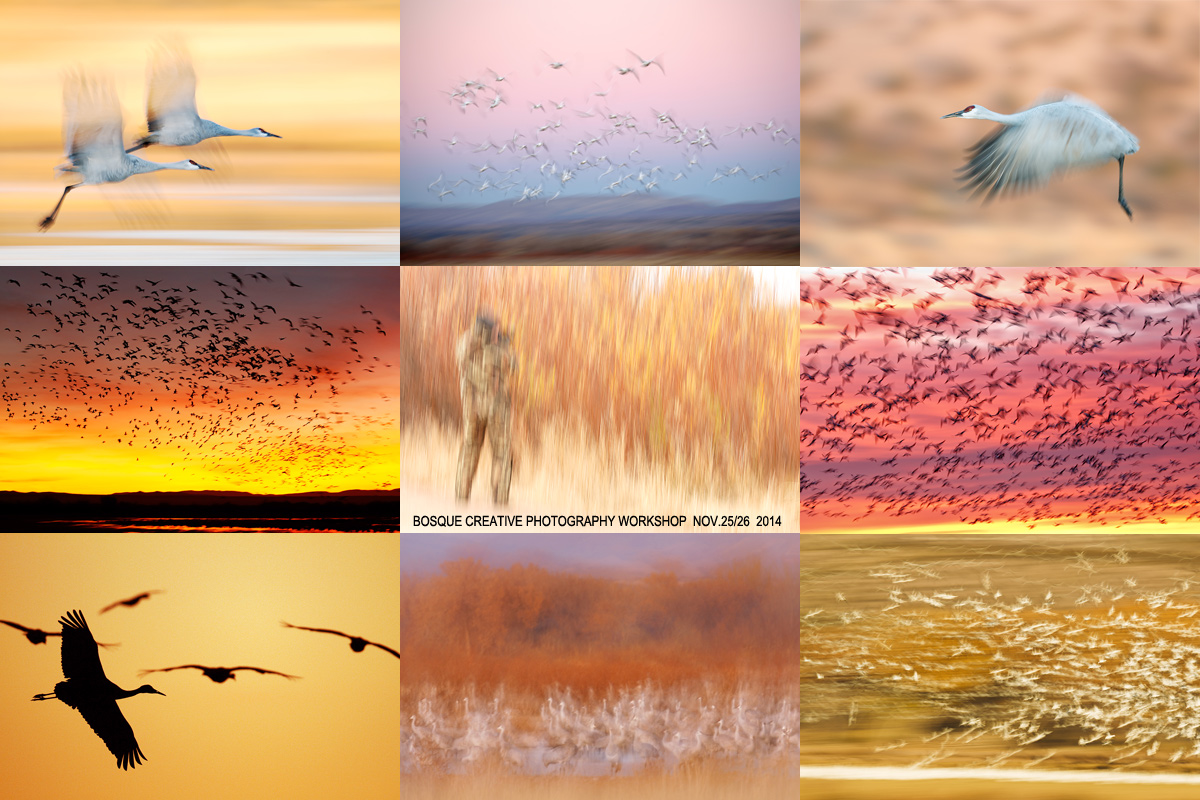
|
|
Join Denise Ippolito and Arthur Morris for two great days of photography, fun, and learning at one of our favorite soul places. We will surely be taking you out of the box on this workshop. Please click on the card to enjoy a larger version.
|
Bosque del Apache 2014 A Creative Adventure/BIRDS AS ART “Creative Photography Instructional Photo-Tour.” (IPT). NOV 24-25, 2014. 2-FULL DAYS: $729. Leaders: Denise Ippolito & Arthur Morris. Introductory Slide program: 7:00pm on Sunday 11/23.
It is still not too late to Get Out of Your Box!
The Creative Bosque IPT is perfect for folks who want to learn to think outside the box, to create new and different images. This workshop is the perfect add-on for folks who attended the Festival of the Cranes. Learn to unleash your creative juices at the wondrous Bosque del Apache National Wildlife Refuge in San Antonio, New Mexico with two great leaders including the amazingly talented and creative Denise Ippolito. In-the-field instruction will include tips on gear set-up, on creating a variety of pleasing blurs, on getting the right exposure, and on designing pleasing images. And lots more. From vertical pan blurs to subject motion blurs to zoom blurs to multiple exposures we will cover it all. If conditions are perfect, we will not hesitate to take advantage of them to do some traditional bird photography. This workshop will include an inspirational introductory slide program on Sunday evening, 11/23, after dinner on your own, two morning and two afternoon photography sessions, all lunches, a digital workflow and Photoshop session after lunch on Monday, and an image critiquing session after lunch on Tuesday.
At this late hour, the only way to to sign up is to either find us on the refuge or get in touch via e-mail.
Please Help Support My Work on the BAA Blog
Thanks a Stack! The last six weeks have been great!
The last six weeks have been quite rewarding with more and more folks making it a habit to use my B&H links especially for their major gear purchases. It is great to feel appreciated. Thanks a stack to all who used our links for purchases large and small.
To show your appreciation for my efforts here, we ask, as always, that you use our the B&H and Amazon affiliate links on the right side of the blog for all of your purchases. B&H Is recommended for you major photography gear purchases, Amazon for your household, entertainment, and general purpose stuff. Please check the availability of all photographic accessories in the BIRDS AS ART Online Store, especially Gitzo tripods, Wimberley tripod heads, and the like. We sell only what I have used, have tested, and can depend on. We will not sell you junk. We know what you need to make creating great images easy and fun. And we are always glad to answer your gear questions via e-mail.
I would of course appreciate your using our B&H affiliate links for all of your major gear, video, and electronic purchases. For the photographic stuff mentioned in the paragraph above we, meaning BAA, would of course greatly appreciate your business. Here is a huge thank you to the many who have been using our links on a regular basis and visiting the BAA Online store as well.
|

|
|
This image was created on the clear sunny afternoon of November 22 at 3:20pm at Bosque del Apache NWR with the hand held Canon EF 24-105mm f/4L IS USM lens (at 35mm) and the Canon EOS 5D Mark III. ISO 50. Evaluative metering +1/3 stop was a small underexposure (but for a very few hot Snow Goose bellies….): 1/15 sec. at f/22 in Tv mode.
Two sensors below the central sensor AI Servo Surround/Rear Focus as framed was active at the moment of exposure. Click here to see the latest version of the Rear Focus Tutorial. Click on the image to see a larger version.
|
Mayhem at 35m: Like it or hate it?
Much of bird photography at Bosque is about understanding the wind. With a southeast breeze I put myself in position just to the right of the flock with a wide angle lens so that when they blasted off they would be coming right at me. I had added an 82mm Singh-Ray Circular Polarizer and set it to dark in order to get down to 1/15 sec. In addition the warming element did a great job of taming the harsh light. See the short tutorial below to learn how to set a circular polarizer to dark.
Your call: like it or hate it? OK to hate it just be civil :). Whichever, please let us know why.
Tip of the Day
Whether you prefer blurs or sharp (I pretty much always prefer the former to the latter), one of the key things to remember when creating images in any way similar to the one above is to concentrate on both keeping the camera relatively square to the world and on getting a clean lower edge. You can kill two birds with one stone by leveling your hand held rig by eyeballing the bottom of the flock….
Singh-Ray Filters
Singh-Ray filters have been used by the world’s top photographers for many decades. Who? Art Wolfe, Tony Sweet, John Barclay, my new friend Ian Plant, my BFF and oft-business partner, Denise Ippolito, Nevada Weir, Brenda Tharp, Cole Thompson, Chuck Kimmerle, and the late Galen Rowell among others. Singh-Ray has been and is the name in quality filters. I often use a 77mm warming polarizer set to dark at Bosque to get to a slower shutter speed in too-bright conditions. Toward that end, BIRDS AS ART is working with Singh-Ray to produce a 5-stop Neutral Density filter to to fit the filter drawers of Canon Super-telephoto lenses. Stayed tuned for info on that.
No other filter manufacturer comes close to matching the quality of Singh-Ray’s optical glass that is comparable to that used by NASA. And they continue to pioneer the most innovative products on the market like their ColorCombo polarizer, Vari-ND variable and Mor-Slo 15-stop neutral density filters. When you use their filters, you’ll create better, more dramatic images and, unlike other filters, with absolutely no sacrifice in image quality. All Singh-Ray filters are handcrafted in the USA.
Best News: 10% Discount/Code at checkout: artie10
To shop for a Singh-Ray warming polarizer (for example), click on the logo link below, click on Polarizers/color enhancing on the menu bar, choose LB Warming Polarizer, choose the size and model, add to cart, and then checkout. At checkout, type artie10 into the “Have a coupon? Click here to enter your code” box, and a healthy 10% discount will be applied to your total. In addition to enjoying the world’s best filter at 10% off you will be supporting my efforts here on the blog.

How to Set A Circular Polarizer to Dark
Mount the polarizer. Put the camera in Av mode at zero EC. Point the lens at the sky 90 degrees off sun angle. Turn the polarizer slowly while noting the shutter speed as you rotate the polarizer. You will want to quit turning it when you find the slowest shutter speed. Now you can work right down sun angle several stops slower than if you were not using a polarizer set to dark.
|

|
|
Learn the secrets of creating contest winning images in our “A Guide to Pleasing Blurs.”
|
A Guide to Pleasing Blurs
While lying in bed in the middle of last night and thinking of finishing this blog post, I realized that the two oof bird images were actually de-focused blurs, one of the many categories that we discuss and detail in our great eGuide, A Guide to Pleasing Blurs by Denise Ippolito and yours truly.
Pleasing Blurs are not accidents. Learn pretty much everything that there is about creating them in this instructive (as always) guide.
IPT Updates
Would you like to visit some of the great bird photography locations on the planet? Would you like to learn from the best? Click here and join us.
Facebook
Be sure to like and follow BAA on Facebook by clicking on the logo link upper right. Tanks a stack!
Support the BAA Blog. Support the BAA Bulletins: Shop B&H here!
We want and need to keep providing you with the latest free information, photography and Photoshop lessons, and all manner of related information. Show your appreciation by making your purchases immediately after clicking on any of our B&H or Amazon Affiliate links in this blog post. Remember, B&H ain’t just photography!
…..
Amazon.com
Those who prefer to support BAA by shopping with Amazon may use this link:
Amazon Canada
Many kind folks from north of the border, eh, have e-mailed stating that they would love to help us out by using one of our affiliate links but that living in Canada and doing so presents numerous problems. Now, they can help us out by using our Amazon Canada affiliate link by starting their searches by clicking here. Many thanks to those who have written.
Typos
In all blog posts and Bulletins, feel free to e-mail or to leave a comment regarding any typos or errors. Just be right :).
November 22nd, 2014 The Streak Continues: 357
Denise and I rocked ’em again on our second Festival Early Morning In the Field workshop. We had fifteen folks. The pre-dawn sky offered a bit more color than the day before but was still pretty boring but everyone learned a ton. The crane pool was only so-so but everyone learned a ton. Then we re-visited the new flooded field but that was not very good either. But everyone learned a ton. Despite a crummy overall morning but everyone learned a ton. Again we were plagued by the seemingly omnipresent northwest breeze. Everyone received lots of individual attention and everyone went home very happy.
Mike Cohen of southeast Florida was in the Friday morning group. At the end of the session he came up to me and said, “That was great. I learned so much. And I am glad that I came and met you in person. Before today, I did not like you. But you are actually charming.” I said, “You’ve heard bad stuff about me from others? Heard that I am arrogant and do not care if you learn? And heard that I will push you out of the way to get my shot.?” He said, “Yeah, in part.” I said, “Please remember that 99% of those folks have never been on an IPT or in a class, have never met me.” He said, “But also a bit from your manner on the blog and in e-mail. But I was amazed to find out that you are a really nice guy.” “Thanks,” I said, “I really am a teddy bear….”
My keynote presentation, “A Twenty Year Love Affair with Bosque” was warmly received by a large crowd. It was a pleasure having 14-year Bosque manager Phil Norton in the audience. He kindly contributed some back story on the state of the refuge since he left and later retired from the refuge system.
The like-new Canon 200-400 lens offered yesterday sold instantly. Today’s blog post, the 357th in a row, took 2 hours to assemble and was published from my hotel room in Socorro, NM at 3:50am.
Festival of the Cranes Early Sunday Morning Photography In-the-Field Workshop
Festival of the Cranes Early Sunday Morning, NOV 23. In-the-Field Photography Workshop: 5:50-10:30am. Limit 16/Openings 5. $125. After sellouts on Thursday, Friday, and Saturday there are still a few openings for the Sunday offering. Sign up at the Festival Info Table in the Bosque Visitor Center.
Join full time professional photographers Arthur Morris/BIRDS AS ART and Denise Ippolito/A Creative Adventure for four 1/2 hours of fun and learning at the refuge. You will learn how to create pleasingly blurred images in the low predawn light, to spot the good situations, to understand the effects of wind speed and direction on bird (especially in flight) photography, to photograph individual cranes in flight, to see and understand the light, to get the right exposure every time after making a single test exposure, and to design pleasing images. In addition you will learn and live Artie’s early morning Bosque del Apache strategies, strategies based on over two decades of experience at the refuge. This is a caravan event and a refuge pass will be provided. Dress with layers for warmth and bring snacks and plenty of water. Workshop leaves sharply at 6:00 AM.
By e-mail from Friday Participant and Blog Regular David Policansky
I’m still replaying the morning in-the-field trip with you and Denise in my head. It was so helpful to watch you in action and hear your explanations of what you were doing and why. I don’t think even your detailed written words can quite take the place of the experience in the field. David
|

|
|
Join Denise Ippolito and Arthur Morris for two great days of photography, fun, and learning at one of our favorite soul places. We will surely be taking you out of the box on this workshop. Please click on the card to enjoy a larger version.
|
Bosque del Apache 2014 A Creative Adventure/BIRDS AS ART “Creative Photography Instructional Photo-Tour.” (IPT). NOV 24-25, 2014. 2-FULL DAYS: $729. Leaders: Denise Ippolito & Arthur Morris. Introductory Slide program: 7:00pm on Sunday 11/23.
It is still not too late to Get Out of Your Box!
The Creative Bosque IPT is perfect for folks who want to learn to think outside the box, to create new and different images. This workshop is the perfect add-on for folks who attended the Festival of the Cranes. Learn to unleash your creative juices at the wondrous Bosque del Apache National Wildlife Refuge in San Antonio, New Mexico with two great leaders including the amazingly talented and creative Denise Ippolito. In-the-field instruction will include tips on gear set-up, on creating a variety of pleasing blurs, on getting the right exposure, and on designing pleasing images. And lots more. From vertical pan blurs to subject motion blurs to zoom blurs to multiple exposures we will cover it all. If conditions are perfect, we will not hesitate to take advantage of them to do some traditional bird photography. This workshop will include an inspirational introductory slide program on Sunday evening, 11/23, after dinner on your own, two morning and two afternoon photography sessions, all lunches, a digital workflow and Photoshop session after lunch on Monday, and an image critiquing session after lunch on Tuesday.
At this late hour, the only way to to sign up is to either find us on the refuge or get in touch via e-mail.
Please Help Support My Work on the BAA Blog
Thanks a Stack! The last six weeks have been great!
The last six weeks have been quite rewarding with more and more folks making it a habit to use my B&H links especially for their major gear purchases. It is great to feel appreciated. Thanks a stack to all who used our links for purchases large and small.
To show your appreciation for my efforts here, we ask, as always, that you use our the B&H and Amazon affiliate links on the right side of the blog for all of your purchases. B&H Is recommended for you major photography gear purchases, Amazon for your household, entertainment, and general purpose stuff. Please check the availability of all photographic accessories in the BIRDS AS ART Online Store, especially Gitzo tripods, Wimberley tripod heads, and the like. We sell only what I have used, have tested, and can depend on. We will not sell you junk. We know what you need to make creating great images easy and fun. And we are always glad to answer your gear questions via e-mail.
I would of course appreciate your using our B&H affiliate links for all of your major gear, video, and electronic purchases. For the photographic stuff mentioned in the paragraph above we, meaning BAA, would of course greatly appreciate your business. Here is a huge thank you to the many who have been using our links on a regular basis and visiting the BAA Online store as well.

 If what you’ve learned here on my blog about the Canon EOS-7D Mark II has inspired you to purchase this great new camera body, please consider using the logo link above to support our efforts here in bringing you the latest, greatest educational materials on daily basis.
If what you’ve learned here on my blog about the Canon EOS-7D Mark II has inspired you to purchase this great new camera body, please consider using the logo link above to support our efforts here in bringing you the latest, greatest educational materials on daily basis.
|

|
|
This Sandhill Crane image was created on the clear early evening of November 20, 2014 just after sunset at Bosque del Apache NWR. I used the Gitzo 3532 LS carbon fiber tripod), the Mongoose M3.6 head, Canon EF 600mm f/4L IS II USM lens, the Canon Extender EF 1.4X III, and the Canon EOS 7D Mark II. ISO 800. Evaluative metering + 1 stop as originally framed: 1/1000 sec. at f/5.6 in Av mode. Color Temperature: 8000K.
65-Point Automatic Selection Rear Focus/AI Servo AF selected two sensors, one on the tail and one on the upper back/near wing as originally framed. They were of course active at the moment of exposure. Click here to see the latest version of the Rear Focus Tutorial. Click on the image to see a larger version.
Sandhill Crane landing Silhouette #1
|
In the “Canon EOS-1D X, EOS-5D Mark III, EOS-7D Mark II at Bosque del Apache NWR/Which One When and Why?” blog post here, I wrote, and I quote, “When I am focal length challenged I will reach for the 600 II, 1.4X III, and 7D II at least until proven otherwise…. All on the tripod of course.”
Under the heading of Crane Pools for Sunset, I continued, “On a typical late afternoon at the crane pools you will want to go both very long and very wide. You get the idea by now 🙂 I am however, looking forward to using the 600II/1.4X III/7D II combo for the incoming crane silhouettes. AF will be faster than with the 600 II/2X III/1D X and I will have the advantage of being at f/5.6 rather than f/8; this will save me a full stop of ISO across the board. A 16-35 or 24-70II on the Giottos MH 1302-655 BallHead (I call it the tiny ballhead) will rock on many evenings after most folks have gone home too early.”
As the two crane silhouette images here show, I was right on the money as far at the 600 II/1.4X III/7D II combination was concerned. In short, the 7D II continues to amaze me.
|
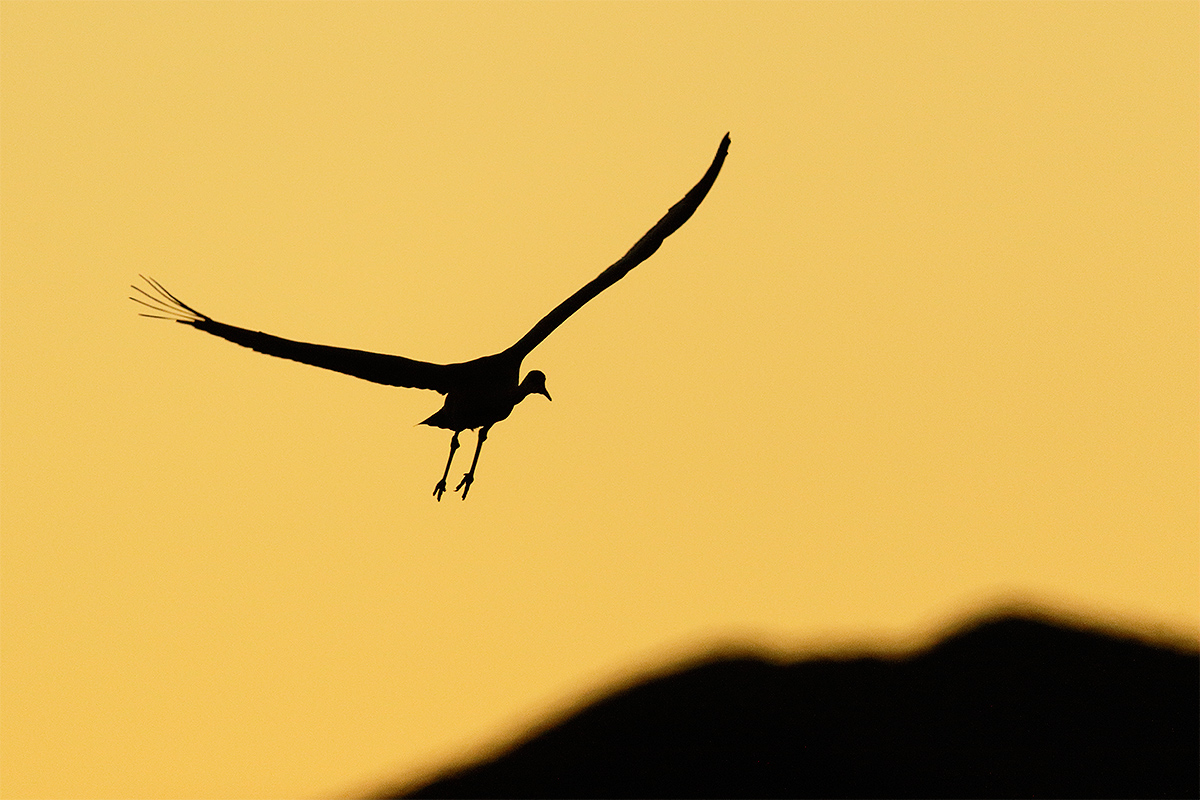
|
|
This Sandhill Crane image was also created on the clear early evening of November 20, 2014 just after sunset at Bosque del Apache NWR. Again I used the Gitzo 3532 LS carbon fiber tripod), the Mongoose M3.6 head, Canon EF 600mm f/4L IS II USM lens, the Canon Extender EF 1.4X III, and the Canon EOS 7D Mark II . ISO 1600. Evaluative metering + 1 stop as originally framed: 1/640 sec. at f/5.6 in Av mode. Color Temperature: 8000 K.
65-Point Automatic Selection Rear Focus/AI Servo AF selected and array of three sensors that covered the bird’s head and legs perfectly. (See the screen capture below.) The three sensors were active at the moment of exposure. Click here to see the latest version of the Rear Focus Tutorial. Click on the image to see a larger version.
Sandhill Crane landing Silhouette #2
|
Your Favorite?
Which of today’s two images is your favorite? Please take a moment to leave a comment and let us know why.
|
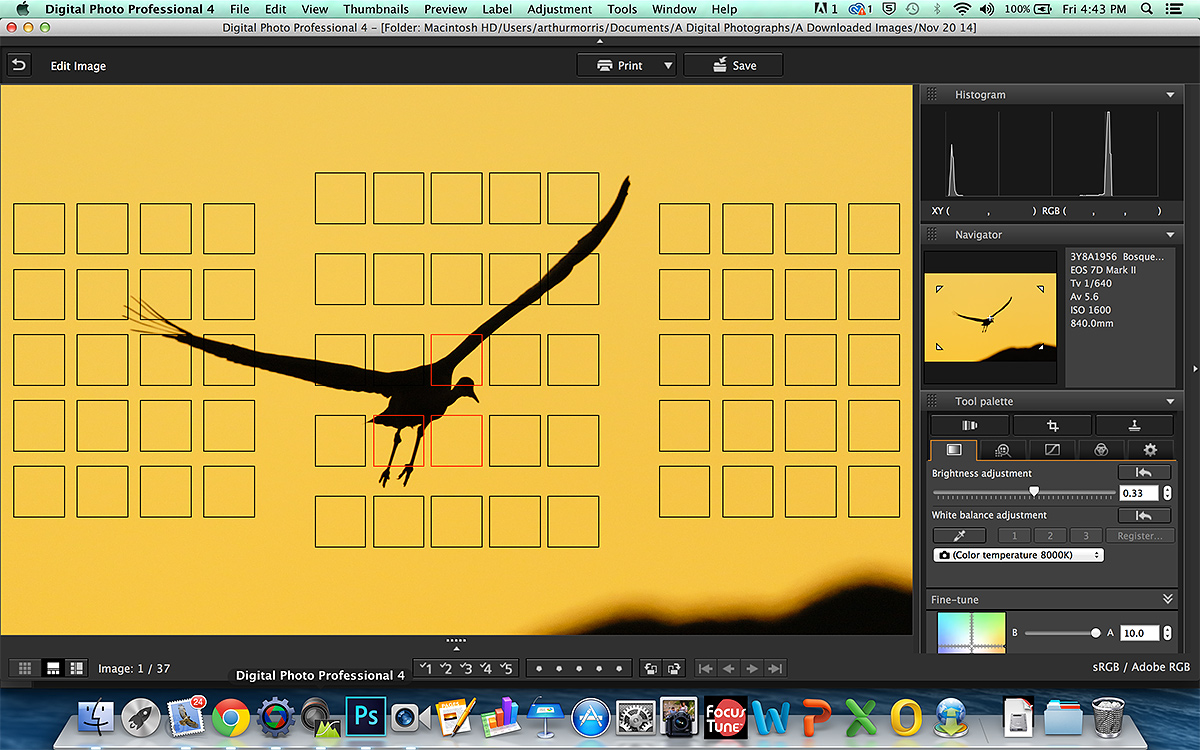
|
|
This is the DPP 4 screen capture for Image #2.
|
The DPP 4 Screen Capture
The DPP 4 screen capture for Image #2 shows the array of AF points that were selected by 65-Point Automatic Selection illuminated in red; pretty darned impressive it you ask me. Those with good eyes can see that I lightened the image 1/3 stop (.33) with the Brightness slider on the Perform basic image adjustment tab. For most images I also use the Adjust image detail tab (for NR), and the Perform image lens correction. For the first time ever I used Fine Tune to tweak the sky color.
|

|
|
DPP 4 is completely new and different from the various versions of DPP 3. It handles files only from the following cameras: EOS-1D X, EOS 5D Mark III, EOS-6D, and the EOS-7D Mark II.
|
Great 7D II/DPP v4.01.0 News
An updated version of Canon Digital Photo Professional that supports RAW files from the EOS-7D Mark II is available for download via the Canon USA website. Though some folks had trouble getting access to the Mac version of DPP v4.1.0.1 I was able to download and install it easily yesterday evening. Hint for Mac folks: after you double click on the downloaded zip file you need to go to your desktop and click on the icon that was magically created there in order to begin the installation.
To download DPP v4.1 first click here and then click on Drivers and Software and follow the prompts.
|

|
|
The Photographers’ Guide to Canon Digital Photo Professional 4.0 by Arash Hazeghi and Arthur Morris is now available. Click here to order.
|
The DPP 4 eGuide (PDF)
BIRDS AS ART is proud to announce the release of The Photographers’ Guide to Canon Digital Photo Professional 4.0 by Arash Hazeghi and Arthur Morris: $40.
Artie first went to DPP because he was not happy with the colors he was getting with 1D X and 5D III images from ACR (Adobe Camera Raw). Though less than intuitive, he found it fast and easy to use once he mastered the basics. He collaborated with Arash Hazeghi on the first DPP RAW Conversion Guide. Do understand that the DPP RAW Conversion Guide details the use of various iterations of DPP 3. He calls those the DPP 3.whatever versions. The latest version is DPP 3.14.41.0.
Some time ago Canon released DPP 4.0, completely and utterly new and different from DPP 3. When it was introduced DPP 4 worked only EOS-1D X, EOS-5D Mark III, and EOS-6D images and that is still the case today. It will not work with RAW files from older Canon digital camera bodies. Both authors are hoping that a new version of DPP 4 that will convert EOS-7D Mark II images will be released soon.
In the meantime, DPP 4 performs superbly with his 1D X and 5D III images. When he first opened DPP 4 he felt as if he were in the cockpit of a Boeing 747 and was being asked to fly it. There were so many tabs and buttons and controls that he simply closed the program. He immediately called Arash and asked him if he wanted to work together on a DPP 4 guide. After 100s of hours of work the guide is now ready to teach you to conveniently and easily use DPP 4 to create the finest possible image files from your 1D X, 5D III, and 6D image files. Basically, Arash sent artie a sophisticated outline that he re-crafted into a clear, concise, easily understood, and easy to follow how-to guide written in the BAA style. Arash created all of the charts, diagrams, and graphics.
His charts with recommendations for both Chrominance and Luminance Noise Reduction values for each of the 3 covered cameras at various ISO settings are alone worth the price of the book. He spent many dozens of hours experimenting with high ISO RAW files and shares his findings with you in the DPP 4 Guide. Folks will surely want to create some sort of easily accessible quick reference on their laptops and home computers.
DPP offers a host of great features some but not all of which are reminiscent of ACR. These include the following: Multi-image display, the extremely valuable Before/after Comparison layout, Highlight/shadow warnings, White Balance, and the eight RAW Conversion tabs that include sliders for Brightness, Highlights, Shadows, Contrast, Hue-Saturation, Color Tone, Sharpness, Noise Reduction, HSL (Hue/Saturation/Luminance), Lens Corrections, and Digital Lens Optimizer among others. We teach you how to best utilize each of those and many more. We share our slightly different DPP workflows and dozens of tips that will simply make your life easier. Arash uses DPP4′s rating system for choosing his keepers while artie continues to rely on BreezeBrowser Pro for that. DPP offers a variety of sorting filters. We explain all of the options. In addition, we teach you how to set your preferences and how to arrange your workspace for the greatest efficiency.
Both authors firmly believe that the manufacturer’s conversion algorithms will always out-perform 2nd party software when it comes to preserving image quality, fine detail, and accurate color rendition.
The authors wish to thank Chuck Westfall and Rudy Winston of Canon USA for their help; they are always available to answer our nit-picking questions. Sincere thanks also to Ken Kovak, Bob Schwartz, Dane Johnson, and John Stuhlmuller for their thoughtful and substantive reviews of late drafts of the DPP 4 manuscript.
You can order your copy of the DPP 4 Guide for $40 through the BAA Online Store by clicking here, by calling Jim or Jen in the office at 863-692-0906 with credit card in hand, by sending us a check made out to “Arthur Morris” or a money order for $40 to BIRDS AS ART, PO Box 7245, Indian Lake Estates, FL 33855, or by by sending a Paypal for $40 to e-mail. IN the latter two instances be sure to note DPP 4 Guide so we know what you are ordering :).
Note: the Sharpness and Noise Reduction Charts will be updated to include the recommended values for the 7D Mark II. I have been sending RAW files to Arash for several days. Now Arash has a lot more work to do. For those who have purchased the DPP 4 Guide, the update will of course be free but please be patient.
Those using older Canon camera bodies like the 1D Mark IV, the 7D, the 50D, the 40D, the various Rebels (not highly recommended for serious nature photography), are directed to the original DPP RAW Conversion Guide click here. DPP 3 (the latest version is DPP v3.14.41.0) does a fine job of converting images from the older camera bodies. I used it for several years.
DPP 4 eGuide Kudos via e-mail from Melvin Grey
Artie, Thank you very much for creating and sending the superb new guide and for the excellent service.THANK YOU and ARASH, once again, for an invaluable guide and THANK YOU for your continuing educational blogs. Melvin
|

|
|
Images and card design copyright 2014: Arthur Morris/BIRDS AS ART. Click on the card to enjoy a spectacular larger version.
|
The 2015 UK Puffins and Gannets IPT
June 29 through July 5, 2015: $5499: Limit 10 photographers/Openings 1. Two great leaders: Denise Ippolito and Arthur Morris.
Here are the plans for next year: take a red eye from the east coast of the US on 28 June arriving in Edinburgh, Scotland on the morning of Monday 29 June (or simply meet us then either at the Edinburgh Airport (EDI) or later in the day at our cottages if you are driving your own vehicle either from the UK or from somewhere in Europe. Stay 7 nights in two gorgeous modern country cottages.
There are 5 days of planned puffin/seabird trips—weather permitting, and 1 full day of gannet photography with 2 sessions on the boat.
|

|
|
Images and card design copyright 2014: Arthur Morris/BIRDS AS ART. Click on the card to enjoy a spectacular larger version.
|
The Details
We will be staying in upscale country-side cottages that are beyond lovely with large living areas and lots of open space for image sharing and Photoshop lessons. The shared rooms are decent-sized, each with two roomy single beds and a private bathroom. See the single supplement info below.
All breakfasts, lunches and dinners are included. All 5 puffins boat lunches will need to be prepared in advance, taken with, and consumed at your leisure. I usually eat mine on the short boat trip from one island to the other. Also included is a restaurant lunch on the gannet boat day and a farewell fine dining thank you dinner. The cost of your National Heritage Trust is also included; that covers the twice a day landing fees.
Plan to fly home on the early morning of Monday 6 July or to continue your stay or travels.
|

|
|
Images and card design copyright 2014: Arthur Morris/BIRDS AS ART. Click on the card to enjoy a spectacular larger version. Scroll down to join us in the UK in 2015.
|
Single Supplement Info
The single supplement is $1475. As we will be renting a third cottage the $1475 is due with your deposit and is also non-refundable.
If you are good to go please send your $2,000 deposit check now to save a spot. Please make your check out to “Arthur Morris” and send it to Arthur Morris/BIRDS AS ART, PO Box 7245, Indian Lake Estates, FL, 33855. If you cancel and the trip fills, we will be glad to apply a credit applicable to a future IPT for the full amount less a $100 processing fee. If we do not receive your check for the balance on or before the due date we will try to fill your spot from the waiting list. Whether or not your spot is filled, you will lose your deposit. If not, you can secure your spot by paying your balance.
We do hope that you can join us.
Facebook
Be sure to like and follow BAA on Facebook by clicking on the logo link upper right. Tanks a stack!
Support the BAA Blog. Support the BAA Bulletins: Shop B&H here!
We want and need to keep providing you with the latest free information, photography and Photoshop lessons, and all manner of related information. Show your appreciation by making your purchases immediately after clicking on any of our B&H or Amazon Affiliate links in this blog post. Remember, B&H ain’t just photography!
…..
Amazon.com
Those who prefer to support BAA by shopping with Amazon may use this link:
Amazon Canada
Many kind folks from north of the border, eh, have e-mailed stating that they would love to help us out by using one of our affiliate links but that living in Canada and doing so presents numerous problems. Now, they can help us out by using our Amazon Canada affiliate link by starting their searches by clicking here. Many thanks to those who have written.
Typos
In all blog posts and Bulletins, feel free to e-mail or to leave a comment regarding any typos or errors. Just be right :).
November 21st, 2014 Great “Love Affair” News
I learned yesterday that my Canon EoL-sponsored program, “A Twenty Year Love Affair With Bosque,” is not only free and open to the public but that folks do not need to register. Just show up at the Bodega Restaurant in Socorro at 1pm and enjoy: 606 N California St. The program will be over at 2:40pm so you will be have time to get out and enjoy some sweet afternoon light. Blog readers who attend are welcome to come up and give me a hug.
The Streak Continues: 356
Denise and I rocked ’em on our first Festival Bosque Early Morning In the Field workshop. We had sixteen folks who were working with about 13 different camera bodies including several that I had never seen or heard of before. Blog regular and IPT veteran David Policansky helped us out with various menu items on bodies like the 6D, 60D, and the 7D. Though the pre-dawn light was pretty boring everyone learned a ton. Same at the crane pool. And then we re-visited the new flooded field from the previous night. It was very good but for the seemingly omnipresent northwest breeze. Everyone received lots of individual attention and everyone went home very happy. By 10:30 there were lots of farewell-for-now hugs as we headed back to town to get ready for our seminar this afternoon.
The nineteen folks who attended the seminar all learned a ton and went home inspired. This blog post, the 356th in a row, took about 1 1/2 hours to prepare. It was published from my hotel room in Socorro, NM just before 4:30am.
Please Help Support My Work on the BAA Blog
Thanks a Stack! October was a Great Month.
The last six weeks have been quite rewarding with more and more folks making it a habit to use my B&H links especially for their major gear purchases. It is great to feel appreciated. Thanks a stack to all who used our links for purchases large and small.
To show your appreciation for my efforts here, we ask, as always, that you use our the B&H and Amazon affiliate links on the right side of the blog for all of your purchases. B&H Is recommended for you major photography gear purchases, Amazon for your household, entertainment, and general purpose stuff. Please check the availability of all photographic accessories in the BIRDS AS ART Online Store, especially Gitzo tripods, Wimberley tripod heads, and the like. We sell only what I have used, have tested, and can depend on. We will not sell you junk. We know what you need to make creating great images easy and fun. And we are always glad to answer your gear questions via e-mail.
I would of course appreciate your using our B&H affiliate links for all of your major gear, video, and electronic purchases. For the photographic stuff mentioned in the paragraph above we, meaning BAA, would of course greatly appreciate your business. Here is a huge thank you to the many who have been using our links on a regular basis and visiting the BAA Online store as well.
Fire in the Sky
After a long tiring day for both of us we were rewarded with a wonderful sunset. Water was added to a new field and there were probably 20,000 birds there that first afternoon. At first the sunset promised to be amazing. Then it looked like a fizzle. And then it was amazing.
The only bummer was that the huge flock did not blast off until well after dark…. But it was a sight to see.
Like New Canon EF 200-400mm f/4L IS USM lens with Internal 1.4x Extender for Sale
Sold
Bob Taylor is offering a rarely used Canon EF 200-400mm f/4L IS USM lens with Internal 1.4x Extender in like new condition for the amazingly low price of $9799, $2,000 less than the than price of a new one at B&H, $11,7999.
The sale includes the E-145C Lens Cap (actually a lens hood made of tough synthetic fabric, the rearlens cap, the lens wide strap, the ET-120 Lens Hood, the lens trunk, a LensCoat, the lens manual, and and insured shipping via UPS Ground to US addresses only. The lens and other items listed below will be shipped only after your check clears unless other arrangements are made.
Contact Bob by phone at 1(408)532-7738, on his cell at 1(408)202-0086 or via bobt8840@gmail.com. Pacific time zone.
You seen my images made with this great, versatile lens. Gets you from 200 to 560mm in an instant, and to 784mm with the additional of an external 14X TC. It is my favorite early morning fly-out lens at Bosque. I would never think of heading to Africa, the Southern Ocean, or the Galapagos without mine. If you live in a location with relatively tame birds like Florida or San Diego, or if you live out west and photograph the large mammals, this is likely the best lens for you. And you have never seen a price this low for one in like new condition before. If you have been seriously considering this lens, please do not hesitate.
Selling Your Used Photo Gear Through BIRDS AS ART
Selling your used (or like-new) photo gear through the BAA Blog or via a BAA Online Bulletin is a great idea. We charge only a 5% commission. One of the more popular used gear for sale sites charges a minimum of 20% plus assorted fees! Yikes. The minimum item price here is $500 (or less for a $25 fee). If you are interested please e-mail with the words Items for Sale Info Request cut and pasted into the Subject line :). Stuff that is priced fairly–I offer free pricing advice, usually sells in no time flat. In the past few months, we have sold just about everything in sight. Do know that prices on some items like the EOS-1D Mark IV, the EOS-7D, and the original 400mm IS DO lens, have been dropping steadily.
You can see the complete current listings here.
Price Drops!
Used EOS-1D Mark IV Digital Camera Body
Price reduced $549 on 11/21/2014!
Multiple IPT veteran and good friend Monte Brown is offering a used EOS-1D Mark IV digital camera body in excellent condition (with about 22,000 shutter actuations) for $1900. The sale includes the charger and an extra battery, the original box, cables, software, manuals, and insured ground shipping to US addresses only. Your camera will be shipped only after your check clears unless other arrangements are made.
Please contact Monte via e-mail or by phone at 765-744-1421 (Eastern time).
Two Mark IVs served as my workhorse bodies for more than three years.
Used Canon EF 70-200mm f/4L IS Zoom Lens
Price reduced $74 on 11/21/2014!
Multiple IPT veteran and good friend Monte Brown is offering a used Canon EF 70-200mm f/4L IS Zoom Lens in very good to excellent condition for only $725. The sale includes both front and rear lens caps, the older-style tough fabric case, the original box, and insured ground shipping to US addresses only. Your lens will be shipped only after your check clears unless other arrangements are made.
Please contact Monte via e-mail or by phone at 765-744-1421 (Eastern time).
I used this lens for about two years. It makes a great lightweight, intermediate telephoto lens that is sharp, easily hand held, and works well with a 1.4X teleconverter. It is great for hand held flight photography and would go great with a 7D II as a starter bird photography lens for folks who work around relatively tame birds.
IPT Updates
Would you like to visit some of the great bird photography locations on the planet? Would you like to learn from the best? Click here and join us.
Facebook
Be sure to like and follow BAA on Facebook by clicking on the logo link upper right. Tanks a stack!
Support the BAA Blog. Support the BAA Bulletins: Shop B&H here!
We want and need to keep providing you with the latest free information, photography and Photoshop lessons, and all manner of related information. Show your appreciation by making your purchases immediately after clicking on any of our B&H or Amazon Affiliate links in this blog post. Remember, B&H ain’t just photography!
…..
Amazon.com
Those who prefer to support BAA by shopping with Amazon may use this link:
Amazon Canada
Many kind folks from north of the border, eh, have e-mailed stating that they would love to help us out by using one of our affiliate links but that living in Canada and doing so presents numerous problems. Now, they can help us out by using our Amazon Canada affiliate link by starting their searches by clicking here. Many thanks to those who have written.
Typos
In all blog posts and Bulletins, feel free to e-mail or to leave a comment regarding any typos or errors. Just be right :).
November 20th, 2014 Great “Love Affair” News
I just learned that my Canon EoL-sponsored program, “A Twenty Year Love Affair With Bosque,” is not only free and open to the public but that folks do not need to register. Just show up at the Bodega Restaurant in Socorro at 1pm and enjoy: 606 N California St. The program will be over at 2:40pm so you will be have time to get out and enjoy some sweet afternoon light. Blog readers who attend are welcome to come up and give me a hug.
The Streak Continues: 355
On Tuesday night I was sick as a dog after eating some un-refrigerated left-overs…. Can you say food poisoning? Not fun. The only thing that saved me is the fact that I travel with activated charcoal tablets and downed most of the bottle during the night. I slept very little but felt well enough to head down to the refuge at 6:15am. I missed some sublime predawn colors.
I dropped off the 100-400 II at Fed Ex just south of the airport; it will be back to Canon at the new HQ at Melville, long Island, NY before 9am tomorrow. I was sad to see it go :(. Then I continued on to ABQ to pick up Lady D.
The geese were right next to the road just past the paybooth as Denise and I were setting up our gear, having headed to the refuge practically straight from the airport. By the time we were ready to spring into action, the last of the geese floating in still blue water had departed.
After a superb night’s sleep I am feeling a thousand times better than yesterday. This blog post, the 355th in a row, took about 2 1/2 hours to prepare. It was published from my hotel room in Socorro, NM at 4:15am.
If you are in Bosque right now it would be best not to miss our seminar at the Festival this afternoon :).
Please Help Support My Work on the BAA Blog
Thanks a Stack! October was a Great Month.
The last six weeks have been quite rewarding month with more and more folks making it a habit to use my B&H links especially for their major gear purchases. It is great to feel appreciated. Thanks a stack to all who used our links for purchases large and small.
To show your appreciation for my efforts here, we ask, as always, that you use our the B&H and Amazon affiliate links on the right side of the blog for all of your purchases. B&H Is recommended for you major photography gear purchases, Amazon for your household, entertainment, and general purpose stuff. Please check the availability of all photographic accessories in the BIRDS AS ART Online Store, especially Gitzo tripods, Wimberley tripod heads, and the like. We sell only what I have used, have tested, and can depend on. We will not sell you junk. We know what you need to make creating great images easy and fun. And we are always glad to answer your gear questions via e-mail.
I would of course appreciate your using our B&H affiliate links for all of your major gear, video, and electronic purchases. For the photographic stuff mentioned in the paragraph above we, meaning BAA, would of course greatly appreciate your business. Here is a huge thank you to the many who have been using our links on a regular basis and visiting the BAA Online store as well.

 If what you’ve learned here on my blog about the Canon EOS-7D Mark II has inspired you to purchase this great new camera body, please consider using the logo link above to support our efforts here in bringing you the latest, greatest educational materials on daily basis.
If what you’ve learned here on my blog about the Canon EOS-7D Mark II has inspired you to purchase this great new camera body, please consider using the logo link above to support our efforts here in bringing you the latest, greatest educational materials on daily basis.
|
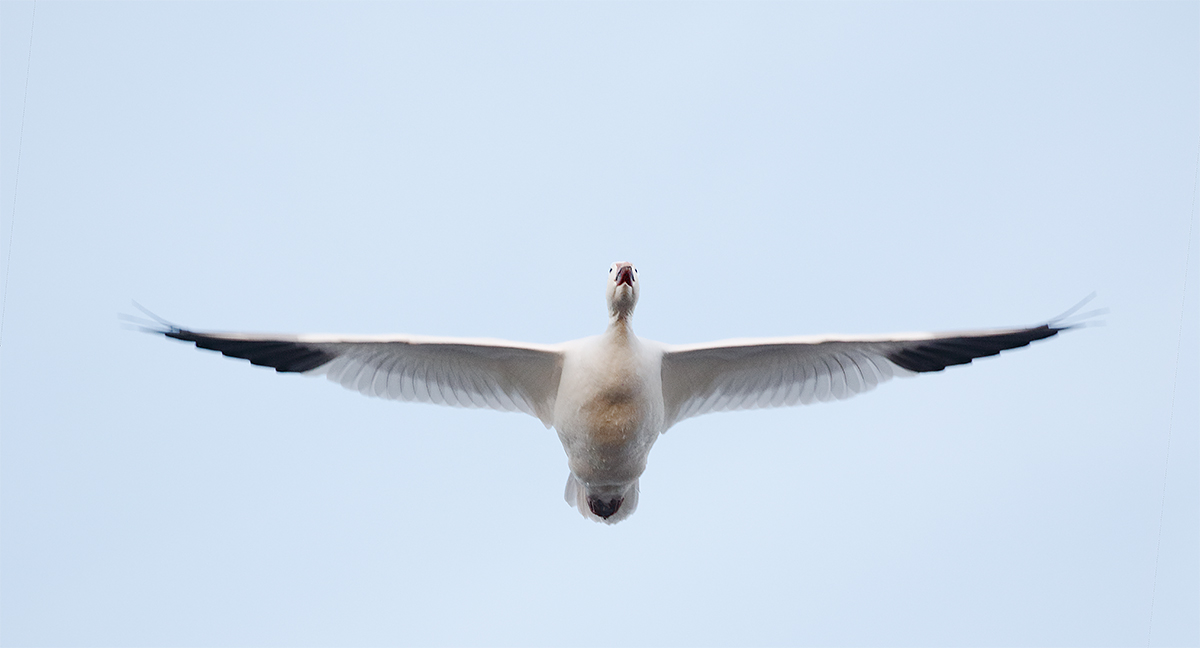
|
|
This image was created on Wednesday morning past with the Canon EF 100-400mm f/4.5-5.6L IS II USM lens (hand held at 400mm) and the Canon EOS 7D Mark II. ISO 1600. Evaluative metering +2 1/3 stops: 1/1000 sec. at f/5.6 in Manual mode.
Central sensor AI Servo/Surround Rear Button AF on the bird’s face was active at the moment of exposure. Click here to see the latest version of the Rear Focus Tutorial. Click on the image to see a larger version.
|
Canon 100-400mm IS L II/7D Mark II: 640 Hand Held for Flight Rocks
I had only limited opportunities to work with the 100-400II. And none really in an excellent flight situation. That said, I did get to use it some on Wednesday morning at one of the crane pools. BTW, both crane pools are in pretty poor shape and the one to the north is completely overgrown. Refuge manager Kevin Cobble explained that unexpected but welcome rain left both pools too muddy to be plowed and disked. In addition, we have had winds from the NW every morning since I arrived. The cranes take off to the west without offering any good flight photography chances.
Hand holding the 100-400 II will take a bit of getting used to as it does not balance as nicely as the original one; I find it a bit awkward as I did the Canon EF 70-300mm f/4-5.6L IS USM lens. I am sure that folks who own and use the new 100-400 will get used to it quickly. I hope to be one of those. The lens trend lately is lighter and lighter and the 7D II drives the whole shooting match….
|
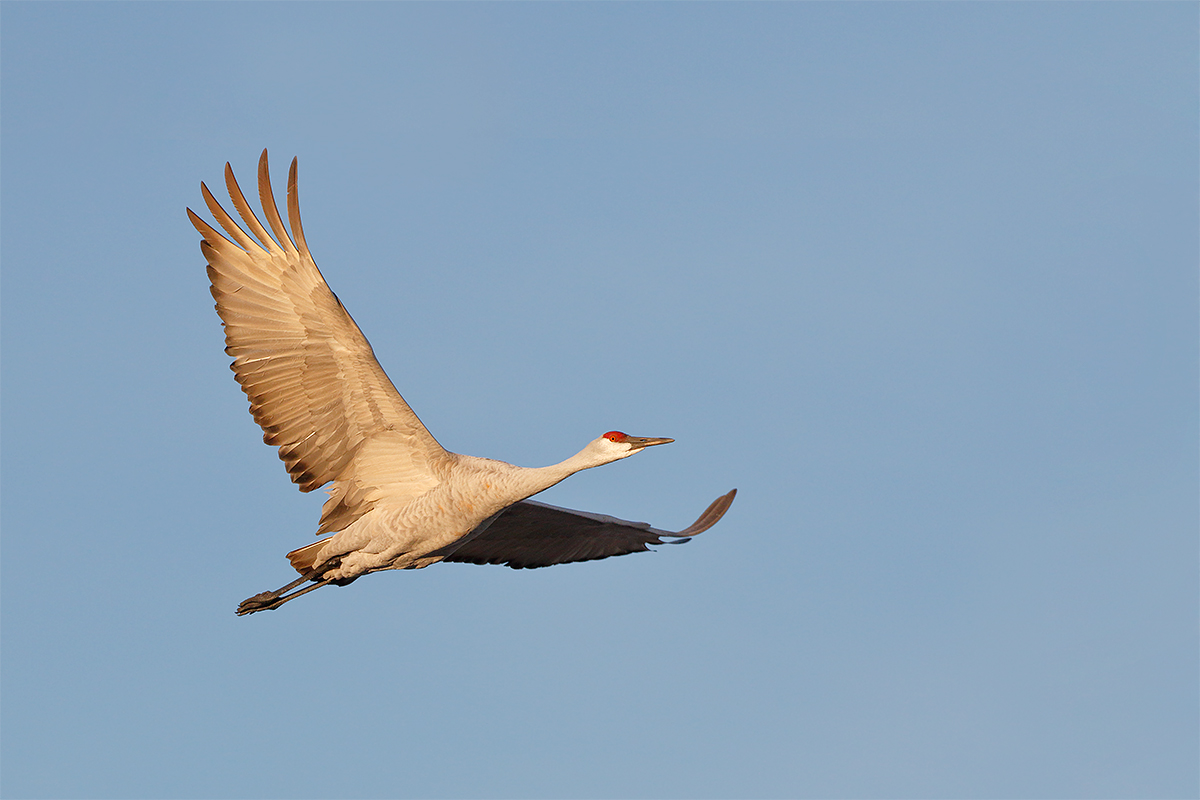
|
|
This image was also created on Wednesday morning past with the Canon EF 100-400mm f/4.5-5.6L IS II USM lens (hand held at 255mm) and the Canon EOS 7D Mark II. ISO 800. Evaluative metering off the yellow grass at zero: 1/2000 sec. at f/7.1 in Manual mode.
Central sensor AI Servo/Surround Rear Button AF on the bird’s butt as originally framed was active at the moment of exposure. Click here to see the latest version of the Rear Focus Tutorial. Click on the image to see a larger version.
|
Several Important Things to Note
1: 7D Mark II AF is indeed remarkable.
2: Having the ability to zoom out for flight photography.
3: The new Canon EF 100-400mm f/4.5-5.6L IS II USM lens will have two primary uses:
a: hanging on a Black Rapid RS-7 strap as an auxiliary intermediate flight lens for folks toting big glass.
b: as the main lens of folks who can not afford or carry one of the super-telephotos.
4: The Canon EF 100-400mm f/4.5-5.6L IS II USM lens in combination with the Canon EOS 7D Mark II will further revolutionize bird photography opening up a new world to both beginning bird photographers and birders curious about photographing birds.
|
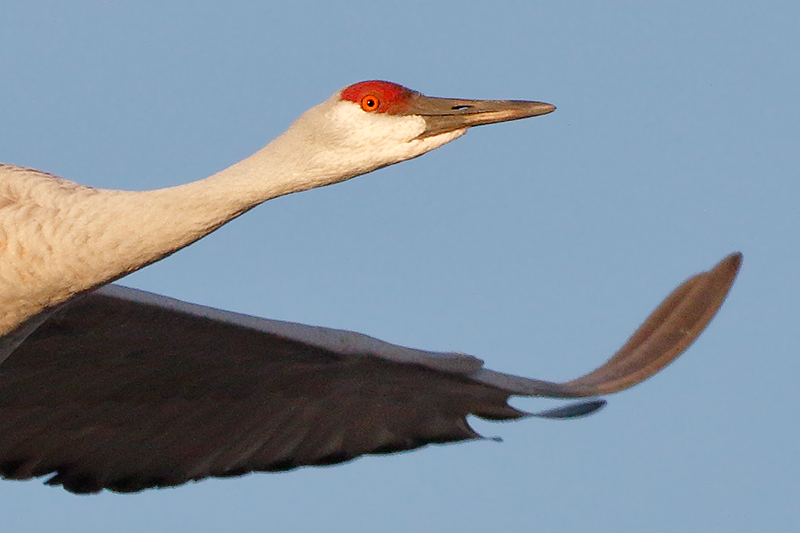
|
|
This sharpened JPEG represents a 200% view of the optimized image. Amazingly, the optimized image that opened this blog post is a fairly substantial crop. See more below.
|
Whaddy Think?
Considering that the optimized image was a decent crop I would say that both sharpness and image quality are astoundingly good. Background noise was smoothed with a small dose of Filter > Blur > Surface Blur. In addition I did some Eye Doctor work and sharpened the face only with a contrast mask. The subject bird was moved down and back in the frame using techniques from APTATS II and clean-up was done using techniques from APTATS II and Denise Ippolito’s protective cloning on a layer techniques. See more below.
|
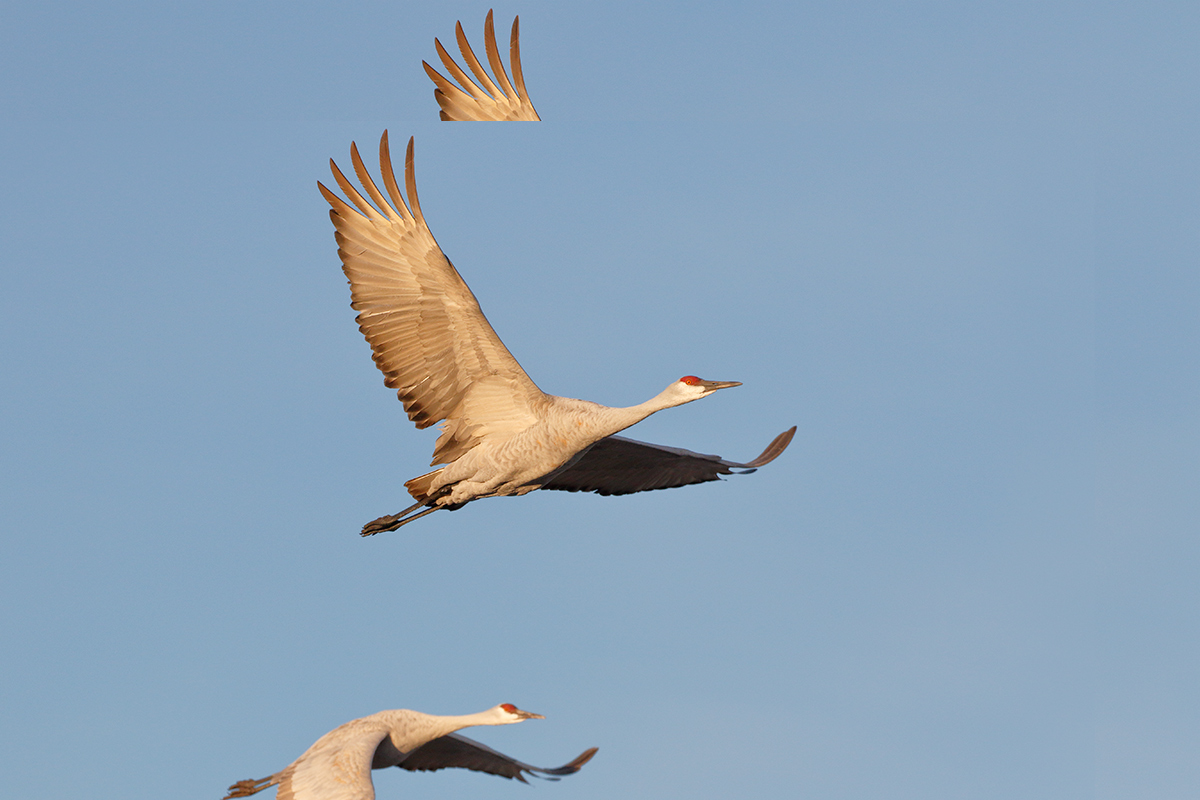
|
|
This is an in-progress JPEG. It shows where I was at after moving the bird down and back in the frame.
|
Digital Basics
Everything that I did to optimize today’s image is covered in detail in my Digital Basics File–written in my easy-to-follow, easy-to-understand style. Are you tired of making your images look worse in Photoshop? Digital Basics File is an instructional PDF that is sent via e-mail. It includes my complete digital workflow, dozens of great Photoshop tips (including the Surface Blur settings as taught to me by Denise Ippolito), details on using all of my image clean-up tools, the use of Contrast Masks, several different ways of expanding and filling in canvas, all of my time-saving Keyboard Shortcuts, Quick Masking, Layer Masking, and NIK Color Efex Pro basics, Contrast Masks, Digital Eye Doctor techniques, using Gaussian Blurs, Tim Grey Dodge and Burn, a variety of ways to make selections, how to create time-saving actions, and tons more.
APTATS I & II
Learn the details of advanced Quick Masking techniques in APTATS I. Learn Advanced Layer Masking Techniques in APTATS II. Mention this blog post and apply a $5 discount to either with phone orders only. Buy both APTATS I and APTATS II and we will be glad to apply at $15 discount with phone orders only. Please call Jim or Jennifer at 863-692-0906 weekdays to order.
The Bosque Site Guide
All BAA Site Guides are designed so that with a bit of study you can show up at a great place and know exactly where to be at what time on what wind and in what lighting conditions. With a Site Guide on your laptop you will feel like a 20-year veteran even on your first visit. Site Guides are the next best thing to being on an IPT. If you plan on visiting the refuge it would be foolish to make the trip without having this guide in hand. Why spend money on gear and travel and then spend days stumbling around in the wrong spots? If you have visited previously, and are still unsure of where you should be at this time of day with that wind, this guide will prove invaluable to you as well.
You can order yours here or check out all of our site guides here.
Canon Telephoto Lens Specifications, Info, and Links; Bookmark This Page!
I have added the 100-400II to the chart here. Bookmark this page and consult it often as it makes comparing different lenses an easy chore. The chart includes weight in both pounds and kilograms, MFDs in feet and inches and in meters, magnification, filter size, and the year of introduction.
IPT Updates
Would you like to visit some of the great bird photography locations on the planet? Would you like to learn from the best? Click here and join us.
|

|
|
Morro Bay offers a wealth of very attractive natural history subjects in a variety of attractive settings.
|
2015 Morro Bay 5-DAY BIRDS AS ART Instructional Photo-Tour (IPT): MAR 14 thru MAR 18, 2015: $1999 (Limit: 8/Openings: 8.)
Meet and Greet after dinner on your own at 8:00pm on MAR 13.
Join me in one of the most beautiful and scenic places on the planet to photograph a large variety of birds of the sea and shore. As above, the star of the show will be Long-billed Curlew. There will be lots of Marbled Godwits and Willets as well as lots of the smaller shorebird species. Black Oystercatcher is likely and we should get to photograph large flocks of Western Sandpipers in flight over the bay. With any luck we should enjoy some great sunrise and sunset photography. There are lots of gulls including Western, California, and Mew. There is one good location where we should get to photograph Western, Clarke’s, Eared, and Pied-billed Grebe, Lesser Scaup, and Common Loon. We may get to photograph some passerines including Anna’s Hummingbird, Brewer’s Blackbird, and White-crowned Sparrow. And we have a chance for several species of raptors. Yikes, I almost forgot California Poppy. And California Ground Squirrel. Sea Otters are also possible.
This IPT will include five 3 1/2 hour morning photo sessions, five 2 1/2 hour afternoon sessions, five lunches, after-lunch image review and Photoshop sessions, and of course tons of great in-the-field instruction and photographic instruction. To ensure early starts, breakfasts will be your responsibility.
A $499 non-refundable deposit is required to hold your slot for this IPT. You can send a check (made out to “Arthur Morris) to use at BIRDS AS ART, PO Box 7245, Indian Lake Estates, FL, 33855. Or call Jim or Jennifer at the office with a credit card at 863-692-0906. Your balance, payable only by check, will be due on 12/1//2014. If the trip fills, we will be glad to apply a credit applicable to a future IPT for the full amount less a $100 processing fee. If we do not receive your check for the balance on or before the due date we will try to fill your spot from the waiting list. If your spot is filled, you will lose your deposit. If not, you can secure your spot by paying your balance. Please print, complete, and sign the form that is linked to here and shoot it to us along with your deposit check. If you register by phone, please print, complete and sign the form as noted above and either mail it to us or e-mail the scan. If you have any questions, please feel free to contact me via e-mail.
See lots more Morro Bay images here.
Facebook
Be sure to like and follow BAA on Facebook by clicking on the logo link upper right. Tanks a stack!
Support the BAA Blog. Support the BAA Bulletins: Shop B&H here!
We want and need to keep providing you with the latest free information, photography and Photoshop lessons, and all manner of related information. Show your appreciation by making your purchases immediately after clicking on any of our B&H or Amazon Affiliate links in this blog post. Remember, B&H ain’t just photography!
…..
Amazon.com
Those who prefer to support BAA by shopping with Amazon may use this link:
Amazon Canada
Many kind folks from north of the border, eh, have e-mailed stating that they would love to help us out by using one of our affiliate links but that living in Canada and doing so presents numerous problems. Now, they can help us out by using our Amazon Canada affiliate link by starting their searches by clicking here. Many thanks to those who have written.
Typos
In all blog posts and Bulletins, feel free to e-mail or to leave a comment regarding any typos or errors. Just be right :).
|
|

